
啓蒙の時代
Age of Enlightenment
In the Salon of Madame Geoffrin in 1755. Reading of Voltaire's tragedy, The Orphan of China, in the salon of Marie Thérèse Rodet Geoffrin, by Anicet Charles Gabriel Lemonnier, c. 1812[a]
1755年、マダム・ジョフルランのサロンにて。マリー・テレーズ・ロデ・ジョフルランのサロンにおけるヴォルテールの悲劇『中国の孤児』の朗読。アニセ・シャルル・ガブリエル・ルモニエ作、約1812年
☆啓蒙時代(Age of
Enlightenment
,理性時代とも呼ばれる)は、ヨーロッパと西洋文明の歴史における一時期である。この時代には、啓蒙主義という [b]
知的[6]かつ文化的[6]な運動が隆盛を極めた。17世紀後半[6]に西ヨーロッパ[7]で始まり、18世紀に頂点を迎えた。その思想はヨーロッパ
[7]全域に広がり、アメリカ大陸やオセアニアの植民地にも及んだ。[8][9][10]
理性、経験的証拠、科学的方法を重視する特徴を持ち、啓蒙主義は個人の自由、宗教的寛容、進歩、自然権の理念を推進した。その思想家たちは立憲政府、政教
分離、社会・政治改革への合理的原則の適用を提唱した。[11][12] [13]
啓蒙思想は、16世紀から17世紀にかけての科学革命を基盤として発展した。ガリレオ・ガリレイ、ヨハネス・ケプラー、フランシス・ベーコン、ピエール・
ガッサンディ、クリスティアン・ホイヘンス、アイザック・ニュートンらによる科学的探究の新手法が確立されたこの革命が、その礎となったのである。哲学的
基盤はルネ・デカルト、トマス・ホッブズ、バルーフ・スピノザ、ジョン・ロックらによって築かれた。彼らの理性、自然権、経験的知識に関する思想は啓蒙思
想の中核となった。啓蒙主義の始まりを特定する時期としては、1637年にデカルトが『方法序説』を出版したことが挙げられる。この著作では、確固たる根
拠がない限りあらゆるものを体系的に疑う方法論が示され、有名な「我思う、故に我あり(Cogito, ergo
sum)」という命題が提示された。また、ニュートンの『プリンキピア・マテマティカ』(1687年)の出版を科学革命の頂点かつ啓蒙主義の始まりとする
見解もある[14][15][16]。ヨーロッパの歴史家たちは伝統的に、その始まりを1715年のフランス国王ルイ14世の死、終わりを1789年のフ
ランス革命勃発と定めてきた。現在では多くの歴史家が啓蒙主義の終焉を19世紀の始まりと位置付け、最も新しい提案では1804年のイマヌエル・カントの
死をその年としている。[17]
| The Age of
Enlightenment (also the Age of Reason) was a period in the history of
Europe and Western civilization[1] during which the Enlightenment,[b]
an intellectual[6] and cultural[6] movement, flourished, emerging in
the late 17th century[6] in Western Europe[7] and reaching its peak in
the 18th century, as its ideas spread more widely across Europe[7] and
into the European colonies, in the Americas and Oceania.[8][9][10]
Characterized by an emphasis on reason, empirical evidence, and
scientific method, the Enlightenment promoted ideals of individual
liberty, religious tolerance, progress, and natural rights. Its
thinkers advocated for constitutional government, the separation of
church and state, and the application of rational principles to social
and political reform.[11][12][13] The Enlightenment emerged from and built upon the Scientific Revolution of the 16th and 17th centuries, which had established new methods of empirical inquiry through the work of figures such as Galileo Galilei, Johannes Kepler, Francis Bacon, Pierre Gassendi, Christiaan Huygens and Isaac Newton. Philosophical foundations were laid by thinkers including René Descartes, Thomas Hobbes, Baruch Spinoza, and John Locke, whose ideas about reason, natural rights, and empirical knowledge became central to Enlightenment thought. The dating of the period of the beginning of the Enlightenment can be attributed to the publication of Descartes' Discourse on the Method in 1637, with his method of systematically disbelieving everything unless there was a well-founded reason for accepting it, and featuring his famous dictum, Cogito, ergo sum ('I think, therefore I am'). Others cite the publication of Newton's Principia Mathematica (1687) as the culmination of the Scientific Revolution and the beginning of the Enlightenment.[14][15][16] European historians traditionally dated its beginning with the death of Louis XIV of France in 1715 and its end with the outbreak of the French Revolution in 1789. Many historians now date the end of the Enlightenment as the start of the 19th century, with the latest proposed year being the death of Immanuel Kant in 1804.[17] The movement was characterized by the widespread circulation of ideas through new institutions: scientific academies, literary salons, coffeehouses, Masonic lodges, and an expanding print culture of books, journals, and pamphlets. The ideas of the Enlightenment undermined the authority of the monarchy and religious officials and paved the way for the political revolutions of the 18th and 19th centuries. A variety of 19th-century movements, including liberalism, socialism,[18] and neoclassicism, trace their intellectual heritage to the Enlightenment.[19] The Enlightenment was marked by an increasing awareness of the relationship between the mind and the everyday media of the world,[20] and by an emphasis on the scientific method and reductionism, along with increased questioning of religious dogma—an attitude captured by Kant's essay Answering the Question: What Is Enlightenment?, where the phrase sapere aude ('dare to know') can be found.[21] The central doctrines of the Enlightenment were individual liberty, representative government, the rule of law, and religious freedom, in contrast to an absolute monarchy or single party state and the religious persecution of faiths other than those formally established and often controlled outright by the State. By contrast, other intellectual currents included arguments in favour of anti-Christianity, Deism and Atheism, accompanied by demands for secular states, bans on religious education, suppression of monasteries, the suppression of the Jesuits, and the expulsion of religious orders. The Enlightenment also faced contemporary criticism, later termed the "Counter-Enlightenment" by Sir Isaiah Berlin, which defended traditional religious and political authorities against rationalist critique. |
啓蒙時代(理性時代とも呼ばれる)は、ヨーロッパと西洋文明の歴史にお
ける一時期である。この時代には、啓蒙主義という [b]
知的[6]かつ文化的[6]な運動が隆盛を極めた。17世紀後半[6]に西ヨーロッパ[7]で始まり、18世紀に頂点を迎えた。その思想はヨーロッパ
[7]全域に広がり、アメリカ大陸やオセアニアの植民地にも及んだ。[8][9][10]
理性、経験的証拠、科学的方法を重視する特徴を持ち、啓蒙主義は個人の自由、宗教的寛容、進歩、自然権の理念を推進した。その思想家たちは立憲政府、政教
分離、社会・政治改革への合理的原則の適用を提唱した。[11][12] [13] 啓蒙思想は、16世紀から17世紀にかけての科学革命を基盤として発展した。ガリレオ・ガリレイ、ヨハネス・ケプラー、フランシス・ベーコン、ピエール・ ガッサンディ、クリスティアン・ホイヘンス、アイザック・ニュートンらによる科学的探究の新手法が確立されたこの革命が、その礎となったのである。哲学的 基盤はルネ・デカルト、トマス・ホッブズ、バルーフ・スピノザ、ジョン・ロックらによって築かれた。彼らの理性、自然権、経験的知識に関する思想は啓蒙思 想の中核となった。啓蒙主義の始まりを特定する時期としては、1637年にデカルトが『方法序説』を出版したことが挙げられる。この著作では、確固たる根 拠がない限りあらゆるものを体系的に疑う方法論が示され、有名な「我思う、故に我あり(Cogito, ergo sum)」という命題が提示された。また、ニュートンの『プリンキピア・マテマティカ』(1687年)の出版を科学革命の頂点かつ啓蒙主義の始まりとする 見解もある[14][15][16]。ヨーロッパの歴史家たちは伝統的に、その始まりを1715年のフランス国王ルイ14世の死、終わりを1789年のフ ランス革命勃発と定めてきた。現在では多くの歴史家が啓蒙主義の終焉を19世紀の始まりと位置付け、最も新しい提案では1804年のイマヌエル・カントの 死をその年としている。[17] この運動は、新たな機関——科学アカデミー、文芸サロン、喫茶店、フリーメイソンロッジ、そして書籍・雑誌・パンフレットといった拡大する印刷文化——を 通じた思想の広範な流通によって特徴づけられた。啓蒙思想は君主制や宗教指導者の権威を揺るがし、18世紀から19世紀にかけての政治革命への道を開い た。自由主義、社会主義[18]、新古典主義など19世紀の様々な運動は、その知的源流を啓蒙思想に求める。[19] 啓蒙主義は、精神と世界の日常的媒体[20]との関係に対する認識の高まり、科学的メソッドと還元主義の重視、そして宗教的教義への疑問の増大によって特 徴づけられた。この姿勢はカントの論文『啓蒙とは何か』に表れており、そこには「知れと敢えて言え(sapere aude)」というフレーズが見られる。[21] 啓蒙主義の中核的教義は、個人の自由、代議制政府、法の支配、宗教的自由であった。これらは絶対君主制や一党独裁国家、国家が公式に確立ししばしば直接支 配する宗教以外の信仰に対する迫害と対比される。一方、他の知的潮流には反キリスト教、自然神論、無神論を支持する主張も含まれ、世俗国家の要求、宗教教 育の禁止、修道院の廃止、イエズス会の弾圧、修道会の追放などが伴った。啓蒙主義はまた、後にアイザイア・バーリン卿によって「反啓蒙主義」と称されるよ うになった当時の批判にも直面した。これは合理主義的批判に対して伝統的な宗教的・政治的権威を擁護する立場であった。 |
| Influential intellectuals For a more comprehensive list, see List of intellectuals of the Enlightenment. The Age of Enlightenment was preceded by and closely associated with the Scientific Revolution.[22] Earlier philosophers whose work influenced the Enlightenment included Francis Bacon, Pierre Gassendi, René Descartes, Thomas Hobbes, Baruch Spinoza, John Locke, Pierre Bayle, and Gottfried Wilhelm Leibniz.[23][24] Some of the figures of the Enlightenment included Cesare Beccaria, George Berkeley, Denis Diderot, David Hume, Immanuel Kant, Lord Monboddo, Montesquieu, Jean-Jacques Rousseau, Adam Smith, Hugo Grotius, and Voltaire.[25] One of the most influential Enlightenment publications was the Encyclopédie (Encyclopedia). Published between 1751 and 1772 in 35 volumes, it was compiled by Diderot, Jean le Rond d'Alembert, and a team of 150 others. The Encyclopédie helped spread the ideas of the Enlightenment across Europe and beyond.[26] Other publications of the Enlightenment included Locke's A Letter Concerning Toleration (1689) and Two Treatises of Government (1689); Berkeley's A Treatise Concerning the Principles of Human Knowledge (1710), Voltaire's Letters on the English (1733) and Philosophical Dictionary (1764); Hume's A Treatise of Human Nature (1740); Montesquieu's The Spirit of the Laws (1748); Rousseau's Discourse on Inequality (1754) and The Social Contract (1762); Cesare Beccaria's On Crimes and Punishments (1764); Adam Smith's The Theory of Moral Sentiments (1759) and The Wealth of Nations (1776); and Kant's Critique of Pure Reason (1781).[citation needed] |
影響力のある知識人 より包括的なリストについては、啓蒙思想家のリストを参照のこと。 啓蒙時代は科学革命に先行し、密接に関連していた。[22] 啓蒙思想に影響を与えた初期の哲学者には、フランシス・ベーコン、ピエール・ガッサンディ、ルネ・デカルト、トマス・ホッブズ、バルーフ・スピノザ、ジョ ン・ロック、ピエール・ベイル、ゴットフリート・ヴィルヘルム・ライプニッツらが含まれる。[23] [24] 啓蒙主義の代表的な人物には、チェーザレ・ベッカリア、ジョージ・バークリー、ドニ・ディドロ、デイヴィッド・ヒューム、イマヌエル・カント、モンボド 卿、モンテスキュー、ジャン=ジャック・ルソー、アダム・スミス、ウーゴ・グロティウス、ヴォルテールらがいる。[25] 啓蒙思想で最も影響力のある出版物の一つが『百科全書』(Encyclopédie)だ。1751年から1772年にかけて全35巻で刊行され、ディド ロ、ジャン・ル・ロン・ダルランベール、そして150人以上のチームによって編纂された。『百科全書』は啓蒙思想の理念をヨーロッパ全土およびその外へ広 めるのに貢献した。[26] 啓蒙思想のその他の著作には、ロックの『寛容に関する書簡』(1689年)と『二つの政府論』(1689年)、バークリーの『人間の知識の原理に関する論 考』(1710年)、ヴォルテールの『英国論』(1733年)と『哲学辞典』(1764年)、 ヒュームの『人間本性論』(1740年)、モンテスキューの『法の精神』(1748年)、ルソーの『不平等起源言説』(1754年)と『社会契約論』 (1762年)、 チェーザレ・ベッカリアの『犯罪と刑罰について』(1764年);アダム・スミスの『道徳感情論』(1759年)と『国富論』(1776年);そしてカン トの『純粋理性批判』(1781年)。[出典が必要] |
| Topics Philosophy Main article: Enlightenment philosophy 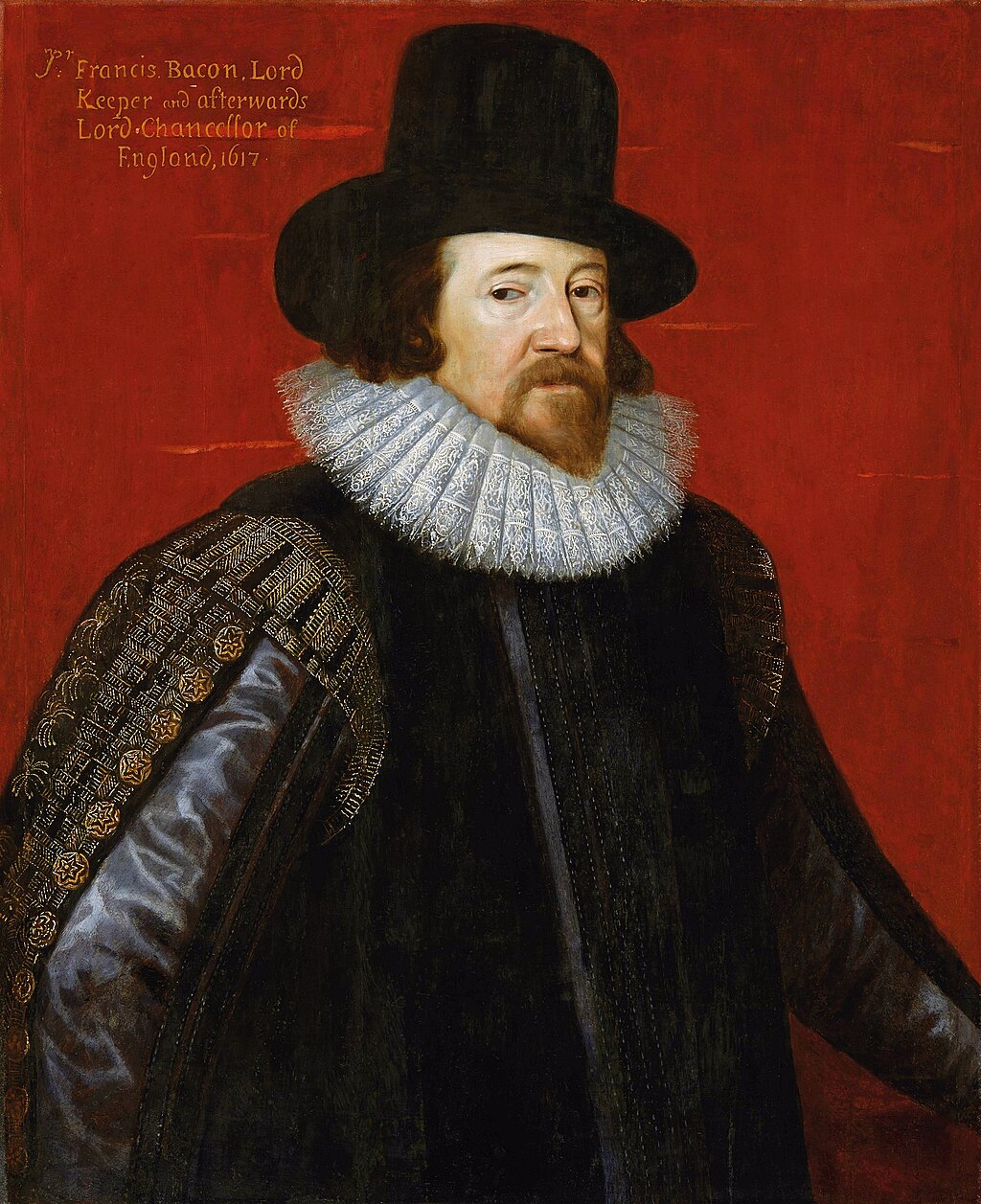 English philosopher Francis Bacon's work is considered foundational to the age of enlightenment 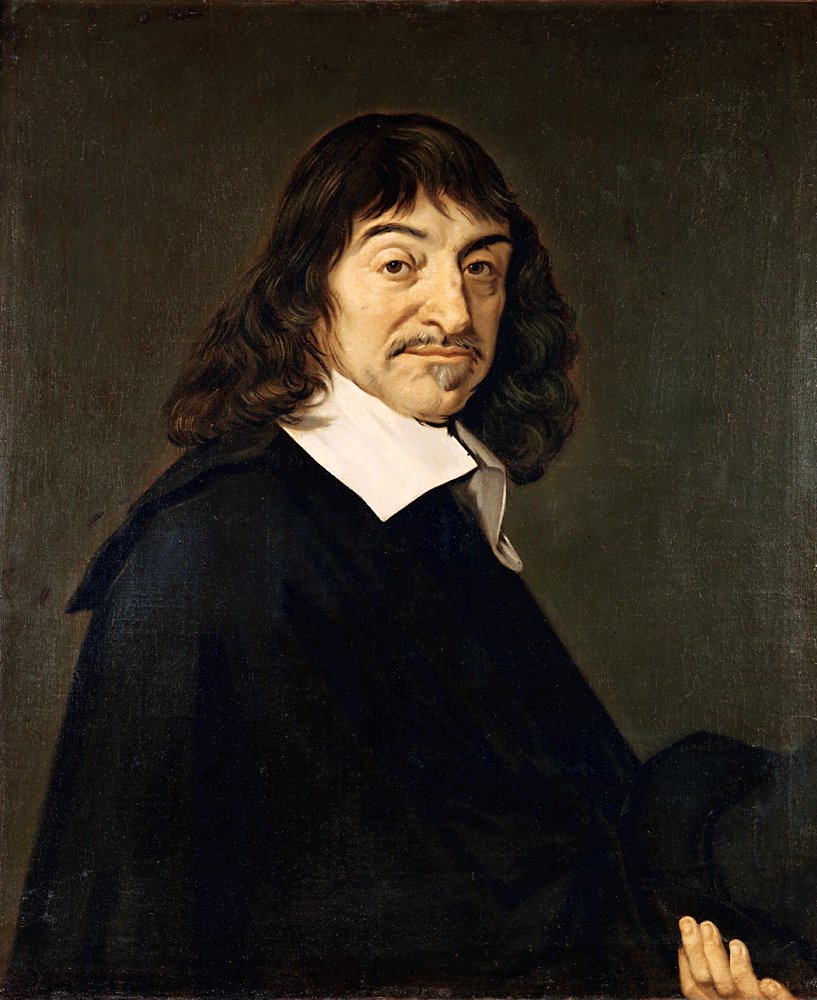 René Descartes, widely considered a seminal figure in the emergence of modern philosophy and science Bacon's empiricism and Descartes' rationalist philosophy laid the foundation for enlightenment thinking.[27] Descartes' attempt to construct the sciences on a secure metaphysical foundation was not as successful as his method of doubt applied to philosophy, which led to a dualistic doctrine of mind and matter. His skepticism was refined by Locke's Essay Concerning Human Understanding (1690) and Hume's writings in the 1740s. Descartes' dualism was challenged by Spinoza's uncompromising assertion of the unity of matter in his Tractatus (1670) and Ethics (1677).[28] According to Jonathan Israel, these laid down two distinct lines of Enlightenment thought: first, the moderate variety, following Descartes, Locke, and Christian Wolff, which sought accommodation between reform and the traditional systems of power and faith, and, second, the Radical Enlightenment, inspired by the philosophy of Spinoza, advocating democracy, individual liberty, freedom of expression, and eradication of religious authority.[29][30] The moderate variety tended to be deistic whereas the radical tendency separated the basis of morality entirely from theology. Both lines of thought were eventually opposed by a conservative Counter-Enlightenment which sought a return to faith.[31] In the mid-18th century, Paris became the center of philosophic and scientific activity challenging traditional doctrines and dogmas. After the Edict of Fontainebleau in 1685, the relationship between church and the absolutist government was very strong. The early enlightenment emerged in protest to these circumstances, gaining ground under the support of Madame de Pompadour, the mistress of Louis XV.[32] Called the Siècle des Lumières, the philosophical movement of the Enlightenment had already started by the early 18th century, when Pierre Bayle launched the popular and scholarly Enlightenment critique of religion. As a skeptic Bayle only partially accepted the philosophy and principles of rationality. He did draw a strict boundary between morality and religion. The rigor of his Dictionnaire Historique et Critique influenced many of the Enlightenment Encyclopédistes.[33] By the mid-18th century the French Enlightenment had found a focus in the project of the Encyclopédie.[32] The philosophical movement was led by Voltaire and Rousseau, who argued for a society based upon reason rather than faith and Catholic doctrine, for a new civil order based on natural law, and for science based on experiments and observation. The political philosopher Montesquieu introduced the idea of a separation of powers in a government, a concept which was enthusiastically adopted by the authors of the United States Constitution. While the philosophes of the French Enlightenment were not revolutionaries and many were members of the nobility, their ideas played an important part in undermining the legitimacy of the Old Regime and shaping the French Revolution.[34] Francis Hutcheson, a moral philosopher and founding figure of the Scottish Enlightenment, described the utilitarian and consequentialist principle that virtue is that which provides, in his words, "the greatest happiness for the greatest numbers." Much of what is incorporated in the scientific method (the nature of knowledge, evidence, experience, and causation) and some modern attitudes towards the relationship between science and religion were developed by Hutcheson's protégés in Edinburgh: David Hume and Adam Smith.[35][36] Hume became a major figure in the skeptical philosophical and empiricist traditions of philosophy.  German philosopher Immanuel Kant, one of the most influential figures of Enlightenment and modern philosophy Kant tried to reconcile rationalism and religious belief, individual freedom and political authority, as well as map out a view of the public sphere through private and public reason.[37] Kant's work continued to influence German intellectual life and European philosophy more broadly well into the 20th century.[38] Mary Wollstonecraft was one of England's earliest feminist philosophers.[39] She argued for a society based on reason and that women as well as men should be treated as rational beings. She is best known for her work A Vindication of the Rights of Woman (1792).[40] |
トピック 哲学 主な記事: 啓蒙主義哲学  英国の哲学者フランシス・ベーコンの著作は、啓蒙主義時代の基礎を築いたとされる  ルネ・デカルトは、近代哲学と科学の誕生における先駆的な人物として広く認められている ベーコンの経験論とデカルトの合理主義哲学は啓蒙思想の基盤を築いた[27]。デカルトが確固たる形而上学的基盤の上に科学を構築しようとした試みは、哲 学に応用された彼の懐疑法ほど成功しなかった。この懐疑法は心と物質の二元論的教義へと導いた。彼の懐疑主義はロックの『人間知性論』(1690年)と ヒュームの1740年代の著作によって洗練された。デカルトの二元論は、スピノザが『論考』(1670年)と『倫理学』(1677年)で示した物質の統一 性に関する断固たる主張によって挑戦を受けた。[28] ジョナサン・イスラエルによれば、これらは啓蒙思想の二つの異なる流れを確立した。第一に、デカルト、ロック、クリスティアン・ヴォルフに続く穏健派は、 改革と権力・信仰の伝統的体系との調和を模索した。第二に、スピノザの哲学に触発された急進的啓蒙主義は、民主主義、個人の自由、表現の自由、宗教的権威 の排除を主張した。[29] [30] 穏健派はデイズム的傾向が強かったのに対し、急進派は道徳の基盤を神学から完全に分離させた。いずれの思想潮流も、信仰回帰を求める保守的な反啓蒙主義に よって最終的に対抗された。[31] 18世紀半ば、パリは伝統的な教義やドグマに挑む哲学・科学活動の中心地となった。1685年のフォンテーヌブロー勅令以降、教会と絶対主義政府の関係は 極めて強固だった。初期啓蒙主義はこうした状況への抗議として台頭し、ルイ15世の愛人ポンパドゥール夫人の支援を得て勢力を拡大した。[32] 「啓蒙の世紀」と呼ばれるこの哲学運動は、18世紀初頭には既に始まっていた。ピエール・ベイルが、大衆的かつ学術的な啓蒙主義的宗教批判を展開したのが その端緒である。懐疑主義者であったベイルは、合理性の哲学と原理を部分的にしか受け入れなかった。彼は道徳と宗教の間に厳格な境界線を引いた。彼の『歴 史的批判辞典』の厳密さは、多くの啓蒙主義的百科事典編纂者たちに影響を与えた。[33] 18世紀半ばまでに、フランス啓蒙主義は『百科全書』プロジェクトに焦点を定めた。[32] この哲学的運動はヴォルテールとルソーが主導し、信仰やカトリック教義ではなく理性に基づく社会、自然法に基づく新たな市民秩序、実験と観察に基づく科学 を主張した。政治哲学者モンテスキューは政府における三権分立の概念を導入し、この考えはアメリカ合衆国憲法の起草者たちに熱狂的に採用された。フランス 啓蒙思想家たちは革命家ではなく、多くが貴族階級に属していたが、彼らの思想は旧体制の正当性を揺るがしフランス革命を形作る上で重要な役割を果たした。 道徳哲学者でありスコットランド啓蒙思想の創始者であるフランシス・ハッチェソンは、功利主義的・結果主義的原理を「最大の多数に最大の幸福をもたらすも のこそが徳である」と表現した。科学的メソッド(知識・証拠・経験・因果関係の本質)の多くと、科学と宗教の関係に対する現代的見解の幾つかは、ハッチェ ソンのエディンバラにおける弟子たちによって発展させた。デイヴィッド・ヒュームとアダム・スミスである。[35][36] ヒュームは懐疑主義的哲学と経験主義的哲学の伝統における主要人物となった。  啓蒙思想および近代哲学において最も影響力のある人物の一人であるドイツの哲学者イマヌエル・カント カントは、合理主義と宗教的信念、個人の自由と政治的権威の調和を図るとともに、私的理性と公的理性を介した公共圏の構想を提示しようとした。[37] カントの思想は20世紀に至るまで、ドイツの知的生活やより広範なヨーロッパ哲学に影響を与え続けた。[38] メアリー・ウルストンクラフトはイングランド初期のフェミニスト哲学者の一人であった。[39] 彼女は理性に基づく社会を主張し、女性も男性と同様に理性的な存在として扱われるべきだと論じた。彼女の代表作『女性の権利の擁護』(1792年)で最も よく知られている。[40] |
| Science Main article: Science in the Age of Enlightenment Science played an important role in Enlightenment discourse and thought. Many Enlightenment writers and thinkers had backgrounds in the sciences and associated scientific advancement with the overthrow of religion and traditional authority in favour of the development of free speech and thought.[41] There were immediate practical results. The experiments of Antoine Lavoisier were used to create the first modern chemical plants in Paris, and the experiments of the Montgolfier brothers enabled them to launch the first manned flight in a hot air balloon in 1783.[42] Broadly speaking, Enlightenment science greatly valued empiricism and rational thought and was embedded with the Enlightenment ideal of advancement and progress. The study of science, under the heading of natural philosophy, was divided into physics and a conglomerate grouping of chemistry and natural history, which included anatomy, biology, geology, mineralogy, and zoology.[43] As with most Enlightenment views, the benefits of science were not seen universally: Rousseau criticized the sciences for distancing man from nature and not operating to make people happier.[44] Science during the Enlightenment was dominated by scientific societies and academies, which had largely replaced universities as centres of scientific research and development. Societies and academies were also the backbone of the maturation of the scientific profession. Scientific academies and societies grew out of the Scientific Revolution as the creators of scientific knowledge, in contrast to the scholasticism of the university.[45] Some societies created or retained links to universities, but contemporary sources distinguished universities from scientific societies by claiming that the university's utility was in the transmission of knowledge while societies functioned to create knowledge.[46] As the role of universities in institutionalized science began to diminish, learned societies became the cornerstone of organized science. Official scientific societies were chartered by the state to provide technical expertise.[47] Most societies were granted permission to oversee their own publications, control the election of new members and the administration of the society.[48] In the 18th century, a very large number of official academies and societies were founded in Europe; by 1789 there were over 70 official scientific societies. In reference to this growth, Bernard de Fontenelle coined the term "the Age of Academies" to describe the 18th century.[49] Another important development was the popularization of science among an increasingly literate population. Philosophes introduced the public to many scientific theories, most notably through the Encyclopédie and the popularization of Newtonianism by Voltaire and Émilie du Châtelet. Some historians have marked the 18th century as a drab period in the history of science.[50] The century saw significant advancements in the practice of medicine, mathematics, and physics; the development of biological taxonomy; a new understanding of magnetism and electricity; and the maturation of chemistry as a discipline, which established the foundations of modern chemistry.[citation needed] The influence of science began appearing more commonly in poetry and literature. While some societies were established with ties to universities or maintained existing ones contemporary sources often distinguished between the two, asserting that universities primarily served to transmit knowledge, whereas scientific societies were oriented toward the creation of new knowledge.[51] James Thomson penned his "Poem to the Memory of Newton," which mourned the loss of Newton and praised his science and legacy.[52] |
科学 主な記事: 啓蒙時代の科学 科学は啓蒙主義の言説と思想において重要な役割を果たした。多くの啓蒙主義の作家や思想家は科学の背景を持ち、科学の進歩を宗教や伝統的権威の打倒と結び つけ、言論と思想の自由の発展を支持した。[41] これには即時の実践的成果があった。アントワーヌ・ラヴォアジエの実験はパリに最初の近代的化学工場を設立する基盤となり、モンゴルフィエ兄弟の実験は 1783年に熱気球による初の有人飛行を実現させた。[42] 大まかに言えば、啓蒙主義の科学は経験主義と合理的な思考を高く評価し、啓蒙主義の進歩と発展という理想に深く根ざしていた。自然哲学の枠組みにおける科 学研究は、物理学と、解剖学・生物学・地質学・鉱物学・動物学を含む化学と自然史の複合分野に分けられていた[43]。啓蒙思想の多くの見解と同様、科学 の恩恵は普遍的に認識されていなかった。ルソーは科学が人間を自然から遠ざけ、人民の幸福を増進しないとして批判した。[44] 啓蒙時代の科学は、大学に代わって科学研究開発の中心地となった科学協会やアカデミーが主導した。これらの組織は科学専門職の成熟を支える基盤でもあっ た。科学アカデミーや協会は、大学の学究主義とは対照的に、科学的知識の創造者として科学革命から発展した。[45] 一部の学会は大学との連携を創出または維持したが、当時の資料は大学と科学学会を区別し、大学の有用性は知識の伝達にあるのに対し、学会は知識を創造する 機能を持つと主張した。[46] 制度化された科学における大学の役割が減少し始めると、学術団体が組織化された科学の礎となった。公式の科学学会は国家から認可を受け、技術的専門知識を 提供した。[47] ほとんどの学会は、自らの出版物の監督、新会員の選出、運営管理を許可された。[48] 18世紀には、ヨーロッパで非常に多くの公認アカデミーや学会が設立された。1789年までに70以上の公認科学学会が存在した。この成長を指して、ベル ナール・ド・フォンテネルは18世紀を「アカデミーの時代」と称した。[49] もう一つの重要な進展は、識字率の向上に伴い科学が一般大衆に普及したことだ。哲学者たちは『百科全書』やヴォルテール、エミリー・デュ・シャトレによる ニュートン力学の普及を通じて、多くの科学的理論を大衆に紹介した。一部の歴史家は18世紀を科学史における停滞期と位置づけている。[50] この世紀には医学・数学・物理学の実践が著しく進歩し、生物分類学が発展し、磁気と電気の新たな理解が生まれ、化学が学問として成熟して現代化学の基礎が 築かれた。[出典必要] 科学の影響は詩や文学にもより頻繁に現れ始めた。大学と結びついた学会が設立されたり既存のものが維持されたりした一方で、当時の資料はしばしば両者を区 別し、大学は主に知識の伝達に役立つのに対し、科学学会は新たな知識の創造に向けられていると主張していた。[51] ジェームズ・トムソンは「ニュートンの追悼の詩」を執筆し、ニュートンの死を悼み、その科学と遺産を称賛した。[52] |
Sociology, economics, and law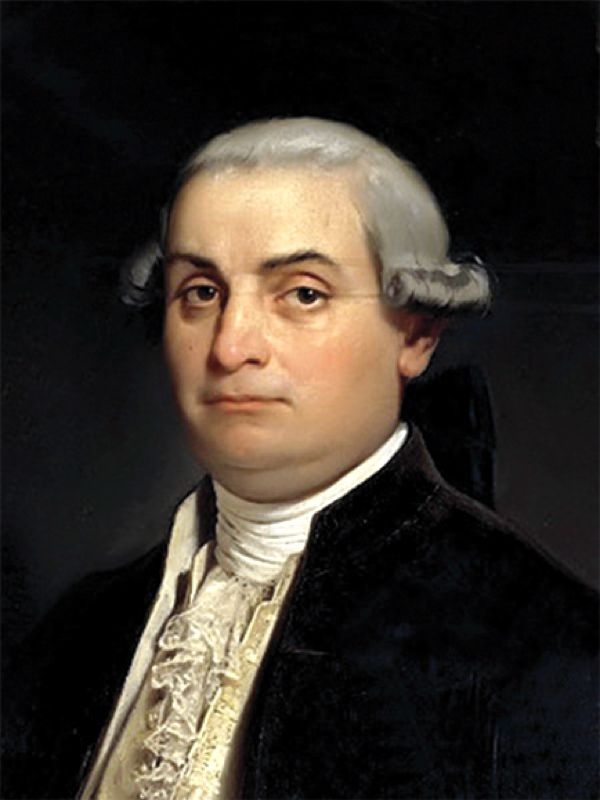 Cesare Beccaria, father of classical criminal theory Hume and other Scottish Enlightenment thinkers developed a "science of man,"[53] which was expressed historically in works by authors including James Burnett, Adam Ferguson, John Millar, and William Robertson, all of whom merged a scientific study of how humans behaved in ancient and primitive cultures with a strong awareness of the determining forces of modernity. Modern sociology largely originated from this movement,[54] and Hume's philosophical concepts that directly influenced James Madison (and thus the U.S. Constitution), and as popularised by Dugald Stewart was the basis of classical liberalism.[55] In 1776, Adam Smith published The Wealth of Nations, often considered the first work on modern economics as it had an immediate impact on British economic policy that continues into the 21st century.[56] It was immediately preceded and influenced by Anne Robert Jacques Turgot's drafts of Reflections on the Formation and Distribution of Wealth (1766). Smith acknowledged indebtedness and possibly was the original English translator.[57] Beccaria, a jurist, criminologist, philosopher, and politician and one of the great Enlightenment writers, became famous for his masterpiece Dei delitti e delle pene (Of Crimes and Punishments, 1764). His treatise, translated into 22 languages,[58] condemned torture and the death penalty and was a founding work in the field of penology and the classical school of criminology by promoting criminal justice. Francesco Mario Pagano wrote important studies such as Saggi politici (Political Essays, 1783); and Considerazioni sul processo criminale (Considerations on the Criminal Trial, 1787), which established him as an international authority on criminal law.[59] |
社会学、経済学、法学 古典的犯罪理論の父、チェーザレ・ベッカリア ヒュームやその他のスコットランド啓蒙思想家たちは「人間科学」を発展させた[53]。これは、ジェームズ・バーネット、アダム・ファーガソン、ジョン・ ミラー、ウィリアム・ロバートソンなどの著作に歴史的に表現されており、彼らは皆、古代や原始文化における人間の行動に関する科学的研究と、近代化の決定 的な力に対する強い認識とを融合させた。現代社会学は、この運動に大きく起因している[54]。また、ジェームズ・マディソン(ひいてはアメリカ合衆国憲 法)に直接影響を与えたヒュームの哲学的概念は、ダガルド・スチュワートによって普及し、古典的自由主義の基礎となった[55]。 1776年、アダム・スミスは『国富論』を出版した。この著作は、21世紀に至るまで英国の経済政策に直接的な影響を与えたことから、現代経済学の最初の 著作とよく考えられている[56]。この著作は、アン・ロベール・ジャック・トゥルゴの『富の形成と分配に関する考察』(1766年)の草稿に先行し、そ の影響を受けた。スミスは、その恩義を認め、おそらくは最初の英語翻訳者であった。[57] ベッカリアは、法学者、犯罪学者、哲学者、政治家であり、啓蒙思想の偉大な作家の一人である。彼の傑作『犯罪と刑罰』(1764年)で有名になった。この 論文は22の言語に翻訳され[58]、拷問と死刑を非難し、刑事司法を推進することで、刑罰学と古典派犯罪学の分野における基礎的な著作となった。フラン チェスコ・マリオ・パガーノは『政治論集』(1783年)や『刑事裁判に関する考察』(1787年)といった重要な研究を著し、刑法学における国際的権威 としての地位を確立した[59]。 |
| Politics The Enlightenment has long been seen as the foundation of modern Western political and intellectual culture.[60] The Enlightenment brought political modernization to the West, in terms of introducing democratic values and institutions and the creation of modern, liberal democracies. This thesis has been widely accepted by scholars and has been reinforced by the large-scale studies by Robert Darnton, Roy Porter, and, most recently, by Jonathan Israel.[61][62] Enlightenment thought was deeply influential in the political realm. European rulers such as Catherine II of Russia, Joseph II of Austria, and Frederick II of Prussia tried to apply Enlightenment thought on religious and political tolerance, which became known as enlightened absolutism.[25] Many of the major political and intellectual figures behind the American Revolution associated themselves closely with the Enlightenment: Benjamin Franklin visited Europe repeatedly and contributed actively to the scientific and political debates there and brought the newest ideas back to Philadelphia; Thomas Jefferson closely followed European ideas and later incorporated some of the ideals of the Enlightenment into the Declaration of Independence; and Madison incorporated these ideals into the U.S. Constitution during its framing in 1787.[63] Theories of government 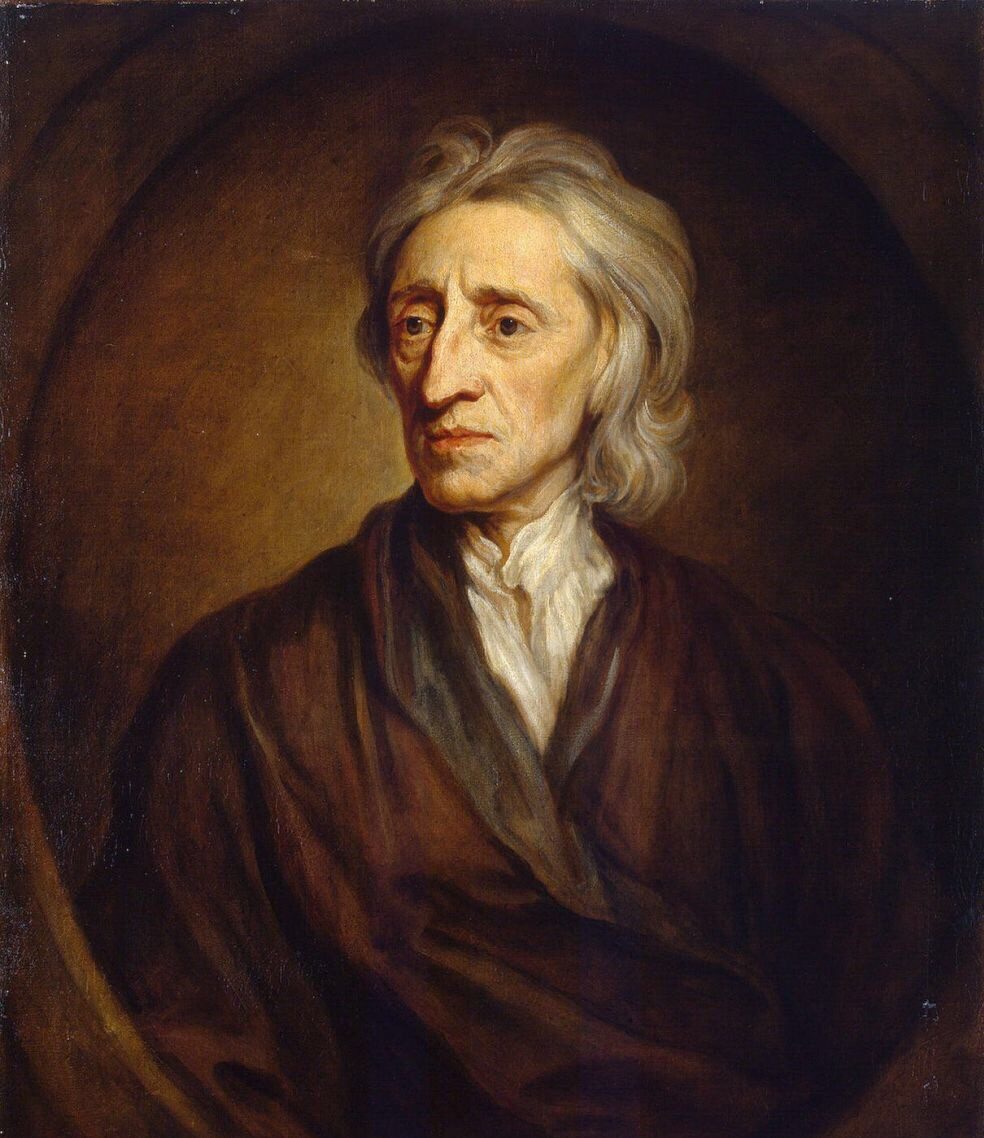 Philosopher John Locke argued that the authority of government stems from a social contract based on natural rights. According to Locke, the authority of government was limited and required the consent of the governed. Locke, one of the most influential Enlightenment thinkers,[64] based his governance philosophy on social contract theory, a subject that permeated Enlightenment political thought. English philosopher Thomas Hobbes ushered in this new debate with his work Leviathan in 1651. Hobbes also developed some of the fundamentals of European liberal thought: the right of the individual, the natural equality of all men, the artificial character of the political order (which led to the later distinction between civil society and the state), the view that all legitimate political power must be "representative" and based on the consent of the people, and a liberal interpretation of law which leaves people free to do whatever the law does not explicitly forbid.[65] Both Locke and Rousseau developed social contract theories in Two Treatises of Government and Discourse on Inequality, respectively. While quite different works, Locke, Hobbes, and Rousseau agreed that a social contract, in which the government's authority lies in the consent of the governed,[66] is necessary for man to live in civil society. Locke defines the state of nature as a condition in which humans are rational and follow natural law, in which all men are born equal and with the right to life, liberty, and property. However, when one citizen breaks the law of nature both the transgressor and the victim enter into a state of war, from which it is virtually impossible to break free. Therefore, Locke said that individuals enter into civil society to protect their natural rights via an "unbiased judge" or common authority, such as courts. In contrast, Rousseau's conception relies on the supposition that "civil man" is corrupted, while "natural man" has no want he cannot fulfill himself. Natural man is only taken out of the state of nature when the inequality associated with private property is established.[67] Rousseau said that people join into civil society via the social contract to achieve unity while preserving individual freedom. This is embodied in the sovereignty of the general will, the moral and collective legislative body constituted by citizens.[citation needed] Locke is known for his statement that individuals have a right to "Life, Liberty, and Property," and his belief that the natural right to property is derived from labor. Tutored by Locke, Anthony Ashley-Cooper, 3rd Earl of Shaftesbury, wrote in 1706: "There is a mighty Light which spreads its self over the world especially in those two free Nations of England and Holland; on whom the Affairs of Europe now turn."[68] Locke's theory of natural rights has influenced many political documents, including the U.S. Declaration of Independence and the French National Constituent Assembly's Declaration of the Rights of Man and of the Citizen. Some philosophes argued that the establishment of a contractual basis of rights would lead to the market mechanism and capitalism, the scientific method, religious tolerance, and the organization of states into self-governing republics through democratic means. In this view, the tendency of the philosophes in particular to apply rationality to every problem is considered the essential change.[69] Although much of Enlightenment political thought was dominated by social contract theorists, Hume and Ferguson criticized this camp. Hume's essay Of the Original Contract argues that governments derived from consent are rarely seen and civil government is grounded in a ruler's habitual authority and force. It is precisely because of the ruler's authority over-and-against the subject that the subject tacitly consents, and Hume says that the subjects would "never imagine that their consent made him sovereign," rather the authority did so.[70] Similarly, Ferguson did not believe citizens built the state, rather polities grew out of social development. In his 1767 An Essay on the History of Civil Society, Ferguson uses the four stages of progress, a theory that was popular in Scotland at the time, to explain how humans advance from a hunting and gathering society to a commercial and civil society without agreeing to a social contract. Both Rousseau's and Locke's social contract theories rest on the presupposition of natural rights, which are not a result of law or custom but are things that all men have in pre-political societies and are therefore universal and inalienable. The most famous natural right formulation comes from Locke's Second Treatise, when he introduces the state of nature. For Locke, the law of nature is grounded on mutual security or the idea that one cannot infringe on another's natural rights, as every man is equal and has the same inalienable rights. These natural rights include perfect equality and freedom, as well as the right to preserve life and property. Locke argues against indentured servitude on the basis that enslaving oneself goes against the law of nature because a person cannot surrender their own rights: freedom is absolute, and no one can take it away. Locke argues that one person cannot enslave another because it is morally reprehensible, although he introduces a caveat by saying that enslavement of a lawful captive in time of war would not go against one's natural rights. |
政治 啓蒙主義は、長い間、近代西洋の政治的・知的文化の基盤と見なされてきた。[60] 啓蒙主義は、民主主義的価値観や制度の導入、そして近代的自由民主主義国家の創出という点で、西洋に政治的近代化をもたらした。この説は学者たちに広く受 け入れられており、ロバート・ダントン、ロイ・ポーター、そして最近ではジョナサン・イスラエルによる大規模な研究によってさらに補強されている[61] [62]。啓蒙思想は政治の分野にも深い影響を与えた。ロシアのエカチェリーナ2世、オーストリアのヨーゼフ2世、プロイセンのフリードリヒ2世などの ヨーロッパの支配者たちは、宗教的・政治的寛容に関する啓蒙思想を適用しようとし、それは啓蒙絶対主義として知られるようになった。[25] アメリカ独立革命の背後にいた主要な政治家や知識人の多くは、啓蒙思想と密接な関係があった。ベンジャミン・フランクリンはヨーロッパを繰り返し訪問し、 その科学や政治に関する議論に積極的に貢献し、最新の思想をフィラデルフィアに持ち帰った。トーマス・ジェファーソンはヨーロッパの思想を注視し、後に啓 蒙思想の理想の一部を独立宣言に盛り込んだ。また、ジェームズ・マディソンは、1787年の憲法制定の際に、これらの理想を合衆国憲法に盛り込んだ。 [63] 政府の理論  哲学者ジョン・ロックは、政府の権威は自然権に基づく社会契約に由来すると主張した。ロックによれば、政府の権威は限定的であり、被統治者の同意を必要とした。 啓蒙思想家の中でも最も影響力のある一人であるロック[64]は、その統治哲学を社会契約論に基盤を置いた。この主題は啓蒙主義の政治思想全体に浸透して いた。英国の哲学者トマス・ホッブズは1651年の著作『リヴァイアサン』でこの新たな議論を導いた。ホッブズはまた、ヨーロッパ自由主義思想の基礎とな るいくつかの概念を発展させた。個人の権利、全人類の自然的平等、政治秩序の人為的性格(後に市民社会と国家の区別へと発展)、全ての正当な政治権力は 「代表制」であり人民の同意に基づくべきという見解、そして法律が明示的に禁止していない限り人々を自由に行動させるという自由主義的法解釈である。 [65] ロックとルソーはそれぞれ『二論』と『不平等言説』において社会契約論を展開した。両者の著作は大きく異なるが、ロック、ホッブズ、ルソーは、政府の権威 が被統治者の同意に由来する社会契約[66]が、人間が市民社会で生きるために必要である点で一致していた。ロックは自然状態を、人間が理性的に自然法に 従う状態と定義する。そこでは全ての人が平等に生まれ、生命・自由・財産の権利を有する。しかし一人の市民が自然法を破ると、違反者と被害者の双方が戦争 状態に陥り、そこから脱することは事実上不可能となる。したがってロックは、個人が自然権を守るために「公平な裁判官」や裁判所のような共通の権威を通じ て市民社会に入るのだと述べた。これに対しルソーの構想は、「市民的人間」は堕落しているが、「自然的人間」は自ら満たせない欲求を持たないという前提に 依拠する。自然的人間は、私有財産に伴う不平等が確立された時にのみ自然状態から引き離されるのだ。[67] ルソーは、人民は個人の自由を保ちながら団結を達成するために、社会契約を通じて市民社会に参加すると述べた。これは、市民によって構成される道徳的かつ 集団的な立法機関である、一般意志の主権に体現されている。 ロックは、個人には「生命、自由、財産」に対する権利があるとの主張、および財産に対する自然権は労働から派生するとの信念で知られている。ロックの指導 を受けた、第3代シャフトズベリー伯爵アンソニー・アシュリー・クーパーは、1706年に次のように記している。「世界、特にヨーロッパの情勢が今、その 行方を左右している、イングランドとオランダという二つの自由な国民の上に、強大な光が降り注いでいる」 [68] ロックの自然権理論は、アメリカ独立宣言やフランス国民憲法制定議会による「人権宣言」など、多くの政治文書に影響を与えた。 一部の哲学者たちは、権利の契約的基盤の確立が、市場メカニズムと資本主義、科学的方法、宗教的寛容、そして民主的な手段による自治共和国としての国民の 組織化につながるだろうと主張した。この見解では、特に哲学者たちがあらゆる問題に合理性を適用する傾向が、本質的な変化と考えられている。 啓蒙主義の政治思想の多くは社会契約論者によって支配されていたが、ヒュームとファーガソンはこの陣営を批判した。ヒュームの論文『原契約について』は、 同意に基づいて成立した政府はめったに見られず、市民政府は支配者の慣習的な権威と力に基づいて成立していると論じている。支配者が被支配者に対して持つ 権威があるからこそ、被支配者は暗黙のうちに同意するのだ。ヒュームは、被支配者は「自分たちの同意が支配者を君主にしたとは決して考えない」と述べ、む しろ権威がそうさせたのだと主張している[70]。同様に、ファーガソンも、市民が国家を構築したとは考えておらず、むしろ政治体制は社会の発展から生ま れたと主張した。1767年の『市民社会の歴史に関するエッセイ』の中で、ファーガソンは、当時スコットランドで流行していた進歩の4段階説を用いて、人 間が社会契約に合意することなく、狩猟採集社会から商業社会、市民社会へとどのように進歩したかを説明している。 ルソーとロックの社会契約論は、いずれも自然権という前提に基づいている。自然権とは、法律や慣習の結果ではなく、政治社会以前のすべての人が持つもので あり、したがって普遍的かつ不可侵のものである。最も有名な自然権の定式化は、ロックが自然状態を紹介した『第二論考』にある。ロックにとって自然法は相 互安全、すなわち全ての人が平等で同じ不可譲の権利を持つ以上、他者の自然権を侵害してはならないという考えに根ざしている。これらの自然権には完全な平 等と自由、そして生命と財産の保持権が含まれる。 ロックは、契約奴隷制に反対する論拠として、自らを奴隷化することは自然法に反すると主張する。なぜなら、人格は自らの権利を放棄することはできず、自由 は絶対的であり、誰もそれを奪うことはできないからだ。ロックは、一人の人格が別の人格を奴隷化することは道徳的に許されない行為だと論じる。ただし、戦 争時に合法的に捕虜とした者を奴隷化することは、自然権に反しないという留保条件を付している。 |
| Enlightened absolutism Main article: Enlightened absolutism 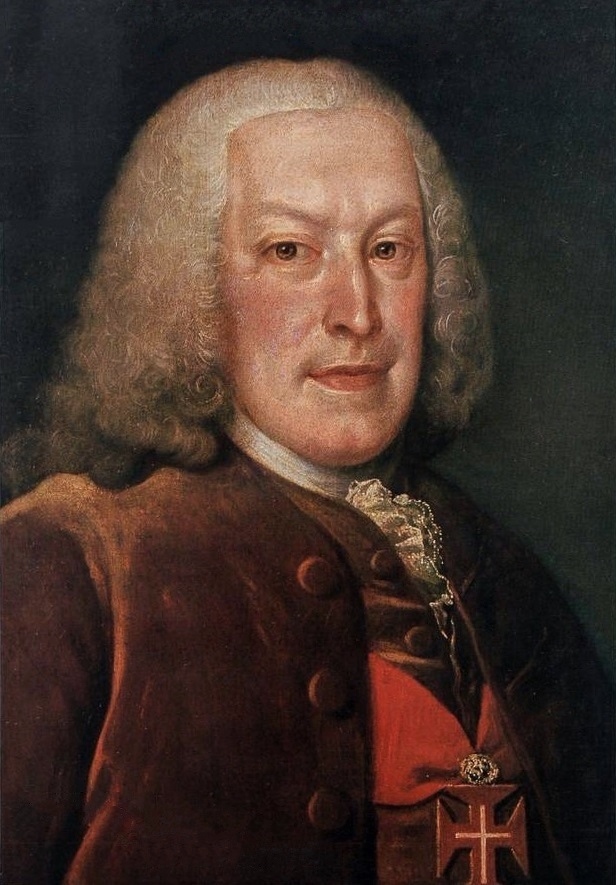 The Marquis of Pombal, as the head of the government of Portugal, implemented sweeping socio-economic reforms. The leaders of the Enlightenment were not especially democratic, as they more often look to absolute monarchs as the key to imposing reforms designed by the intellectuals. Voltaire despised democracy and said the absolute monarch must be enlightened and must act as dictated by reason and justice—in other words, be a "philosopher-king."[71] In several nations, rulers welcomed leaders of the Enlightenment at court and asked them to help design laws and programs to reform the system, typically to build stronger states. These rulers are called "enlightened despots" by historians.[72] They included Frederick the Great of Prussia, Catherine the Great of Russia, Leopold II of Tuscany and Joseph II of Austria. Joseph was over-enthusiastic, announcing many reforms that had little support so that revolts broke out and his regime became a comedy of errors, and nearly all his programs were reversed.[73] Senior ministers Pombal in Portugal and Johann Friedrich Struensee in Denmark also governed according to Enlightenment ideals. In Poland, the model constitution of 1791 expressed Enlightenment ideals, but was in effect for only one year before the nation was partitioned among its neighbors. More enduring were the cultural achievements, which created a nationalist spirit in Poland.[74] 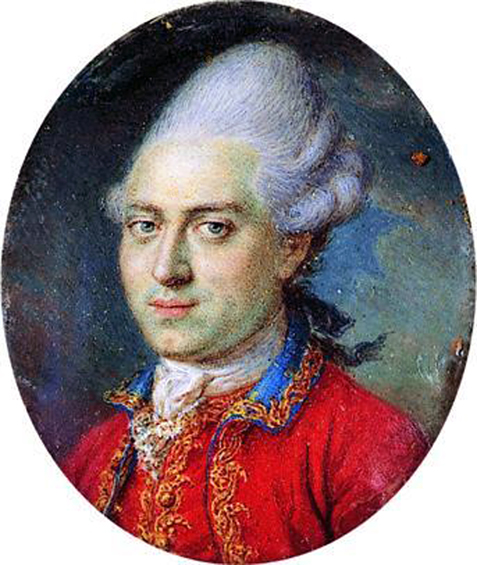 Denmark's minister Johann Struensee, a social reformer, was publicly executed in 1772 for usurping royal authority. Frederick the Great, the king of Prussia from 1740 to 1786, saw himself as a leader of the Enlightenment and patronized philosophers and scientists at his court in Berlin. Voltaire, who had been imprisoned and maltreated by the French government, was eager to accept Frederick's invitation to live at his palace. Frederick explained: "My principal occupation is to combat ignorance and prejudice... to enlighten minds, cultivate morality, and to make people as happy as it suits human nature, and as the means at my disposal permit."[75] American Revolution and French Revolution The Enlightenment has been frequently linked to the American Revolution of 1776[76] and the French Revolution of 1789—both had some intellectual influence from Thomas Jefferson.[77][78] A key aspect of this era was a profound shift from the absolute monarchies of Europe, which asserted the "divine right" to rule. John Locke rejected this view in his writings on the Two Treatises of Government (1689). He asserted that citizens were seen to possess natural rights, including life, liberty, and property. Therefore governments exist to protect these rights through the "consent of the governed." The clash between these competing ethos often resulted in violent upheaval in differing ways. In France, Ancien régime, with its rigid social hierarchy and absolute monarchical power, was systematically dismantled during the French Revolution. While the American Revolution focused more on breaking free from a government - represented by King George III and Parliament - that colonists felt did not adequately represent their interests. Alexis de Tocqueville proposed the French Revolution as the inevitable result of the radical opposition created in the 18th century between the monarchy and the men of letters of the Enlightenment. These men of letters constituted a sort of "substitute aristocracy that was both all-powerful and without real power." This illusory power came from the rise of "public opinion," born when absolutist centralization removed the nobility and the bourgeoisie from the political sphere. The "literary politics" that resulted promoted a discourse of equality and was hence in fundamental opposition to the monarchical regime.[79] De Tocqueville "clearly designates... the cultural effects of transformation in the forms of the exercise of power."[80] |
啓蒙絶対主義 メイン記事: 啓蒙絶対主義  ポンバル侯爵はポルトガル政府の長として、抜本的な社会経済改革を実施した。 啓蒙思想の指導者たちは特に民主的ではなかった。彼らはむしろ、知識人が設計した改革を押し付ける鍵として絶対君主を仰ぐことが多かった。ヴォルテールは 民主主義を軽蔑し、絶対君主は啓蒙され、理性と正義に基づいて行動すべきだと述べた。つまり「哲人王」であるべきだというのである[71]。 いくつかの国民では、統治者が啓蒙思想の指導者を宮廷に迎え、制度改革のための法律や計画の立案を依頼した。その目的は通常、国家の強化にあった。歴史家 たちはこうした統治者を「啓蒙専制君主」と呼んでいる。[72] その中にはプロイセンのフリードリヒ大王、ロシアのエカテリーナ2世、トスカーナ大公レオポルド2世、オーストリア皇帝ヨーゼフ2世が含まれる。ヨーゼフ は熱意が過剰で、支持の薄い改革を多数発表し、反乱が勃発して政権は失態の連続となり、ほぼ全ての政策が撤回された。[73] ポルトガルのポンバルやデンマークのヨハン・フリードリヒ・シュトゥルーンゼーといった上級大臣も啓蒙思想に基づいて統治した。ポーランドでは、1791 年の模範憲法が啓蒙思想の理想を体現したが、隣国による国民の分割統治が始まるまでわずか1年間しか施行されなかった。より永続的だったのは文化的成果で あり、これらがポーランドにナショナリストの精神を育んだ。[74]  デンマークの社会改革者ヨハン・シュトゥルーンゼーは、1772年に王権を簒奪した罪で公開処刑された。 1740年から1786年までプロイセン王であったフリードリヒ大王は、自らを啓蒙主義の指導者と見なし、ベルリンの宮廷で哲学者や科学者を後援した。フ ランス政府によって投獄され虐待されたヴォルテールは、フリードリヒの宮殿に住むよう招かれたことを喜んで受け入れた。フリードリヒはこう説明している: 「私の主な仕事は無知と偏見と戦うことだ…人々の心を啓発し、道徳を育み、人間の本性にかなう限り、そして私の手にある手段が許す限り、人民を幸せにする ことである」[75] アメリカ独立戦争とフランス革命 啓蒙思想は1776年のアメリカ独立戦争[76]と1789年のフランス革命と頻繁に結びつけられてきた。両者ともトマス・ジェファーソンの思想的影響を 受けていた。[77][78] この時代の重要な側面は、統治の「神権」を主張したヨーロッパの絶対君主制からの根本的な転換であった。ジョン・ロックは『二つの政府論』(1689年) においてこの見解を否定した。彼は、市民には生命、自由、財産を含む自然権が備わっていると主張した。したがって政府は「被統治者の同意」を通じてこれら の権利を保護するために存在する。こうした対立する倫理観の衝突は、しばしば異なる形で暴力的な動乱を引き起こした。フランスでは、硬直した社会階層と絶 対的君主権力を特徴とするアンシャン・レジームが、フランス革命によって体系的に解体された。一方、アメリカ独立戦争は、植民地住民が自らの利益を十分に 代表していないと感じた政府——ジョージ3世と議会に象徴される——からの脱却に重点を置いた。 アレクシス・ド・トクヴィルは、フランス革命を18世紀に王政と啓蒙思想家たちの間に生じた急進的な対立の必然的帰結と位置付けた。これらの知識人層は 「実権を持たないが全権を掌握する」一種の「代替貴族階級」を形成していた。この幻想的な権力は「世論」の台頭から生まれた。絶対主義的な中央集権化が貴 族とブルジョワジーを政治圏から排除した時に生まれたものだ。その結果生まれた「文芸政治」は平等を主張する言説を促進し、したがって君主制体制と根本的 に対立した[79]。ド・トクヴィルは「権力行使の形態における変革の文化的影響を明確に指摘している」[80]。 |
| Religion It does not require great art or magnificently trained eloquence, to prove that Christians should tolerate each other. I, however, am going further: I say that we should regard all men as our brothers. What? The Turk my brother? The Chinaman my brother? The Jew? The Siam? Yes, without doubt; are we not all children of the same father and creatures of the same God? -- Voltaire (1763)[81] 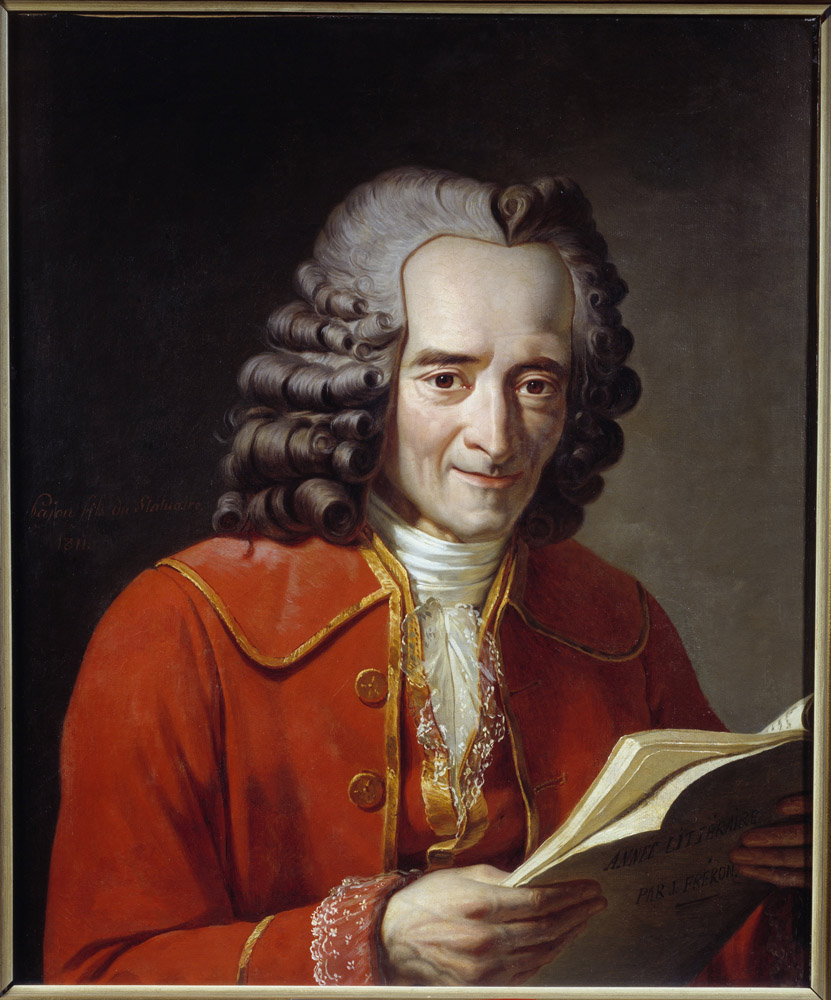 French philosopher Voltaire argued for religious tolerance. Enlightenment era religious commentary was a response to the preceding century of religious conflict in Europe, especially the Thirty Years' War.[82] Theologians of the Enlightenment wanted to reform their faith to its generally non-confrontational roots and to limit the capacity for religious controversy to spill over into politics and warfare while still maintaining a true faith in God. For moderate Christians, this meant a return to simple Scripture. Locke abandoned the corpus of theological commentary in favor of an "unprejudiced examination" of the Word of God alone. He determined the essence of Christianity to be a belief in Christ the redeemer and recommended avoiding more detailed debate.[83] Anthony Collins, one of the English freethinkers, published his "Essay concerning the Use of Reason in Propositions the Evidence whereof depends on Human Testimony" (1707), in which he rejects the distinction between "above reason" and "contrary to reason," and demands that revelation should conform to man's natural ideas of God. In the Jefferson Bible, Thomas Jefferson went further and dropped any passages dealing with miracles, visitations of angels, and the resurrection of Jesus after his death, as he tried to extract the practical Christian moral code of the New Testament.[84] Enlightenment scholars sought to curtail the political power of organized religion and thereby prevent another age of intolerant religious war.[85] Spinoza determined to remove politics from contemporary and historical theology (e.g., disregarding Judaic law).[86] Moses Mendelssohn advised affording no political weight to any organized religion but instead recommended that each person follow what they found most convincing.[87] They believed a good religion based in instinctive morals and a belief in God should not theoretically need force to maintain order in its believers, and both Mendelssohn and Spinoza judged religion on its moral fruits, not the logic of its theology.[88] Several novel ideas about religion developed with the Enlightenment, including deism and talk of atheism. According to Thomas Paine, deism is the simple belief in God the Creator with no reference to the Bible or any other miraculous source. Instead, the deist relies solely on personal reason to guide his creed,[89] which was eminently agreeable to many thinkers of the time.[90] Atheism was much discussed, but there were few proponents. Wilson and Reill note: "In fact, very few enlightened intellectuals, even when they were vocal critics of Christianity, were true atheists. Rather, they were critics of orthodox belief, wedded rather to skepticism, deism, vitalism, or perhaps pantheism."[91] Some followed Pierre Bayle and argued that atheists could indeed be moral men.[92] Many others like Voltaire held that without belief in a God who punishes evil, the moral order of society was undermined; that is, since atheists gave themselves to no supreme authority and no law and had no fear of eternal consequences, they were far more likely to disrupt society.[93] Bayle observed that, in his day, "prudent persons will always maintain an appearance of [religion]," and he believed that even atheists could hold concepts of honor and go beyond their own self-interest to create and interact in society.[94] Locke said that if there were no God and no divine law, the result would be moral anarchy: every individual "could have no law but his own will, no end but himself. He would be a god to himself, and the satisfaction of his own will the sole measure and end of all his actions."[95] Separation of church and state Main articles: Separation of church and state and Separation of church and state in the United States The "Radical Enlightenment"[96][97] promoted the concept of separating church and state,[98] an idea that is often credited to Locke.[99] According to his principle of the social contract, Locke said that the government lacked authority in the realm of individual conscience, as this was something rational people could not cede to the government for it or others to control. For Locke, this created a natural right in the liberty of conscience, which he said must therefore remain protected from any government authority. These views on religious tolerance and the importance of individual conscience, along with the social contract, became particularly influential in the American colonies and the drafting of the United States Constitution.[100] In a letter to the Danbury Baptist Association in Connecticut, Thomas Jefferson calls for a "wall of separation between church and state" at the federal level. He previously had supported successful efforts to disestablish the Church of England in Virginia[101] and authored the Virginia Statute for Religious Freedom.[102] Jefferson's political ideals were greatly influenced by the writings of Locke, Bacon, and Newton,[103] whom he considered the three greatest men that ever lived.[104] |
宗教 キリスト教徒が互いに寛容であるべきことを証明するのに、大した芸術や見事な修練を経た雄弁さは必要ない。しかし俺はさらに踏み込む。全ての人間を兄弟と 見なすべきだと言うのだ。何だと?トルコ人が俺の兄弟だと?中国人が俺の兄弟だと?ユダヤ人が?シャム人が?そうだ、疑いなく。我々は皆同じ父の子であ り、同じ神の被造物ではないか? ——ヴォルテール(1763年)[81]  フランスの哲学者ヴォルテールは宗教的寛容を主張した。 啓蒙時代の宗教論評は、前世紀のヨーロッパにおける宗教紛争、特に三十年戦争への反応であった[82]。啓蒙時代の神学者たちは、自らの信仰を、一般的に 非対立的な根源へと改革し、宗教論争が政治や戦争へと波及する余地を制限しつつ、なお神への真の信仰を維持することを望んだ。穏健なキリスト教徒にとっ て、これは単純な聖書への回帰を意味した。ロックは、神学上の解説の体系を放棄し、神の言葉のみに対する「偏見のない検証」を支持した。彼は、キリスト教 の本質は救い主キリストへの信仰であると決定し、より詳細な議論は避けるよう勧めた。[83] 英国の自由思想家の一人であるアンソニー・コリンズは、「人間の証言に依存する証拠に関する命題における理性の使用に関するエッセイ」(1707年)を発 表し、その中で「理性を超えたもの」と「理性に反するもの」の区別を否定し、啓示は人間の神に対する自然な考えに合致すべきであると主張した。ジェファー ソン聖書では、トーマス・ジェファーソンはさらに踏み込んで、奇跡、天使の訪問、死後のイエスの復活に関する箇所をすべて削除し、新約聖書から実用的なキ リスト教の道徳規範を抽出しようとした。[84] 啓蒙主義の学者たちは、組織化された宗教の政治的権力を制限し、それによって不寛容な宗教戦争の時代が再び訪れるのを防ごうとした。[85] スピノザは、現代および歴史的な神学から政治を排除することを決意した(例えば、ユダヤ教の律法を無視すること)。[86] モーゼス・メンデルスゾーンは、いかなる組織化された宗教にも政治的な重みを認めず、代わりに各人格が最も説得力があると感じるものを追うべきだと助言し た。[87] 彼らは、本能的な道徳と神への信仰に基づく良き宗教は、理論上、信者の秩序維持に強制力を必要とすべきでないと考えた。メンデルスゾーンもスピノザも、宗 教をその神学の論理ではなく、道徳的な成果によって評価した。[88] 啓蒙主義とともに、自然神論や無神論の議論など、宗教に関するいくつかの斬新な考え方が発展した。トーマス・ペインによれば、自然神論とは、聖書やその他 の奇跡的な情報源に言及することなく、創造主である神を単純に信じる考えである。その代わりに、自然神論者は、自分の信条を導くために、個人的な理性のみ に頼る[89]。これは、当時の多くの思想家に非常に受け入れられた考えであった。[90] 無神論は多くの議論を呼んだが、その支持者はほとんどいなかった。ウィルソンとレイルは次のように述べている。「実際、キリスト教を声高に批判していた啓 蒙知識人でさえ、真の無神論者はごくわずかだった。むしろ彼らは、懐疑論、自然神論、生命力論、あるいは汎神論に傾倒した、正統的な信仰の批判者たちだっ た」[91]。ピエール・ベールに従う者もいて、無神論者も確かに道徳的な人間であり得る、と主張した[92]。ヴォルテールのような他の多くの人々は、 悪を罰する神を信じなければ、社会の道徳的秩序は損なわれる、と主張した。つまり、無神論者は、いかなる最高権威や法律にも従わず、永遠の結果を恐れるこ ともないので、社会を混乱させる可能性がはるかに高い、と主張したのである。[93] ベールは当時について「賢明な者は常に(宗教の)見せかけを保つ」と観察し、無神論者でさえ名誉の概念を持ち、自己利益を超えて社会を創造し交流できると 信じていた。[94] ロックは、神も神の法も存在しなければ、道徳的無秩序が生じると述べた。あらゆる個人は「自らの意志以外に法を持たず、自己以外に目的を持たない。彼は自 らを神とし、自らの意志の満足を全ての行動の唯一の尺度かつ目的とするだろう」[95]。 政教分離 関連項目: 政教分離、アメリカ合衆国における政教分離 「急進的啓蒙主義」[96][97]は政教分離の概念を推進した[98]。この思想はしばしばロックに帰せられる。[99] ロックは社会契約論の原則に基づき、個人の良心の領域において政府には権威がないと述べた。これは理性ある人民が政府や他者に支配させるために譲渡できな いものだからだ。ロックにとって、これは良心の自由における自然権を生み出し、したがっていかなる政府の権威からも保護され続けなければならないと彼は主 張した。 こうした宗教的寛容と個人の良心の重要性に関する見解は、社会契約論と共に、アメリカ植民地やアメリカ合衆国憲法の起草において特に大きな影響力を持った [100]。トーマス・ジェファーソンはコネチカット州のダンベリー・バプテスト協会への書簡で、連邦レベルにおける「教会と国家の分離の壁」を求めてい る。彼は以前、バージニア州における英国国教会の廃止運動を成功裏に支援し[101]、『バージニア宗教自由法』を起草した[102]。ジェファーソンの 政治的理想は、ロック、ベーコン、ニュートンの著作に大きく影響を受けており[103]、彼はこれら3人を史上最高の偉人と考えていた[104]。 |
National variations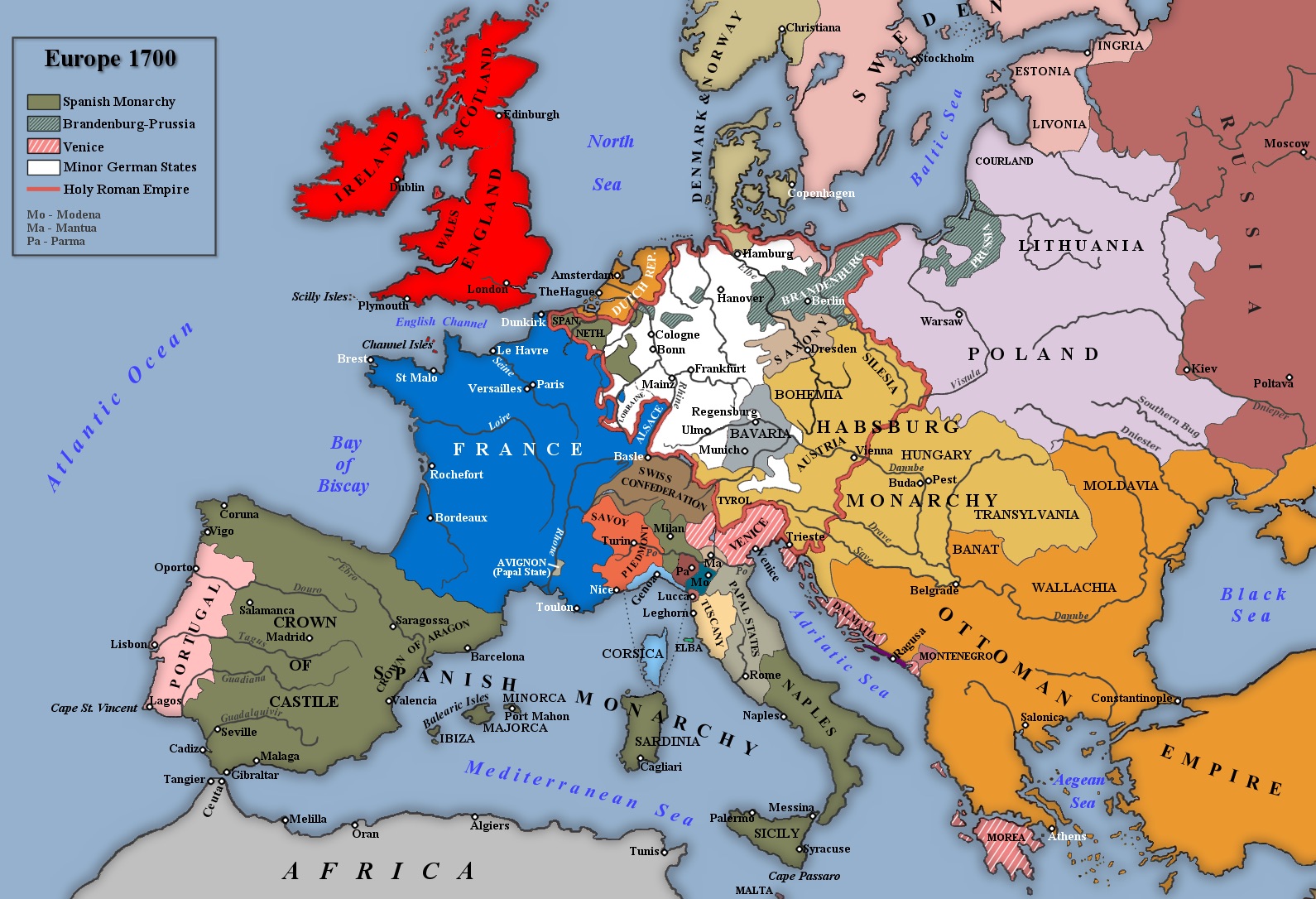 Europe at the beginning of the War of the Spanish Succession, 1700 The Enlightenment took hold in most European countries and influenced nations globally, often with a specific local emphasis. For example, in France it became associated with anti-government and anti-Church radicalism, while in Germany it reached deep into the middle classes, where it expressed a spiritualistic and nationalistic tone without threatening governments or established churches.[105] Government responses varied widely. In France, the government was hostile, and the philosophes fought against its censorship, sometimes being imprisoned or hounded into exile. The British government, for the most part, ignored the Enlightenment's leaders in England and Scotland, although it did give Newton a knighthood and a very lucrative government office. A common theme among most countries which derived Enlightenment ideas from Europe was the intentional non-inclusion of Enlightenment philosophies pertaining to slavery. Originally during the French Revolution, a revolution deeply inspired by Enlightenment philosophy, "France's revolutionary government had denounced slavery, but the property-holding 'revolutionaries' then remembered their bank accounts."[106] Slavery frequently showed the limitations of the Enlightenment ideology as it pertained to European colonialism, since many colonies of Europe operated on a plantation economy fueled by slave labor. In 1791, the Haitian Revolution, a slave rebellion by emancipated slaves against French colonial rule in the colony of Saint-Domingue, broke out. European nations and the United States, despite the strong support for Enlightenment ideals, refused to "[give support] to Saint-Domingue's anti-colonial struggle."[106] |
国家ごとの差異 スペイン継承戦争開始時のヨーロッパ、1700年 啓蒙思想はほとんどのヨーロッパ諸国で根付き、世界中の国民に影響を与えた。その影響はしばしば特定の地域的特徴を帯びていた。例えばフランスでは反政 府・反教会の急進主義と結びつき、ドイツでは中産階級に深く浸透し、政府や既存の教会を脅かすことなく、精神主義的かつナショナリスト的な色合いを帯び た。[105] 政府の対応は大きく異なった。フランスでは政府が敵対的であり、哲学者たちは検閲と戦い、投獄されたり国外追放に追い込まれたりした。イギリス政府は、 ニュートンに騎士号と非常に有利な政府職を与えたものの、イングランドとスコットランドの啓蒙思想の指導者たちをほぼ無視した。 ヨーロッパから啓蒙思想を受け入れたほとんどの国に共通する特徴は、奴隷制に関する啓蒙哲学を意図的に排除したことだ。啓蒙思想に深く影響されたフランス 革命の初期には、「革命政府は奴隷制を非難したが、財産を持つ『革命家』たちはその後、自らの銀行口座を思い出した」のである。[106] 奴隷制は、ヨーロッパの植民地主義に関わる啓蒙イデオロギーの限界を頻繁に露呈した。多くのヨーロッパ植民地が奴隷労働に支えられたプランテーション経済 で運営されていたからだ。1791年、サン・ドミンゴ植民地で解放奴隷によるフランス植民地支配への反乱、ハイチ革命が勃発した。啓蒙主義の理想を強く支 持していたにもかかわらず、ヨーロッパの国民とアメリカ合衆国は「サン・ドミンゴの反植民地闘争への支援」を拒否した。[106] |
| Great Britain England Further information: Georgian era § English Enlightenment The very existence of an English Enlightenment has been hotly debated by scholars. The majority of textbooks on British history make little or no mention of an English Enlightenment. Some surveys of the entire Enlightenment include England and others ignore it, although they do include coverage of such major intellectuals as Joseph Addison, Edward Gibbon, John Locke, Isaac Newton, Alexander Pope, Joshua Reynolds, and Jonathan Swift.[107] Freethinking, a term describing those who stood in opposition to the institution of the Church, and the literal belief in the Bible, can be said to have begun in England no later than 1713, when Anthony Collins wrote his "Discourse of Free-thinking," which gained substantial popularity. This essay attacked the clergy of all churches and was a plea for deism. Roy Porter argues that the reasons for this neglect were the assumptions that the movement was primarily French-inspired, that it was largely a-religious or anti-clerical, and that it stood in outspoken defiance to the established order.[108] Porter admits that after the 1720s England could claim thinkers to equal Diderot, Voltaire, or Rousseau. However, its leading intellectuals such as Gibbon,[109] Edmund Burke and Samuel Johnson were all quite conservative and supportive of the standing order. Porter says the reason was that Enlightenment had come early to England and had succeeded such that the culture had accepted political liberalism, philosophical empiricism, and religious toleration, positions which intellectuals on the continent had to fight against powerful odds. Furthermore, England rejected the collectivism of the continent and emphasized the improvement of individuals as the main goal of enlightenment.[110] According to Derek Hirst, the 1640s and 1650s saw a revived economy characterised by growth in manufacturing, the elaboration of financial and credit instruments, and the commercialisation of communication. The gentry found time for leisure activities, such as horse racing and bowling. In the high culture important innovations included the development of a mass market for music, increased scientific research, and an expansion of publishing. All the trends were discussed in depth at the newly established coffee houses.[111][112] 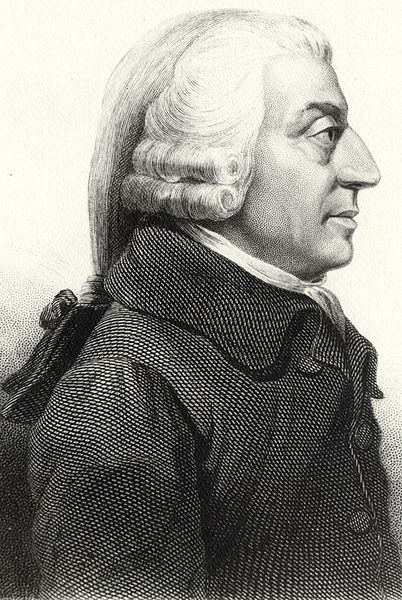 One leader of the Scottish Enlightenment was Adam Smith, the father of modern economic science. Scotland In the Scottish Enlightenment, the principles of sociability, equality, and utility were disseminated in schools and universities, many of which used sophisticated teaching methods which blended philosophy with daily life.[20] Scotland's major cities created an intellectual infrastructure of mutually supporting institutions such as schools, universities, reading societies, libraries, periodicals, museums, and masonic lodges.[113] The Scottish network was "predominantly liberal Calvinist, Newtonian, and 'design' oriented in character which played a major role in the further development of the transatlantic Enlightenment."[114] In France, Voltaire said "we look to Scotland for all our ideas of civilization."[115] The focus of the Scottish Enlightenment ranged from intellectual and economic matters to the specifically scientific as in the work of William Cullen, physician and chemist; James Anderson, agronomist; Joseph Black, physicist and chemist; and James Hutton, the first modern geologist.[35][116] Anglo-American colonies Further information: American Enlightenment 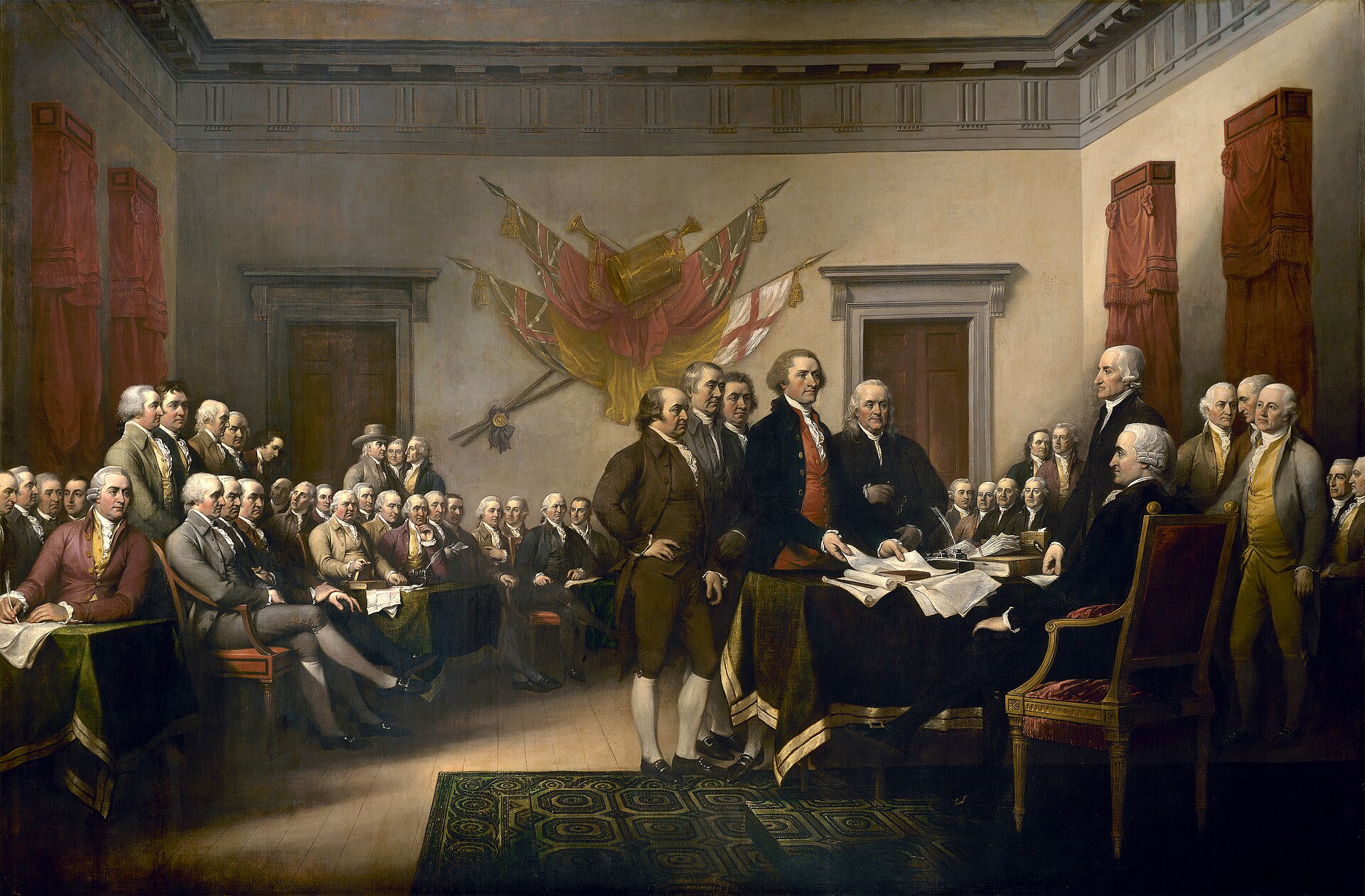 John Trumbull's Declaration of Independence imagines the drafting committee presenting its work to the Congress. Several Americans, especially Benjamin Franklin and Thomas Jefferson, played a major role in bringing Enlightenment ideas to the New World and in influencing British and French thinkers.[117] Franklin was influential for his political activism and for his advances in physics.[118][119] The cultural exchange during the Age of Enlightenment ran in both directions across the Atlantic. Thinkers such as Paine, Locke, and Rousseau all take Native American cultural practices as examples of natural freedom.[120] The Americans closely followed English and Scottish political ideas, as well as some French thinkers such as Montesquieu.[121] As deists, they were influenced by ideas of John Toland and Matthew Tindal. There was a great emphasis upon liberty, republicanism, and religious tolerance. There was no respect for monarchy or inherited political power. Deists reconciled science and religion by rejecting prophecies, miracles, and biblical theology. Leading deists included Thomas Paine in The Age of Reason and Thomas Jefferson in his short Jefferson Bible, from which he removed all supernatural aspects.[122] |
イギリス イングランド 詳細情報:ジョージ王朝時代 § 英国啓蒙主義 英国啓蒙主義の存在そのものは、学者たちの間で熱く議論されている。英国史に関する教科書の大半は、英国啓蒙主義についてほとんど、あるいはまったく触れ ていない。啓蒙主義全体に関する調査の中には、イングランドを取り上げるものもあれば、無視するものもある。ただし、ジョセフ・アディソン、エドワード・ ギボン、ジョン・ロック、アイザック・ニュートン、アレクサンダー・ポープ、ジョシュア・レイノルズ、ジョナサン・スウィフトといった主要な知識人は取り 上げられている。[107] 教会という制度や聖書を文字通り信じることに反対した人々を表す「自由思想」という用語は、1713年までにイギリスで始まったと言える。この年、アンソ ニー・コリンズが「自由思想の言説」を書き、それが大きな人気を博した。この言説は、あらゆる教会の聖職者を攻撃し、自然神論を擁護するものであった。 ロイ・ポーターは、この軽視の理由は、この運動が主にフランスに端を発したものであり、大部分が非宗教的あるいは反聖職的であり、既存の秩序に率直に反抗 する立場にあるという仮定があったためだと主張している。[108] ポーターは、1720年代以降、イングランドはディドロ、ヴォルテール、ルソーに匹敵する思想家を擁していたことを認めている。しかし、ギボン、 [109] エドマンド・バーク、サミュエル・ジョンソンといった英国の主要知識人は皆、極めて保守的で既存秩序を支持していた。ポーターによれば、その理由は啓蒙思 想が英国に早く到来し、政治的自由主義・哲学的経験論・宗教的寛容といった立場を文化が受け入れ、大陸の知識人が強大な逆風と戦わねばならなかった立場を 英国は既に達成していたからだという。さらに英国は大陸の集団主義を拒絶し、啓蒙の主目的を個人の向上に置いた。[110] デレク・ハーストによれば、1640年代から1650年代にかけて経済は回復し、製造業の成長、金融・信用手段の高度化、通信の商業化が特徴だった。紳士 階級は競馬やボウリングといった余暇活動に時間を割くようになった。高尚な文化分野では、音楽の大衆市場の発展、科学研究の増加、出版の拡大といった重要 な革新があった。こうした潮流はすべて、新たに設立された喫茶店で深く議論された。[111][112]  スコットランド啓蒙主義の指導者の一人が、現代経済学の父アダム・スミスである。 スコットランド スコットランド啓蒙主義では、社交性・平等・実用性の原則が学校や大学で広められた。その多くは哲学と日常生活を融合させた洗練された教授法を採用してい た。[20] スコットランドの主要都市では、学校、大学、読書会、図書館、定期刊行物、博物館、フリーメイソンロッジといった相互に支え合う機関からなる知的基盤が形 成された。[113] スコットランドのネットワークは「主にリベラルなカルヴァン主義、ニュートン主義、そして『デザイン』志向の性格を持ち、大西洋を跨ぐ啓蒙思想のさらなる 発展に重要な役割を果たした」[114]。フランスでは、ヴォルテールが「文明に関するあらゆる考えはスコットランドに求める」と述べた。[115] スコットランド啓蒙主義の焦点は、知的・経済的問題から、医師であり化学者であるウィリアム・カレン、農学者であるジェームズ・アンダーソン、物理学者で あり化学者であるジョセフ・ブラック、そして最初の近代的な地質学者であるジェームズ・ハットンの研究のように、特に科学的な問題にまで及んだ。[35] [116] 英米植民地 詳細情報:アメリカ啓蒙主義  ジョン・トランブルの『独立宣言』は、起草委員会が議会にその成果を提示する様子を描いている。 ベンジャミン・フランクリンやトーマス・ジェファーソンをはじめとする数人のアメリカ人が、啓蒙思想を新大陸にもたらし、イギリスやフランスの思想家に影 響を与える上で大きな役割を果たした。[117] フランクリンは、その政治活動と物理学における進歩で影響力があった。[118][119] 啓蒙時代における文化交流は、大西洋を挟んで双方向で進んだ。ペイン、ロック、ルソーといった思想家たちは皆、ネイティブアメリカン文化の慣習を自然の自 由の例として挙げている。[120] アメリカ人たちは、イギリスやスコットランドの政治思想、そしてモンテスキューなどのフランス人思想家たちの思想を熱心に追った。[121] 自然神論者として、彼らはジョン・トーランドやマシュー・ティンダルの思想に影響を受けた。自由、共和主義、宗教的寛容が強く強調された。君主制や世襲的 政治権力への敬意は皆無だった。デイストたちは予言、奇跡、聖書神学を否定することで科学と宗教を調和させた。代表的なデイストには『理性時代』のトマ ス・ペインや、超自然的要素を全て削除した『ジェファーソン聖書』のトマス・ジェファーソンがいた。[122] |
| Netherlands The Dutch Enlightenment began in 1640.[123] During the Early Dutch Enlightenment (1640–1720), many books were translated from Latin, French or English to Dutch, often at the risk of their translators and publishers.[123] By the 1720s, the Dutch Republic had also become a major center for printing and exporting banned books to France.[124] The most famous figure of the Dutch Enlightenment was Baruch Spinoza. France Main article: French Enlightenment The French Enlightenment was influenced by England[125] and in turn influenced other national enlightenments. As worded by Sharon A. Stanley, "the French Enlightenment stands out from other national enlightenments for its unrelenting assault on church leadership and theology."[126] German states Main article: German Enlightenment See also: Hymnody of continental Europe § Rationalism Prussia took the lead among the German states in sponsoring the political reforms that Enlightenment thinkers urged absolute rulers to adopt. There were important movements as well in the smaller states of Bavaria, Saxony, Hanover, and the Palatinate. In each case, Enlightenment values became accepted and led to significant political and administrative reforms that laid the groundwork for the creation of modern states.[127] The princes of Saxony, for example, carried out an impressive series of fundamental fiscal, administrative, judicial, educational, cultural, and general economic reforms. The reforms were aided by the country's strong urban structure and influential commercial groups and modernized pre-1789 Saxony along the lines of classic Enlightenment principles.[128][129] 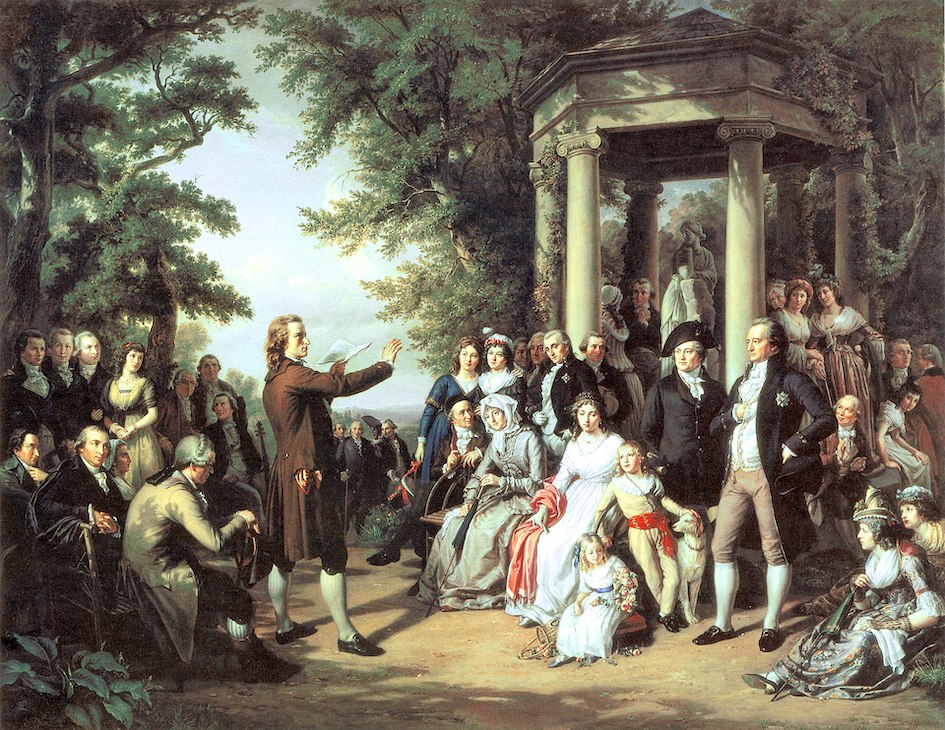 Weimar's Courtyard of the Muses by Theobald von Oer, a tribute to The Enlightenment and the Weimar Classicism depicting German poets Schiller, Wieland, Herder, and Goethe Before 1750, the German upper classes looked to France for intellectual, cultural, and architectural leadership, as French was the language of high society. By the mid-18th century, the Aufklärung (The Enlightenment) had transformed German high culture in music, philosophy, science, and literature. Christian Wolff was the pioneer as a writer who expounded the Enlightenment to German readers and legitimized German as a philosophic language.[130] Johann Gottfried von Herder broke new ground in philosophy and poetry, as a leader of the Sturm und Drang movement of proto-Romanticism. Weimar Classicism (Weimarer Klassik) was a cultural and literary movement based in Weimar that sought to establish a new humanism by synthesizing Romantic, classical, and Enlightenment ideas. The movement (from 1772 until 1805) involved Herder as well as polymath Johann Wolfgang von Goethe and Friedrich Schiller, a poet and historian. The theatre principal Abel Seyler greatly influenced the development of German theatre and promoted serious German opera, new works and experimental productions, and the concept of a national theatre.[131] Herder argued that every group of people had its own particular identity, which was expressed in its language and culture. This legitimized the promotion of German language and culture and helped shape the development of German nationalism. Schiller's plays expressed the restless spirit of his generation, depicting the hero's struggle against social pressures and the force of destiny.[132] German music, sponsored by the upper classes, came of age under composers Johann Sebastian Bach, Joseph Haydn, and Wolfgang Amadeus Mozart.[133] In remote Königsberg, Kant tried to reconcile rationalism and religious belief, individual freedom, and political authority. Kant's work contained basic tensions that would continue to shape German thought—and indeed all of European philosophy—well into the 20th century.[134] German Enlightenment won the support of princes, aristocrats, and the middle classes, and it permanently reshaped the culture.[135] However, there was a conservatism among the elites that warned against going too far.[136] In 1788, Prussia issued an "Edict on Religion" that forbade preaching any sermon that undermined popular belief in the Holy Trinity or the Bible. The goal was to avoid theological disputes that might impinge on domestic tranquility. Men who doubted the value of Enlightenment favoured the measure, but so too did many supporters. German universities had created a closed elite that could debate controversial issues among themselves, but spreading them to the public was seen as too risky. This intellectual elite was favoured by the state, but that might be reversed if the process of the Enlightenment proved politically or socially destabilizing.[137] Austria Main article: Austrian Enlightenment During the 18th century, Austria was under Habsburg rule. The reign of Maria Theresa, the first Habsburg monarch to be considered influenced by the Enlightenment in some areas, was marked by a mix of enlightenment and conservatism. Her son Joseph II's brief reign was marked by this conflict, with his ideology of Josephinism facing opposition. Joseph II carried out numerous reforms in the spirit of the Enlightenment, which affected, for example, the school system, monasteries and the legal system. Emperor Leopold II, who was an early opponent of capital punishment, had a brief and contentious rule that was mostly marked by relations with France. Similarly, Emperor Francis II's rule was primarily marked by relations with France. The ideas of the Enlightenment also appeared in literature and theater works. Joseph von Sonnenfels was an important representative. In music, Austrian musicians such as Joseph Haydn and Wolfgang Amadeus Mozart were associated with the Enlightenment. Hungary The Hungarian Enlightenment[138] emerged during the 18th century, while Hungary was part of the Habsburg Empire. The Hungarian Enlightenment is usually said to have begun in 1772 and was greatly influenced by French Enlightenment (through Vienna).[138] Romania The Romanian Enlightenment[139] emerged during the 18th century across the three major historical regions inhabited by Romanians: Transylvania, Wallachia, and Moldavia. At that time, Transylvania was in the Habsburg Empire while Wallachia and Moldavia were vassals of the Ottoman Empire. The Transylvanian Enlightenment was represented by the Transylvanian School, a group of thinkers who promoted a cultural revival and rights for Romanians (who were marginalized by the Habsburgs). The Wallachian Enlightenment was represented by such figures as Dinicu Golescu (1777–1830), while the Moldavian Englightenment was headed by prince Dimitrie Cantemir (1673-1723). Switzerland Main article: Swiss Enlightenment The Enlightenment arrived relatively late in Switzerland, spreading from England, the Netherlands, and France toward the end of the 17th century. The movement initially took hold in Protestant regions, where it gradually replaced orthodox religious thinking. The 1712 victory of the reformed cantons of Zurich and Bern over the five Catholic cantons of central Switzerland in the Second War of Villmergen marked both a Protestant triumph and a victory for Enlightenment ideas in the economically more developed regions.[140] In Switzerland, which lacked a central court or academy, the Enlightenment spread through the intellectual elite of reformed cities, particularly pastors educated in academies and colleges with strong humanist traditions. The theological "Helvetic triumvirate" of Jean-Alphonse Turrettini (Geneva), Jean-Frédéric Ostervald (Neuchâtel), and Samuel Werenfels (Basel) led their churches toward a humanistic Christianity beginning in 1697, creating what Paul Wernle termed "reasoned orthodoxy" that balanced rational thought with Christian ethics.[140] Swiss Enlightenment thinkers made significant contributions across multiple fields. The Romand school developed influential theories of natural law, with scholars like Jean Barbeyrac (Lausanne), Jean-Jacques Burlamaqui (Geneva), and Emer de Vattel (Neuchâtel) promoting concepts of inalienable rights and justified resistance to tyranny that influenced the American independence movement. In literature, Johann Jakob Bodmer and Johann Jakob Breitinger made Zurich a center of German literary innovation, while Albert von Haller's poetry represented the peak of Swiss Enlightenment literature. Jean-Jacques Rousseau, considering himself both a Genevan and Swiss citizen, developed democratic republican theories that extended Genevan models to broader European federalist principles.[140] The movement was characterized by what scholars term "Helvetism" – specifically Swiss aspects including a Christian conception of natural law, patriotic ethics, and philosophical approaches grounded in practical pedagogy and economics. Most distinctively, Swiss Enlightenment thought celebrated Alpine nature, viewing Switzerland as the "land of shepherds" whose republican and federalist traditions were shaped by its mountain environment. The movement organized through numerous societies and publications, including the Encyclopédie d'Yverdon (1770-1780), which offered a moderate alternative to the French Encyclopédie. Swiss intellectuals gained international prominence, with many serving in foreign academies, particularly in Berlin under Frederick II and in St. Petersburg under Catherine II.[140] |
オランダ オランダ啓蒙主義は1640年に始まった[123]。初期オランダ啓蒙主義期(1640年~1720年)には、多くの書籍がラテン語、フランス語、英語か らオランダ語へ翻訳された。翻訳者や出版者はしばしば危険を冒してこれを行った[123]。1720年代までに、オランダ共和国は禁書印刷とフランスへの 輸出の主要拠点ともなった。[124] オランダ啓蒙主義で最も著名な人物はバルーフ・スピノザである。 フランス 主な記事: フランス啓蒙主義 フランス啓蒙主義はイングランドの影響を受け[125]、逆に他の国民の啓蒙主義に影響を与えた。シャロン・A・スタンレーが述べたように、「フランス啓蒙主義は、教会指導層と神学に対する容赦ない攻撃において、他の国民の啓蒙主義と一線を画している」[126]。 ドイツ諸邦 メイン記事: ドイツ啓蒙主義 関連項目: ヨーロッパ大陸の賛美歌 § 理性主義 プロイセンは、啓蒙思想家が絶対君主に採用を促した政治改革を後押しする点で、ドイツ諸邦の中で主導的役割を果たした。バイエルン、ザクセン、ハノー ファー、プファルツといった小国でも重要な運動が起こった。いずれの場合も、啓蒙主義の価値観が受け入れられ、近代国家創設の基盤となる重要な政治・行政 改革につながった[127]。例えばザクセンの諸侯は、財政・行政・司法・教育・文化・経済全般にわたる一連の抜本的改革を成し遂げた。これらの改革は、 同国の強固な都市構造と影響力ある商業集団に支えられ、1789年以前のザクセンを古典的啓蒙主義の原則に沿って近代化したのである。[128] [129]  テオバルト・フォン・オーア作「ワイマールのミューズの中庭」。啓蒙主義とワイマール古典主義への賛辞として、ドイツの詩人シラー、ヴィーラント、ヘルダー、ゲーテを描いた作品 1750年以前、ドイツの上流階級は知的・文化的・建築的指導力をフランスに求めていた。当時の上流社会の共通語はフランス語だったからだ。18世紀半ば までに、啓蒙主義(アウフクレルクンング)は音楽・哲学・科学・文学におけるドイツの高尚な文化を変容させた。クリスティアン・ヴォルフは啓蒙思想をドイ ツ読者に解説し、哲学言語としてのドイツ語を正当化した先駆的著述家である。[130] ヨハン・ゴットフリート・フォン・ヘルダーは、前ロマン主義のストルム・ウント・ドラング運動の指導者として、哲学と詩の分野で新たな地平を切り開いた。 ワイマール古典主義(Weimarer Klassik)はワイマールを拠点とした文化的・文学的運動であり、ロマン主義、古典主義、啓蒙思想を統合することで新たなヒューマニズムを確立しよう とした。この運動(1772年から1805年まで)にはヘルダーに加え、博学者ヨハン・ヴォルフガング・フォン・ゲーテ、詩人かつ歴史家のフリードリヒ・ シラーが関わった。劇場支配人アベル・ザイラーはドイツ演劇の発展に大きく影響し、本格的なドイツオペラ、新作・実験的演出、国民劇場の概念を推進した。 [131] ヘルダーは、あらゆる集団が独自の個別主義を持ち、それが言語と文化に表れると主張した。これはドイツ語とドイツ文化の振興を正当化し、ドイツナショナリ ズムの発展を形作る一助となった。シラーの戯曲は、社会的な圧力や運命の力に対する英雄の闘いを描き、彼の世代の落ち着きのない精神を表現した。 上流階級に支援されたドイツ音楽は、ヨハン・ゼバスティアン・バッハ、ヨーゼフ・ハイドン、ヴォルフガング・アマデウス・モーツァルトといった作曲家たちのもとで成熟期を迎えた。[133] 辺境のケーニヒスベルクで、カントは合理主義と宗教的信念、個人の自由と政治的権威の調和を試みた。カントの著作には、20世紀に至るまでドイツ思想―そ して実際はヨーロッパ哲学全体―を形作り続ける根本的な緊張関係が含まれていた。[134]ドイツ啓蒙主義は諸侯、貴族、中産階級の支持を得て、文化を恒 久的に再構築した。[135] しかし、エリート層には行き過ぎを戒める保守的な姿勢もあった。[136] 1788年、プロイセンは「宗教に関する勅令」を発布し、聖三位一体や聖書に対する民衆の信仰を損なう説教を禁じた。その目的は、国内の平穏を損なう恐れ のある神学論争を避けることにあった。啓蒙主義の価値を疑う者たちはこの措置を支持したが、多くの支持者も同様であった。ドイツの大学は閉鎖的なエリート 層を生み出し、彼らは論争的な問題を内部で議論できたが、それを公衆に広めることは危険すぎると見なされた。この知的エリート層は国家に寵愛されていた が、啓蒙主義の過程が政治的・社会的に不安定化をもたらすと判明すれば、その立場は逆転する可能性があった。[137] オーストリア 詳細記事: オーストリア啓蒙主義 18世紀、オーストリアはハプスブルク家の支配下にあった。マリア・テレジアの治世は、啓蒙主義の影響を一部受けたとされる最初のハプスブルク君主とし て、啓蒙主義と保守主義が混在する特徴を示した。その息子ヨーゼフ2世の短い治世はこの対立に特徴づけられ、彼のイデオロギーであるヨーゼフィニズムは反 対に直面した。ヨーゼフ2世は啓蒙主義の精神に基づき、学校制度、修道院、法制度など多岐にわたる改革を実施した。死刑制度の早期廃止を主張した皇帝レオ ポルト2世の治世は短く、主にフランスとの関係に特徴づけられた。同様に、皇帝フランツ2世の治世もフランスとの関係が主な特徴であった。 啓蒙思想は文学や演劇作品にも現れた。ヨーゼフ・フォン・ゾンネンフェルスは重要な代表者である。音楽分野では、ヨーゼフ・ハイドンやヴォルフガング・アマデウス・モーツァルトといったオーストリアの音楽家が啓蒙思想と結びついている。 ハンガリー ハンガリー啓蒙主義[138]は18世紀、ハンガリーがハプスブルク帝国の一部であった時期に現れた。ハンガリー啓蒙主義は通常1772年に始まり、ウィーン経由でフランス啓蒙主義の影響を強く受けたとされる[138]。 ルーマニア ルーマニア啓蒙主義[139]は18世紀、ルーマニア人が居住する三つの主要歴史地域(トランシルヴァニア、ワラキア、モルダヴィア)で現れた。当時、トランシルヴァニアはハプスブルク帝国に属していたが、ワラキアとモルダヴィアはオスマン帝国の属国であった。 トランシルヴァニア啓蒙主義は、トランシルヴァニア学派によって代表された。この思想家集団は、文化復興と(ハプスブルク家によって境界に置かれていた)ルーマニア人の権利を推進した。 ワラキア啓蒙主義はディニク・ゴレスク(1777-1830)らによって代表され、モルダヴィア啓蒙主義はディミトリエ・カンテミル公(1673-1723)が主導した。 スイス 主な記事:スイス啓蒙主義 啓蒙主義はスイスには比較的遅く到来し、17世紀末にイギリス、オランダ、フランスから広がった。この運動は当初プロテスタント地域で根付き、次第に正統 的な宗教思想に取って代わった。1712年のヴィルメルゲン第二次戦争で、チューリッヒとベルンの改革派カントンがスイス中央部の5つのカトリックカント ンに勝利したことは、プロテスタントの勝利であると同時に、経済的に発展した地域における啓蒙思想の勝利でもあった[140]。 中央裁判所やアカデミーを欠いていたスイスでは、啓蒙思想は改革派都市の知識人エリート、特に強い人文主義的伝統を持つアカデミーやカレッジで教育を受け た牧師たちを通じて広まった。ジャン=アルフォンス・トゥレッティーニ(ジュネーブ)、ジャン=フレデリック・オステルヴァルト(ヌーシャテル)、サミュ エル・ヴェレンフェルス(バーゼル)からなる神学上の「ヘルヴェティア三頭政治」は、1697年から各教会を人文主義的キリスト教へと導き、ポール・ヴェ ルンレが「理性的な正統主義」と呼んだ、合理的な思考とキリスト教倫理の均衡を成す思想を創出した。[140] スイス啓蒙思想家は多分野で顕著な貢献を果たした。ロマン派学派は自然法の有力な理論を発展させ、ジャン・バルベラック(ローザンヌ)、ジャン=ジャッ ク・ブルラマキ(ジュネーブ)、エメール・ド・ヴァテル(ヌーシャテル)ら学者が、不可侵の権利や専制への正当な抵抗といった概念を提唱し、アメリカ独立 運動に影響を与えた。文学分野では、ヨハン・ヤコブ・ボドマーとヨハン・ヤコブ・ブライティンガーがチューリッヒをドイツ文学革新の中心地とし、アルベル ト・フォン・ハラーの詩はスイス啓蒙文学の頂点を示した。ジャン=ジャック・ルソーは自らをジュネーブ市民かつスイス市民と位置づけ、ジュネーブのモデル を欧州全体の連邦主義原理へと拡張する民主的共和主義理論を展開した。[140] この運動は、学者らが「ヘルヴェティズム」と呼ぶ特徴を備えていた。具体的には、キリスト教的自然法観念、愛国的倫理観、実践的教育学と経済学に基づく哲 学的アプローチといったスイス特有の側面である。最も顕著なのは、アルプスの自然を称賛し、スイスを「牧人の国」と位置づけた点だ。その共和主義的・連邦 主義的伝統は、山岳環境に形作られていた。この運動は数多くの学会や出版物を通じて組織化され、フランス版『百科全書』に対する穏健な代替案を提示した 『イヴェルドン百科全書』(1770-1780)もその一つである。スイスの知識人は国際的な名声を獲得し、多くの者が外国の学士院、特にフリードリヒ2 世治下のベルリンやエカテリーナ2世治下のサンクトペテルブルクで活動した。[140] |
| Italy Main article: Italian Enlightenment 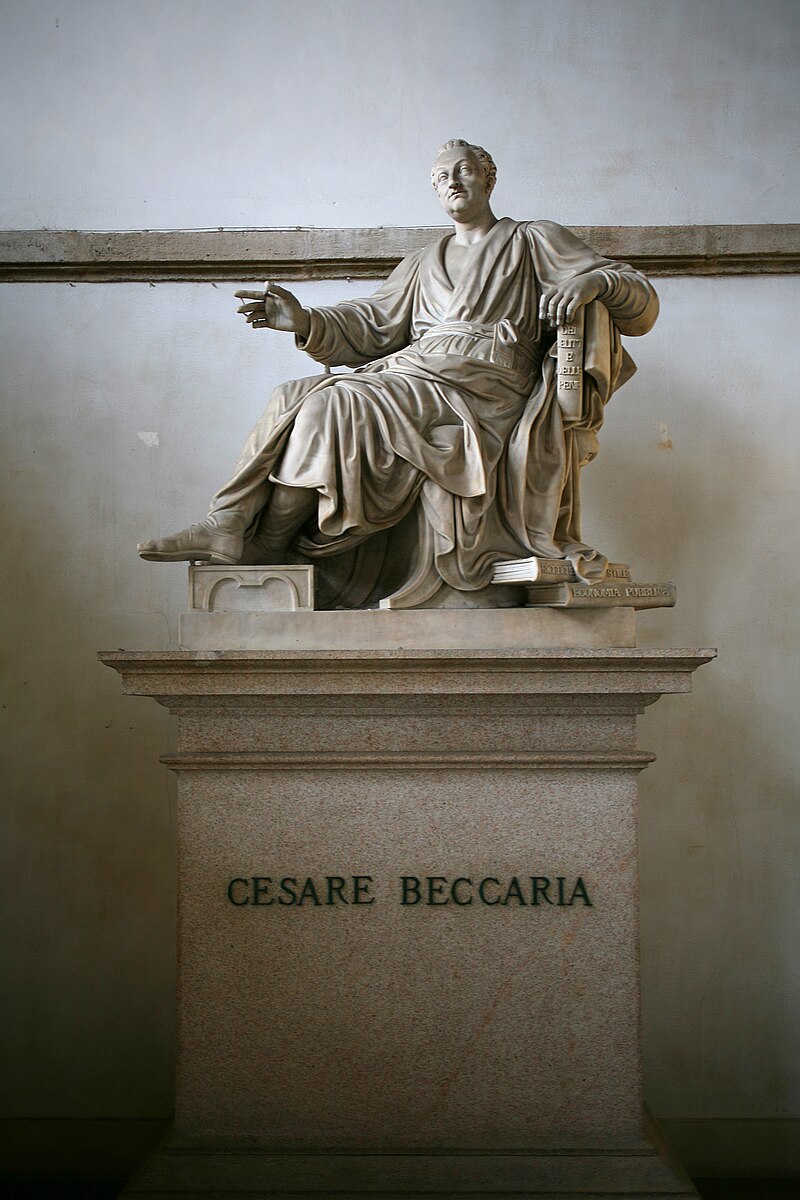 Statue of Cesare Beccaria, considered one of the greatest thinkers of the Enlightenment In Italy the main centers of diffusion of the Enlightenment were Naples and Milan:[141] in both cities the intellectuals took public office and collaborated with the Bourbon and Habsburg administrations. In Naples, Antonio Genovesi, Ferdinando Galiani, and Gaetano Filangieri were active under the tolerant King Charles of Bourbon. However, the Neapolitan Enlightenment, like Vico's philosophy, remained almost always in the theoretical field.[142] Only later, many Enlighteners animated the unfortunate experience of the Parthenopean Republic. In Milan, however, the movement strove to find concrete solutions to problems. The center of discussions was the magazine Il Caffè (1762–1766), founded by brothers Pietro and Alessandro Verri (famous philosophers and writers, as well as their brother Giovanni), who also gave life to the Accademia dei Pugni, founded in 1761. Minor centers were Tuscany, Veneto, and Piedmont, where among others, Pompeo Neri worked. From Naples, Genovesi influenced a generation of southern Italian intellectuals and university students. His textbook Della diceosina, o sia della Filosofia del Giusto e dell'Onesto (1766) was a controversial attempt to mediate between the history of moral philosophy on the one hand and the specific problems encountered by 18th-century commercial society on the other. It contained the greater part of Genovesi's political, philosophical, and economic thought, which became a guidebook for Neapolitan economic and social development.[143] Science flourished as Alessandro Volta and Luigi Galvani made break-through discoveries in electricity. Pietro Verri was a leading economist in Lombardy. Historian Joseph Schumpeter states he was "the most important pre-Smithian authority on Cheapness-and-Plenty."[144] The most influential scholar on the Italian Enlightenment has been Franco Venturi.[145][146] Italy also produced some of the Enlightenment's greatest legal theorists, including Cesare Beccaria, Giambattista Vico, and Francesco Mario Pagano. |
イタリア 主な記事: イタリア啓蒙主義  啓蒙主義の偉大な思想家の一人とされるチェザーレ・ベッカリアの像 イタリアにおいて啓蒙主義が広まった主な中心地はナポリとミラノであった[141]。両都市の知識人は公職に就き、ブルボン家とハプスブルク家の政権と協 力した。ナポリでは、アントニオ・ジェノヴェージ、フェルディナンド・ガリアーニ、ガエターノ・フィランジェーリが寛容なブルボン家のカルロ王のもとで活 動した。しかしナポリ啓蒙主義は、ヴィーコの哲学と同様、ほとんど常に理論の領域にとどまった[142]。後に多くの啓蒙思想家がパルテノペ共和国という 不幸な経験に活気を与えたのは、そのことである。一方ミラノでは、この運動は問題に対する具体的な解決策を見出そうと努めた。議論の中心となったのは、ピ エトロとアレッサンドロ・ヴェッリ兄弟(著名な哲学者・作家であり、弟ジョヴァンニも同様)が創刊した雑誌『イル・カッフェ』(1762-1766年)で あった。彼らは1761年に設立された「拳のアカデミー」にも命を吹き込んだ。小規模な中心地としてはトスカーナ、ヴェネト、ピエモンテがあり、ポンペ オ・ネリらが活動した。 ナポリから、ジェノヴェージは南イタリアの知識人や大学生の世代に影響を与えた。彼の教科書『道徳論、すなわち正義と誠実の哲学について』(1766年) は、道徳哲学の歴史と18世紀商業社会が直面した具体的な問題との間を仲介しようとする論争的な試みであった。この著作にはジェノヴェーゼの政治思想、哲 学思想、経済思想の大部分が収められており、ナポリの経済・社会発展の指針となった[143]。 科学はアレッサンドロ・ボルタとルイージ・ガルヴァーニが電気分野で画期的な発見をしたことで発展した。ピエトロ・ヴェッリはロンバルディアを代表する経 済学者であった。歴史家ヨーゼフ・シュンペーターは彼を「スミス以前の『安価と豊富』に関する最も重要な権威」と評している[144]。イタリア啓蒙主義 研究で最も影響力のある学者はフランコ・ヴェントゥーリである[145][146]。イタリアはまた、チェザーレ・ベッカリア、ジャンバッティスタ・ ヴィーコ、フランチェスコ・マリオ・パガーノら啓蒙主義を代表する法理論家も輩出した。 |
| Bourbon Spain and Spanish America Main articles: Spanish Enlightenment and Spanish American Enlightenment 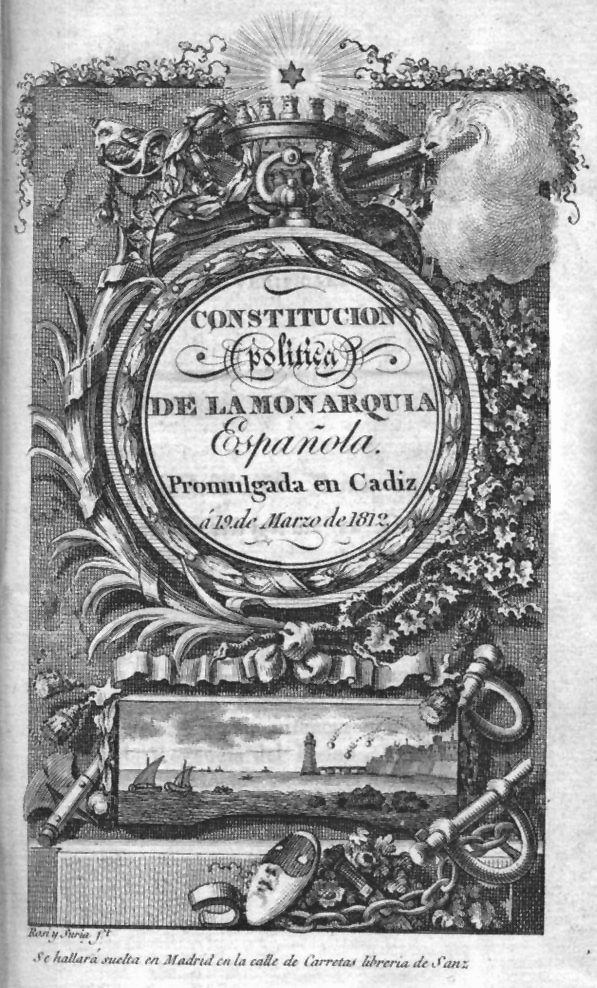 Spanish Constitution of 1812 When Charles II, the last Spanish Habsburg monarch, died his successor was from the French House of Bourbon, initiating a period of French Enlightenment influence in Spain and the Spanish Empire.[147][148] In the 18th Century, the Spanish continued to expand their empire in the Americas with the Spanish missions in California and established missions deeper inland in South America. Under Charles III, the crown began to implement serious structural changes. The monarchy curtailed the power of the Catholic Church, and established a standing military in Spanish America. Freer trade was promoted under comercio libre in which regions could trade with companies sailing from any other Spanish port, rather than the restrictive mercantile system. The crown sent out scientific expeditions to assert Spanish sovereignty over territories it claimed but did not control, but also importantly to discover the economic potential of its far-flung empire. Botanical expeditions sought plants that could be of use to the empire.[149] Charles IV gave Prussian scientist Alexander von Humboldt free rein to travel in Spanish America, usually closed to foreigners, and more importantly, access to crown officials to aid the success of his scientific expedition.[150] When Napoleon invaded Spain in 1808, Ferdinand VII abdicated and Napoleon placed his brother Joseph Bonaparte on the throne. To add legitimacy to this move, the Bayonne Constitution was promulgated, which included representation from Spain's overseas components, but most Spaniards rejected the whole Napoleonic project. A war of national resistance erupted. The Cortes de Cádiz (parliament) was convened to rule Spain in the absence of the legitimate monarch, Ferdinand. It created a new governing document, the Constitution of 1812, which laid out three branches of government: executive, legislative, and judicial; put limits on the king by creating a constitutional monarchy; defined citizens as those in the Spanish Empire without African ancestry; established universal manhood suffrage; and established public education starting with primary school through university as well as freedom of expression. The constitution was in effect from 1812 until 1814, when Napoleon was defeated and Ferdinand was restored to the throne of Spain. Upon his return, Ferdinand repudiated the constitution and reestablished absolutist rule.[151] |
ブルボン朝スペインとスペイン領アメリカ 主な記事: スペイン啓蒙主義とスペイン領アメリカ啓蒙主義  1812年スペイン憲法 スペイン最後のハプスブルク君主カルロス2世が死去した際、後継者はフランスのブルボン家出身であった。これによりスペインとスペイン帝国においてフランス啓蒙主義の影響が及ぶ時代が始まった。[147][148] 18世紀、スペインはカリフォルニアのスペイン伝道所や南米内陸部への伝道所設立により、アメリカ大陸での帝国拡大を続けた。カルロス3世の治世下で、王 室は本格的な構造改革を実施し始めた。王政はカトリック教会の権力を制限し、スペイン領アメリカに常備軍を配置した。自由貿易(コメルシオ・リブレ)が推 進され、地域は制限的な重商主義体制ではなく、他のスペイン港から出航する会社と自由に取引できるようになった。王室は、自国が領有権を主張しているが支 配権は持っていない領土に対するスペインの主権を主張するため、また、その広大な帝国の経済的可能性を発見するという重要な目的のために、科学探検隊を派 遣した。植物探検隊は、帝国に有用な植物を探した。[149] カルロス4世は、プロイセンの科学者アレクサンダー・フォン・フンボルトに、通常は外国人に閉鎖されているスペイン領アメリカを自由に旅行する許可を与 え、さらに重要なことに、彼の科学探検の成功を支援するために王室当局者にアクセスする許可を与えた。[150] 1808年にナポレオンがスペインに侵攻すると、フェルディナンド7世は退位し、ナポレオンは弟のジョセフ・ボナパルトを王位に就けた。この動きに正当性 を加えるため、スペインの海外領土からの代表も含むバイヨンヌ憲法が公布されたが、ほとんどのスペイン国民はナポレオンの計画全体を拒否した。国民抵抗戦 争が勃発した。合法的な君主であるフェルディナンドが不在の中、スペインを統治するためにカディス議会(コルテス・デ・カディス)が召集された。これによ り新たな統治文書である1812年憲法が制定された。この憲法は三権分立(行政・立法・司法)を定め、立憲君主制を創設して国王の権限を制限した。市民権 をスペイン帝国内のアフリカ系祖先を持たない者に限定し、男子普通選挙権を確立した。さらに初等教育から大学までの公教育制度と表現の自由を定めた。この 憲法は1812年から1814年まで施行されたが、ナポレオンが敗北しフェルディナンドがスペイン王位に復帰すると、フェルディナンドは憲法を無効化し絶 対主義統治を再確立した。 |
| Haiti The Haitian Revolution began in 1791 and ended in 1804 and shows how Enlightenment ideas "were part of complex transcultural flows."[10] Radical ideas in Paris during and after the French Revolution were mobilized in Haiti, such as by Toussaint Louverture.[10] Toussaint had read the critique of European colonialism in Guillaume Thomas François Raynal's book Histoire des deux Indes and "was particularly impressed by Raynal's prediction of the coming of a 'Black Spartacus.'"[10] The revolution combined Enlightenment ideas with the experiences of the slaves in Haiti, two-thirds of whom had been born in Africa and could "draw on specific notions of kingdom and just government from West and Central Africa, and to employ religious practices such as voodoo for the formation of revolutionary communities."[10] The revolution also affected France and "forced the French National Convention to abolish slavery in 1794."[10] |
ハイチ ハイチ革命は1791年に始まり1804年に終結したが、この革命は啓蒙思想が「複雑な越境的な流れの一部であった」ことを示している。[10] フランス革命期およびその後のパリで生まれた急進的思想は、トゥーサン・ルヴェルチュールらによってハイチで活用された。[10] トゥーサンはギヨーム・トマ・フランソワ・レイナルの著書『二つのインド諸島の歴史』でヨーロッパ植民地主義への批判を読み、「特に『黒人のスパルタク ス』の到来を予言したレイナルの言葉に強く感銘を受けた」のである。[10] この革命は啓蒙思想とハイチの奴隷たちの経験を融合させた。奴隷の3分の2はアフリカ生まれであり、彼らは「西・中央アフリカ特有の王国観や正義の統治概 念を援用し、革命共同体の形成にヴードゥー教などの宗教的実践を活用できた」[10]. 革命はフランスにも影響を与え、「フランス国民公会に1794年の奴隷制廃止を強いた」[10]. |
| Portugal and Brazil See also: History of Portugal (1640–1777) The Portuguese Enlightenment was heavily marked by the rule of Prime Minister Marquis of Pombal under King Joseph I from 1756 to 1777. Following the 1755 Lisbon earthquake which destroyed a large part of Lisbon, the Marquis of Pombal implemented important economic policies to regulate commercial activity (in particular with Brazil and England), and to standardise quality throughout the country (for example by introducing the first integrated industries in Portugal). His reconstruction of Lisbon's riverside district in straight and perpendicular streets (the Lisbon Baixa), methodically organized to facilitate commerce and exchange (for example by assigning to each street a different product or service), can be seen as a direct application of the Enlightenment ideas to governance and urbanism. His urbanistic ideas, also being the first large-scale example of earthquake engineering, became collectively known as Pombaline style, and were implemented throughout the kingdom during his stay in office. His governance was as enlightened as ruthless, see for example the Távora affair. In literature, the first Enlightenment ideas in Portugal can be traced back to the diplomat, philosopher, and writer António Vieira[152] who spent a considerable amount of his life in colonial Brazil denouncing discriminations against New Christians and the indigenous peoples in Brazil. During the 18th century, enlightened literary movements such as the Arcádia Lusitana (lasting from 1756 until 1776, then replaced by the Nova Arcádia in 1790 until 1794) surfaced in the academic medium, in particular involving former students of the University of Coimbra. A distinct member of this group was the poet Manuel Maria Barbosa du Bocage. The physician António Nunes Ribeiro Sanches was also an important Enlightenment figure, contributing to the Encyclopédie and being part of the Russian court. The ideas of the Enlightenment influenced various economists and anti-colonial intellectuals throughout the Portuguese Empire, such as José de Azeredo Coutinho, José da Silva Lisboa, Cláudio Manoel da Costa, and Tomás Antônio Gonzaga. The Napoleonic invasion of Portugal had consequences for the Portuguese monarchy. With the aid of the British navy, the Portuguese royal family was evacuated to Brazil, its most important colony. Even though Napoleon had been defeated, the royal court remained in Brazil. The Liberal Revolution of 1820 forced the return of the royal family to Portugal. The terms by which the restored king was to rule was a constitutional monarchy under the Constitution of Portugal. Brazil declared its independence from Portugal in 1822 and became a monarchy. |
ポルトガルとブラジル 関連項目: ポルトガルの歴史 (1640年–1777年) ポルトガルの啓蒙主義は、1756年から1777年にかけてジョゼ1世の治世下でポンバル侯爵が首相を務めた時代に大きく特徴づけられた。1755年のリ スボン大地震でリスボンの大部分が破壊された後、ポンバル侯爵は商業活動(特にブラジルやイギリスとの取引)を規制し、国内全体の品質を標準化するための 重要な経済政策を実施した(例えば、ポルトガル初の統合産業を導入した)。ポムバル侯爵によるリスボン川岸地区の再建は、直線的で直交する通り(リスボ ン・バイシャ地区)を体系的に配置し、商業と交流を促進する(例えば各通りに異なる商品やサービスを割り当てる)もので、啓蒙思想を統治と都市計画に直接 応用したものと見なせる。彼の都市計画思想は、大規模な地震対策技術の先駆けでもあり、総称してポンバル様式として知られるようになり、在任中に王国全域 で実施された。その統治は啓蒙的であると同時に冷酷でもあった。例えばタヴォラ事件がそれを物語っている。 文学においては、ポルトガルにおける最初の啓蒙思想は、外交官、哲学者、作家であるアントニオ・ヴィエイラ[152]に遡ることができる。彼は生涯の大半 を植民地時代のブラジルで過ごし、ブラジルにおける新キリスト教徒や先住民に対する差別を糾弾した。18世紀には、特にコインブラ大学の卒業生を中心に、 アカデミックな場で啓蒙的な文学運動が台頭した。例えば「アルカディア・ルシターナ」(1756年から1776年まで活動し、その後1790年から 1794年まで「ノヴァ・アルカディア」に取って代わられた)がそれである。このグループで特に際立った存在が詩人マヌエル・マリア・バルボサ・ド・ボ カージュであった。医師アントニオ・ヌネス・リベイロ・サンチェスも重要な啓蒙思想家であり、『百科全書』への寄稿やロシア宮廷への関与で知られる。啓蒙 思想はポルトガル帝国全域の経済学者や反植民地主義知識人、例えばジョゼ・デ・アゼレド・コウチーニョ、ジョゼ・ダ・シルヴァ・リスボア、クラウディオ・ マノエル・ダ・コスタ、トマス・アントニオ・ゴンザガらに影響を与えた。 ナポレオンによるポルトガル侵攻は、ポルトガル王政に重大な影響を与えた。英国海軍の支援により、ポルトガル王室は最重要植民地であるブラジルへ避難し た。ナポレオンが敗北した後も、王室はブラジルに留まった。1820年の自由革命により王族はポルトガルへ帰還を余儀なくされた。復位した国王の統治形態 は『ポルトガル憲法』に基づく立憲君主制と定められた。ブラジルは1822年にポルトガルからの独立を宣言し、君主制国家となった。 |
| Sweden The existence of a Swedish Enlightenment has been debated by scholars. According to Tore Frängsmyr, the Swedish Enlightenment "never formed a truly coherent current of ideas or became a unified movement."[153] As worded by Max Skjönsberg, Frängsmyr's main arguments against a Swedish Enlightenment were that religious criticism in Sweden was reserved for foreign Catholicism rather than the domestic Lutheran Church and that the debate about freedom in the 1750s and 1760s focused on political economy and freedom to trade rather than freedom to 'philosophize'. The fact that political economy is now a much more important aspect of Enlightenment historiography, to a great degree thanks to research on the Scottish Enlightenment, is a clear example of why Frängsmyr's case is in need of revision.[154] Between 1718 and 1772, the Swedish Enlightenment overlapped with the period of parliamentary rule known in Swedish history as the Age of Liberty. |
スウェーデン スウェーデン啓蒙主義の存在については学者の間で議論がある。トーレ・フレンシュミールによれば、スウェーデン啓蒙主義は「真に一貫した思想潮流を形成したことも、統一された運動となったこともない」という。[153] マックス・ショーンスベリが指摘するように、 フレンクスミールがスウェーデン啓蒙主義を否定する主な根拠は、宗教批判が国内のルーテル教会ではなく外国のカトリック教徒に向けられていた点と、 1750年代から1760年代の自由に関する議論が「哲学する」自由ではなく、政治経済学と貿易の自由を中心に展開していた点にある。現在、政治経済学が 啓蒙主義史学においてはるかに重要な側面となっている事実(これはスコットランド啓蒙主義研究の貢献が大きい)は、フレンシュミルの主張が修正を必要とす る理由を明確に示す例である。[154] 1718年から1772年にかけて、スウェーデン啓蒙主義はスウェーデン史において「自由の時代」として知られる議会統治期と重なっていた。 |
| Russia Main article: Russian Enlightenment 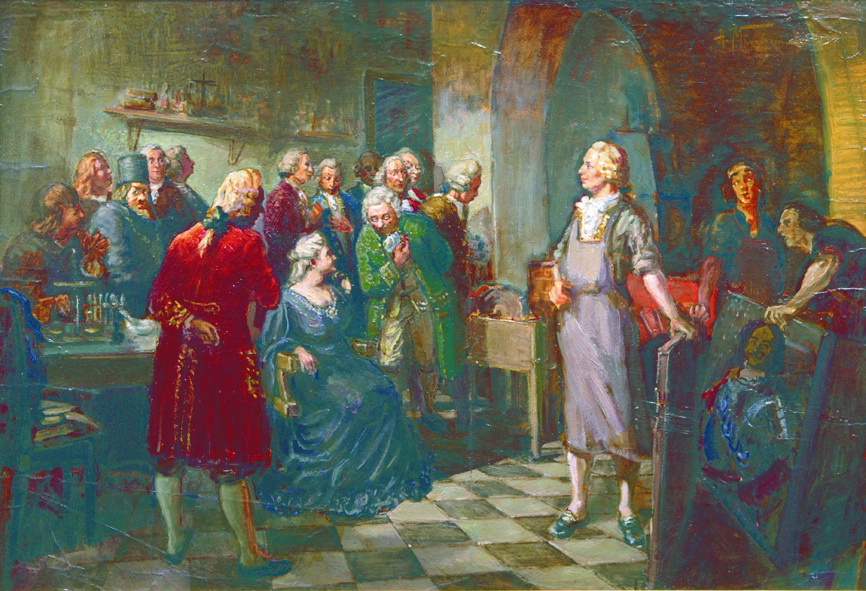 Empress Elizabeth visits Russian scientist Mikhail Lomonosov. In Russia, the government began to actively encourage the proliferation of arts and sciences in the mid-18th century. This era produced the first Russian university, library, theatre, public museum, and independent press. Like other enlightened despots, Catherine the Great played a key role in fostering the arts, sciences and education. She used her own interpretation of Enlightenment ideals, assisted by notable international experts such as Voltaire (by correspondence) and in residence world class scientists such as Leonhard Euler and Peter Simon Pallas. The national Enlightenment differed from its Western European counterpart in that it promoted further modernization of all aspects of Russian life and was concerned with attacking the institution of serfdom in Russia. The Russian Enlightenment centered on the individual instead of societal enlightenment and encouraged the living of an enlightened life.[155][156] A powerful element was prosveshchenie which combined religious piety, erudition, and commitment to the spread of learning. However, it lacked the skeptical and critical spirit of the Western European Enlightenment.[157] |
ロシア 主な記事: ロシア啓蒙主義  女帝エリザベータがロシアの科学者ミハイル・ロモノソフを訪問する。 ロシアでは、18世紀半ばに政府が芸術と科学の普及を積極的に奨励し始めた。この時代にロシア初の大学、図書館、劇場、公立博物館、独立した出版社が誕生 した。他の啓蒙専制君主と同様、エカテリーナ2世は芸術、科学、教育の育成において重要な役割を果たした。彼女は啓蒙思想の理念を独自に解釈し、ヴォル テール(文通による)やレオナルド・オイラー、ペテル・シモン・パラスといった世界的な科学者らを招いて推進した。ロシアの啓蒙主義は西ヨーロッパのそれ とは異なり、ロシア社会のあらゆる側面の近代化を促進し、農奴制の制度そのものを攻撃対象とした点が特徴である。ロシア啓蒙主義は社会啓蒙ではなく個人を 中核とし、啓蒙された生活の実践を奨励した[155][156]。宗教的敬虔、博識、学問普及への献身を組み合わせた「プロスヴェシチェニエ」が強力な要 素であった。しかし西欧啓蒙主義の懐疑的・批判的精神は欠けていた[157]。 |
| Poland and Lithuania Main article: Polish Enlightenment 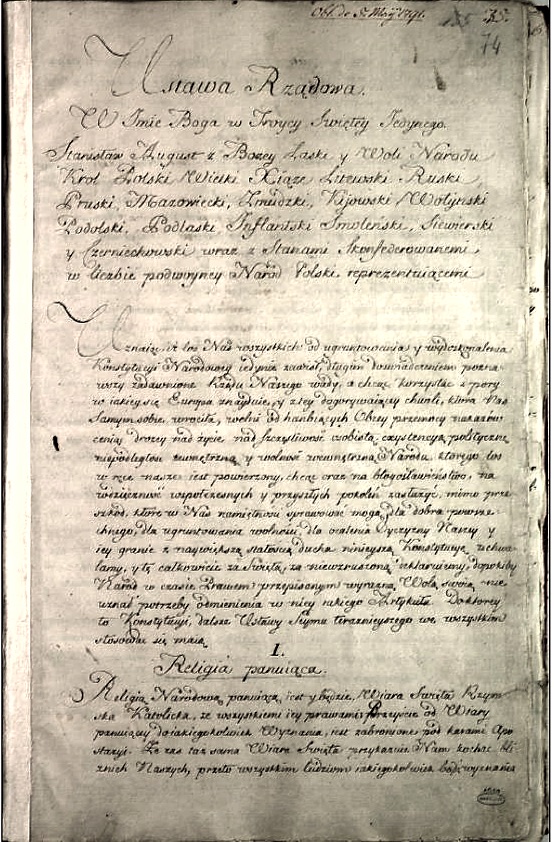 Polish–Lithuanian Constitution of 1791, Europe's first modern constitution Enlightenment ideas (oświecenie) emerged late in Poland, as the Polish middle class was weaker and szlachta (nobility) culture (Sarmatism) together with the Polish–Lithuanian Commonwealth political system (Golden Liberty) were in deep crisis. The political system was built on aristocratic republicanism, but was unable to defend itself against powerful neighbors Russia, Prussia, and Austria as they repeatedly sliced off regions until nothing was left of independent Poland. The Polish Enlightenment began in the 1730s–40s and especially in theatre and the arts peaked in the reign of King Stanisław August Poniatowski (second half of the 18th century). Warsaw was a main centre after 1750, with an expansion of schools and educational institutions and the arts patronage held at the Royal Castle.[158] Leaders promoted tolerance and more education. They included King Stanislaw II August and reformers Piotr Switkowski, Antoni Poplawski, Josef Niemcewicz, and Jósef Pawlinkowski, as well as Baudouin de Cortenay, a Polonized dramatist. Opponents included Florian Jaroszewicz, Gracjan Piotrowski, Karol Wyrwicz, and Wojciech Skarszewski.[159] The movement went into decline with the Third Partition of Poland (1795) – a national tragedy inspiring a short period of sentimental writing – and ended in 1822, replaced by Romanticism.[160] |
ポーランドとリトアニア 主な記事: ポーランド啓蒙主義  1791年ポーランド・リトアニア憲法、ヨーロッパ初の近代憲法 啓蒙思想(オシヴェニェンツェ)はポーランドでは遅れて現れた。ポーランドの中産階級は弱く、シュラフタ(貴族)文化(サルマティズム)とポーランド・リ トアニア共和国政治体制(黄金の自由)が深刻な危機に陥っていたためである。この政治体制は貴族共和制を基盤としていたが、強大な隣国であるロシア、プロ イセン、オーストリアに対して自衛できず、繰り返し領土を分割され、独立したポーランドは消滅した。ポーランド啓蒙主義は1730~40年代に始まり、特 に演劇や芸術分野でスタニスワフ・アウグスト・ポニャトフスキ王の治世(18世紀後半)に頂点を迎えた。 1750年以降はワルシャワが中心地となり、学校や教育機関が拡大し、王宮では芸術の庇護が行われた[158]。指導者たちは寛容と教育の促進を推進し た。その中にはスタニスワフ2世アウグスト王、改革派のピョートル・スヴィトコフスキ、アントニ・ポプラフスキ、ヨゼフ・ニエムチェヴィチ、ヨゼフ・パヴ リンコフスキ、そしてポーランド化した劇作家ボードワン・ド・コルテネーが含まれた。反対派にはフロリアン・ヤロシェヴィチ、グラツィアン・ピオトロフス キ、カロル・ヴィルヴィチ、ヴォイチェフ・スカルシェフスキらがいた[159]。この運動はポーランド第三次分割(1795年)で衰退した。これは国民的 悲劇であり、短期間の感傷主義的文学を生み出したが、1822年に終焉を迎え、ロマン主義に取って代わられた[160]。 |
China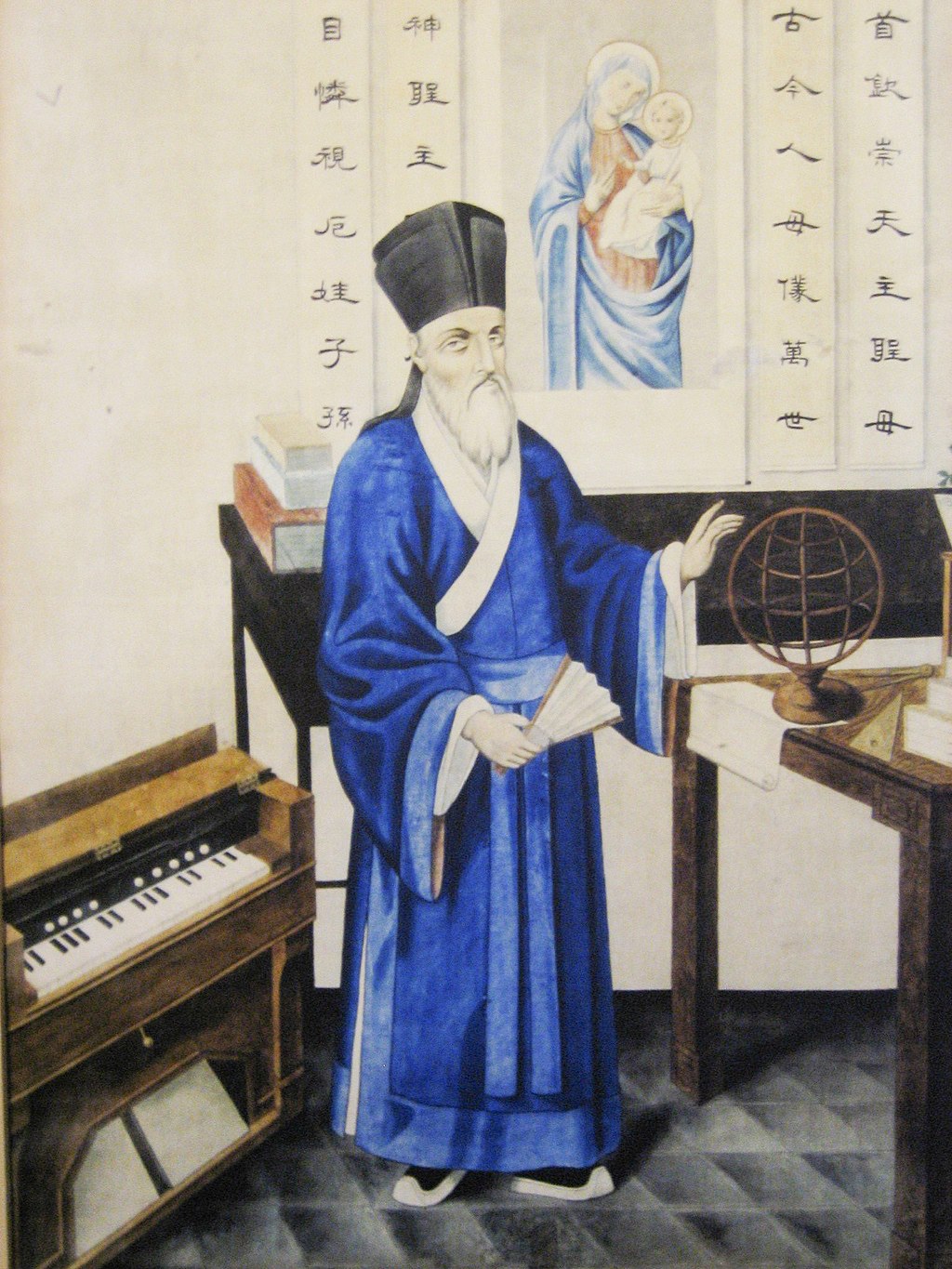 Italian Jesuit priest Matteo Ricci worked with several Chinese elites, such as Xu Guangqi, in translating Euclid's Elements into Chinese. Eighteenth-century China experienced "a trend towards seeing fewer dragons and miracles, not unlike the disenchantment that began to spread across the Europe of the Enlightenment."[10] Furthermore, "some of the developments that we associate with Europe's Enlightenment resemble events in China remarkably."[10] During this time, ideals of Chinese society were reflected in "the reign of the Qing emperors Kangxi and Qianlong; China was posited as the incarnation of an enlightened and meritocratic society—and instrumentalized for criticisms of absolutist rule in Europe."[10] Japan From 1641 to 1853, the Tokugawa shogunate of Japan enforced a policy called kaikin. The policy prohibited foreign contact with most outside countries.[161] Robert Bellah found "origins of modern Japan in certain strands of Confucian thinking, a 'functional analogue to the Protestant Ethic' that Max Weber singled out as the driving force behind Western capitalism."[10] Japanese Confucian and Enlightenment ideas were brought together, for example, in the work of the Japanese reformer Tsuda Mamichi in the 1870s, who said, "Whenever we open our mouths...it is to speak of 'enlightenment.'"[10] In Japan and much of East Asia, Confucian ideas were not replaced but "ideas associated with the Enlightenment were instead fused with the existing cosmology—which in turn was refashioned under conditions of global interaction."[10] In Japan in particular, the term ri, which is the Confucian idea of "order and harmony on human society" also came to represent "the idea of laissez-faire and the rationality of market exchange."[10] By the 1880s, the slogan "Civilization and Enlightenment" became potent throughout Japan, China, and Korea and was employed to address challenges of globalization.[10] Korea During this time, Korea "aimed at isolation" and was known as the "hermit kingdom" but became awakened to Enlightenment ideas by the 1890s such as with the activities of the Independence Club.[10] Korea was influenced by China and Japan but also found its own Enlightenment path with the Korean intellectual Yu Kilchun who popularized the term Enlightenment throughout Korea.[10] The use of Enlightenment ideas was a "response to a specific situation in Korea in the 1890s, and not a belated answer to Voltaire."[10] |
中国 イタリア人イエズス会士マッテーオ・リッチは、徐光啓など数人の中国人エリートと協力して、ユークリッドの『原論』を中国語に翻訳した。 18世紀の中国では、「竜や奇跡をあまり見ない傾向」が見られたが、これは啓蒙主義の広がりとともにヨーロッパで広まり始めた幻滅と似ていた。[10] さらに、「我々がヨーロッパの啓蒙主義と関連付ける発展のいくつかは、中国の出来事と驚くほど似ている」[10]。この時代、中国社会の理想は「清の康熙 帝と乾隆帝の治世」に反映され、中国は啓蒙主義的で実力主義の社会の化身として位置付けられ、ヨーロッパの絶対主義的支配を批判する手段として利用された [10]。 日本 1641年から1853年まで、日本の徳川幕府は「鎖国」という政策を実施した。この政策は、ほとんどの外国との接触を禁止した。[161] ロバート・ベラーは、「現代日本の起源は、儒教思想の特定の側面、すなわちマックス・ヴェーバーが西洋資本主義の原動力として指摘した『プロテスタントの 倫理』に機能的に類似したものにある」と結論づけた。[10] 日本の儒教思想と啓蒙思想は、例えば 1870 年代の日本の改革者、津田真道(つだ まみち)の著作に統合された。彼は「我々が口を開くときはいつでも...それは『啓蒙』について話すためである」と述べた。[10] 日本や東アジアの多くの地域では、儒教の思想は置き換えられることはなく、「啓蒙思想は、既存の宇宙観と融合し、それが世界的な交流という状況の中で再構 築された」のである。[10] 特に日本では、儒教の「人間社会の秩序と調和」を意味する「理」という概念が、「自由放任主義と市場交換の合理性」を表す概念としても用いられるように なった[10]。1880年代までに「文明開化」というスローガンは、日本・中国・朝鮮全域で強力な影響力を持ち、グローバル化の課題に対処するために活 用された。[10] 朝鮮 この時期、朝鮮は「鎖国を志向」し「隠遁王国」として知られていたが、1890年代には独立クラブの活動などを通じて啓蒙思想に目覚めた。[10] 朝鮮は中国や日本の影響を受けたが、朝鮮の知識人である柳吉春が「啓蒙」という概念を朝鮮全土に普及させたことで、独自の啓蒙の道を模索した。[10] 啓蒙思想の活用は「1890年代の韓国における特定の状況への対応であって、ヴォルテールへの遅れた答えではなかった」[10]。 |
| India In 18th-century India, Tipu Sultan was an enlightened monarch, who "was one of the founding members of the (French) Jacobin Club in Seringapatam, had planted a liberty tree, and asked to be addressed as 'Tipu Citoyen,'" which means Citizen Tipu.[10] In parts of India, an important movement called the "Bengal Renaissance" led to Enlightenment reforms beginning in the 1820s.[10] Ram Mohan Roy was a reformer who "fused different traditions in his project of social reform that made him a proponent of a 'religion of reason.'"[10] Egypt 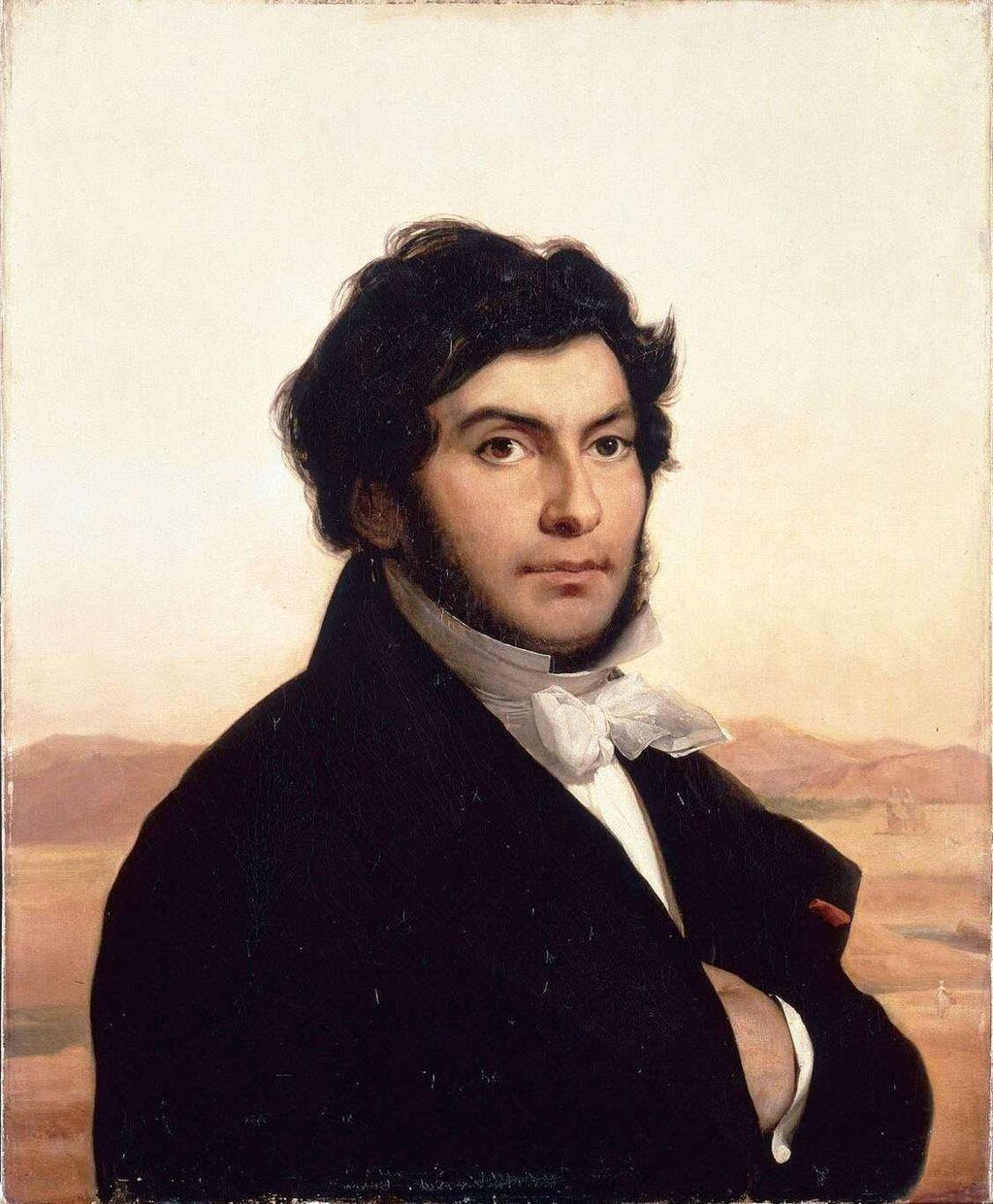 Jean-François Champollion, the founder of Egyptology Eighteenth-century Egypt had "a form of 'cultural revival' in the making—specifically Islamic origins of modernization long before Napoleon's Egyptian campaign."[10] Napoleon's expedition into Egypt further encouraged "social transformations that harkened back to debates about inner-Islamic reform, but now were also legitimized by referring to the authority of the Enlightenment."[10] A major intellectual influence on Islamic modernism and expanding the Enlightenment in Egypt, Rifa al-Tahtawi "oversaw the publication of hundreds of European works in the Arabic language."[10] Ottoman Empire The Enlightenment began to influence the Ottoman Empire in the 1830s and continued into the late 19th century.[10] The Tanzimat was a period of reform in the Ottoman Empire that began with the Gülhane Hatt-ı Şerif in 1839 and ended with the First Constitutional Era in 1876. Namik Kemal, a political activist and member of the Young Ottomans, drew on major Enlightenment thinkers and "a variety of intellectual resources in his quest for social and political reform."[10] In 1893, Kemal responded to Ernest Renan, who had indicted the Islamic religion, with his own version of the Enlightenment, which "was not a poor copy of French debates in the eighteenth century, but an original position responding to the exigencies of Ottoman society in the late nineteenth century."[10] |
インド 18世紀のインドにおいて、ティプー・スルターンは啓蒙的な君主であった。彼は「セリンガパタムにおける(フランス)ジャコバン・クラブの創設メンバーの 一人であり、自由の木を植え、『ティプー・シトワヤン』と呼ばれることを求めた」のである。これは「市民ティプー」を意味する。[10] インドの一部地域では「ベンガル・ルネサンス」と呼ばれる重要な運動が1820年代から啓蒙主義的改革をもたらした。[10] 改革者ラム・モハン・ロイは「社会改革計画において異なる伝統を融合させ、『理性の宗教』の提唱者となった人物」である。[10] エジプト  エジプト学の創始者ジャン=フランソワ・シャンポリオン 18世紀のエジプトには「『文化的復興』の萌芽があった——具体的にはナポレオンのエジプト遠征よりはるか以前の、近代化のイスラム的起源である」 [10]。ナポレオンのエジプト遠征はさらに「イスラム内部改革論争を想起させる社会変革を促進したが、今度は啓蒙主義の権威に言及することで正当化され た」 [10] イスラム近代主義とエジプトにおける啓蒙主義拡大に大きな知的影響を与えたリファ・アル=タフタウィは「数百冊のヨーロッパ著作をアラビア語で出版する事 業を監督した」[10]。 オスマン帝国 啓蒙主義は1830年代にオスマン帝国に影響を与え始め、19世紀後半まで続いた。[10] タンジマートは1839年のギュルハネ勅令で始まり、1876年の第一次立憲時代で終わるオスマン帝国の改革期である。 政治活動家で青年オスマン党員だったナミク・ケマルは、主要な啓蒙思想家や「社会・政治改革を求める過程で多様な知的資源」を援用した。[10] 1893年、ケマルはイスラム教を非難したエルネスト・ルナンに対し、自らの啓蒙思想で応じた。それは「18世紀フランスにおける議論の貧弱な模倣ではな く、19世紀末オスマン社会が直面する課題に応える独自の立場」であった。[10] |
| Historiography The idea of the Enlightenment has always been contested territory. According to Keith Thomas, its supporters "hail it as the source of everything that is progressive about the modern world. For them, it stands for freedom of thought, rational inquiry, critical thinking, religious tolerance, political liberty, scientific achievement, the pursuit of happiness, and hope for the future."[162] Thomas adds that its detractors accuse it of shallow rationalism, naïve optimism, unrealistic universalism, and moral darkness. From the start, conservative and clerical defenders of traditional religion attacked materialism and skepticism as evil forces that encouraged immorality. By 1794, they pointed to the Reign of Terror during the French Revolution as confirmation of their predictions. Romantic philosophers argued that the Enlightenment's excessive dependence on reason was a mistake that it perpetuated, disregarding the bonds of history, myth, faith, and tradition that were necessary to hold society together.[163] Ritchie Robertson portrays it as a grand intellectual and political program, offering a "science" of society modeled on the powerful physical laws of Newton. "Social science" was seen as the instrument of human improvement. It would expose truth and expand human happiness.[164] The rights of women and nonwhite people were generally overlooked in Enlightenment philosophy, which is often explicitly Eurocentric.[15] Scientific racism first emerged at this time, bringing together traditional racism and new research methods.[165][166] During the Enlightenment, concepts of monogenism and polygenism became popular, though they would only be systematized epistemologically during the 19th century. Monogenism contends that all races have a single origin, while polygenism is the idea that each race has a separate origin. Until the 18th century, the words "race" and "species" were interchangeable.[165] The classification of non-European peoples as sub-human and irrational served to justify European dominance.[c][167]: 4, 10 |
歴史学 啓蒙思想の概念は常に論争の的となってきた。キース・トーマスによれば、その支持者たちは「啓蒙思想を現代世界の進歩的なあらゆるものの源として称賛す る。彼らにとって啓蒙思想は、思想の自由、理性的な探究、批判的思考、宗教的寛容、政治的自由、科学的成果、幸福の追求、そして未来への希望を象徴してい る」 [162] トーマスはさらに、批判派が啓蒙主義を「浅薄な合理主義」「素朴な楽観主義」「非現実的な普遍主義」「道徳的暗黒」と非難すると付け加える。当初から、伝 統的宗教を守る保守派や聖職者たちは、唯物論と懐疑主義を不道徳を助長する悪しき勢力として攻撃した。1794年までに、彼らはフランス革命期の恐怖政治 を自らの予言が的中した証拠として指摘したのである。 ロマン主義の哲学者たちは、啓蒙主義が理性に過度に依存したことは、社会を結びつけるために必要な歴史、神話、信仰、伝統の絆を無視した、永続的な過ちで あると主張した。リッチー・ロバートソンは、啓蒙主義を、ニュートンの強力な物理法則をモデルとした社会の「科学」を提供する、壮大な知的・政治的プログ ラムとして描いている。「社会科学」は、人間を向上させるための手段と見なされていた。それは真実を明らかにし、人間の幸福を拡大するだろう。[164] 啓蒙主義の哲学では、女性や非白人の権利は一般的に見過ごされていた。啓蒙主義の哲学は、多くの場合、明らかにヨーロッパ中心主義である。[15] 科学的人種主義は、この頃に初めて登場し、伝統的な人種主義と新しい研究手法を融合させた。[165][166] 啓蒙主義の時代、単一起源説と多起源説の概念が普及したが、それらが認識論的に体系化されたのは 19 世紀になってからのことである。単一起源説は全人種が単一の起源を持つと主張し、多起源説は各人種が別個の起源を持つとする思想である。18世紀まで「人 種」と「種」は同義語として用いられていた[165]。非ヨーロッパ人を亜人間的・非合理的と分類することは、ヨーロッパの支配を正当化する役割を果たし た[c][167]: 4, 10 |
| Definition The term "Enlightenment" emerged in English in the latter part of the 19th century,[168] with particular reference to French philosophy, as the equivalent of the French term Lumières (used first by Jean-Baptiste Dubos in 1733 and already well established by 1751). From Kant's 1784 essay "Beantwortung der Frage: Was ist Aufklärung?" ("Answering the Question: What is Enlightenment?"), the German term became Aufklärung (aufklären=to illuminate; sich aufklären=to clear up). However, scholars have never agreed on a definition of the Enlightenment or on its chronological or geographical extent. Terms like les Lumières (French), illuminismo (Italian), ilustración (Spanish) and Aufklärung (German) referred to partly overlapping movements. Not until the late 19th century did English scholars agree they were talking about "the Enlightenment."[163][169] 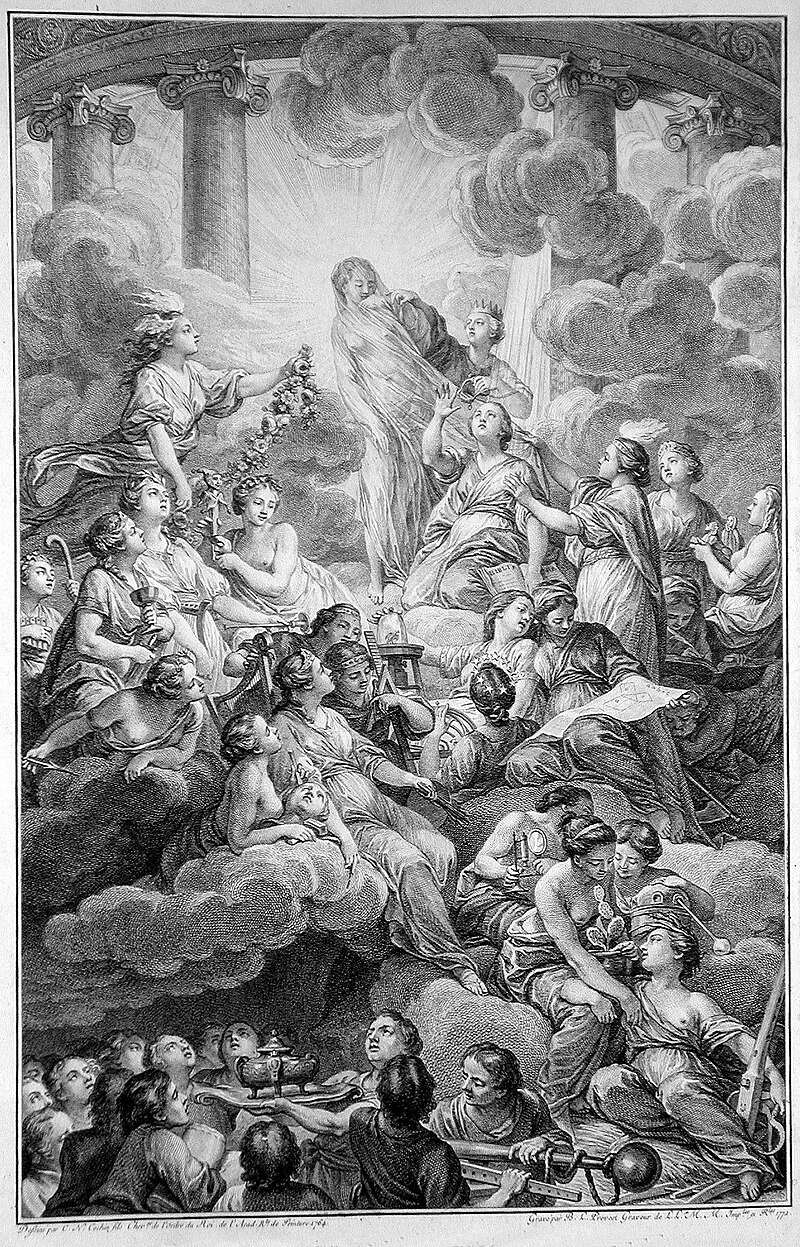 If there is something you know, communicate it. If there is something you don't know, search for it. — An engraving from the 1772 edition of the Encyclopédie; Truth, in the top center, is surrounded by light and unveiled by the figures to the right, Philosophy and Reason Enlightenment historiography began in the period itself, from what Enlightenment figures said about their work. A dominant element was the intellectual angle they took. Jean le Rond d'Alembert's Preliminary Discourse of l'Encyclopédie provides a history of the Enlightenment which comprises a chronological list of developments in the realm of knowledge—of which the Encyclopédie forms the pinnacle.[170] In 1783, Mendelssohn referred to Enlightenment as a process by which man was educated in the use of reason.[171] Kant called Enlightenment "man's release from his self-incurred tutelage," tutelage being "man's inability to make use of his understanding without direction from another."[172] "For Kant, Enlightenment was mankind's final coming of age, the emancipation of the human consciousness from an immature state of ignorance."[173] The German scholar Ernst Cassirer called the Enlightenment "a part and a special phase of that whole intellectual development through which modern philosophic thought gained its characteristic self-confidence and self-consciousness."[174] According to historian Roy Porter, the liberation of the human mind from a dogmatic state of ignorance, is the epitome of what the Age of Enlightenment was trying to capture.[175] Bertrand Russell saw the Enlightenment as a phase in a progressive development which began in antiquity and that reason and challenges to the established order were constant ideals throughout that time.[176] Russell said that the Enlightenment was ultimately born out of the Protestant reaction against the Catholic Counter-Reformation and that philosophical views such as affinity for democracy against monarchy originated among 16th-century Protestants to justify their desire to break away from the Catholic Church. Although many of these philosophical ideals were picked up by Catholics, Russell argues that by the 18th century the Enlightenment was the principal manifestation of the schism that began with Martin Luther.[176] Jonathan Israel rejects the attempts of postmodern and Marxian historians to understand the revolutionary ideas of the period purely as by-products of social and economic transformations.[177] He instead focuses on the history of ideas in the period from 1650 to the end of the 18th century and claims that it was the ideas themselves that caused the change that eventually led to the revolutions of the latter half of the 18th century and the early 19th century.[178] Israel argues that until the 1650s Western civilization "was based on a largely shared core of faith, tradition, and authority."[179] |
定義 「啓蒙」という用語は、19世紀後半に英語圏で登場した[168]。特にフランス哲学を指し、フランス語のルミエール(1733年にジャン=バティスト・ デュボが初めて使用し、1751年までに既に定着していた)に相当する概念である。カントの1784年の論文『啓蒙とは何か』(原題: Beantwortung der Frage: Was ist Aufklärung?)により、ドイツ語ではアウフクラーレン(aufklären=照らす;sich aufklären=理解する)という語が用いられるようになった。しかし、啓蒙主義の定義やその時代的・地理的範囲については、学者の間で合意が得られ ていない。ルミエール(仏語)、イルミネーモ(伊語)、イルストラシオン(西語)、アウフクラーレン(独語)といった用語は、部分的に重なる運動を指して いた。19世紀後半になって初めて、英語圏の学者たちが「啓蒙主義」を指すことに合意したのである。[163][169]  知っていることがあれば伝えよ。知らないことがあれば探求せよ。 — 1772年版『百科全書』の版画。中央上部の「真理」は光に包まれ、右側の人物たち(哲学と理性)によって覆いが取られている 啓蒙主義の歴史学は、啓蒙主義者たちが自らの活動について語った言葉から、その時代自体に始まった。支配的な要素は、彼らが採用した知的視点であった。 ジャン・ル・ロン・ダルランベールの『百科全書』言説は、啓蒙主義の歴史を提示している。それは知識の領域における発展の時系列リストであり、その頂点に 『百科全書』が位置づけられる。[170] 1783年、メンデルスゾーンは啓蒙主義を「人間が理性の使用法を教育される過程」と呼んだ。[171] カントは啓蒙を「人間が自ら招いた未熟状態からの解放」と呼んだ。ここで未熟状態とは「他者からの指示なしに自らの理解力を活用できない人間の無力さ」を 指す。[172] 「カントにとって啓蒙とは、人類が最終的に成熟に達し、未熟な無知の状態から人間の意識が解放される過程であった」。[173] ドイツの学者エルンスト・カッシラーは啓蒙を「近代哲学的思想がその特徴的な自信と自覚を獲得した知的発展全体の、一部かつ特殊な段階」と呼んだ。 [174] 歴史家ロイ・ポーターによれば、人間の精神が教条的な無知の状態から解放されることこそが、啓蒙時代が捉えようとしたものの縮図である。[175] バートランド・ラッセルは、啓蒙主義を古代に始まった進歩的発展の一段階と捉え、その間を通じて理性と確立された秩序への挑戦は不変の理想であったと述べ た。[176] ラッセルは、啓蒙主義は最終的にはカトリックの反宗教改革に対するプロテスタントの反動から生まれ、君主制に対する民主主義への親和性などの哲学的見解 は、カトリック教会からの離脱を正当化するために 16 世紀のプロテスタントの間で生まれたと述べた。これらの哲学的理想の多くはカトリック教徒にも取り入れられたが、ラッセルは、18 世紀までに啓蒙主義は、マーティン・ルターに端を発した分裂の主要な現れであったと主張している。[176] ジョナサン・イスラエルは、この時代の革命的な思想を、社会・経済変革の副産物としてのみ理解しようとするポストモダンやマルクス主義の歴史家たちの試み を否定している。[177] 彼は代わりに、1650年から18世紀末までの思想の歴史に焦点を当て、18世紀後半から19世紀初頭にかけての革命につながった変化をもたらしたのは、 思想そのものであると主張している。[178] イスラエルは、1650年代まで西洋文明は「信仰、伝統、権威という大きく共有された中核に基づいて成り立っていた」と論じている。[179] |
| Time span There is little consensus on the precise beginning of the Age of Enlightenment, though several historians and philosophers argue that it was marked by Descartes' 1637 philosophy of Cogito, ergo sum ("I think, therefore I am"), which shifted the epistemological basis from external authority to internal certainty.[180][181][182] In France, many cited the publication of Newton's Principia Mathematica (1687),[183] which built upon the work of earlier scientists and formulated the laws of motion and universal gravitation.[184] French historians usually place the Siècle des Lumières ("Century of Enlightenments") between 1715 and 1789: from the beginning of the reign of Louis XV until the French Revolution.[185] Most scholars use the last years of the century, often choosing the French Revolution or the beginning of the Napoleonic Wars (1804) as a convenient point in time with which to date the end of the Enlightenment.[186] In recent years, scholars have expanded the time span and global perspective of the Enlightenment by examining: (1) how European intellectuals did not work alone and other people helped spread and adapt Enlightenment ideas, (2) how Enlightenment ideas were "a response to cross-border interaction and global integration," and (3) how the Enlightenment "continued throughout the nineteenth century and beyond."[10] The Enlightenment "was not merely a history of diffusion" and "was the work of historical actors around the world... who invoked the term... for their own specific purposes."[10] |
時代区分 啓蒙時代の正確な始まりについては意見が分かれている。しかし多くの歴史家や哲学者は、デカルトが1637年に提唱した「我思う、故に我あり」というコギ ト哲学が、認識論の基盤を外部権威から内的な確信へと移行させたことで、この時代の始まりを画したと主張している。[180][181][182] フランスでは、ニュートンの『プリンキピア・マテマティカ』(1687年)の出版を起点とする見解が多い。[183] この著作は先行する科学者の業績を基盤とし、運動の法則と万有引力の法則を体系化した。[184] フランス史家たちは通常、啓蒙の世紀(Siècle des Lumières)を1715年から1789年、すなわちルイ15世の治世開始からフランス革命までの期間と位置づける。[185] 多くの学者は世紀の終わり頃を啓蒙主義の終焉とみなす傾向があり、フランス革命やナポレオン戦争の始まり(1804年)を区切りとして用いることが多い。 [186] 近年、学者たちは啓蒙主義の時間的範囲と世界的視点を拡大している。具体的には以下の点を検証している:(1) ヨーロッパの知識人が単独で活動したわけではなく、他の人々が啓蒙思想の普及と適応を助けたこと、(2) 啓蒙思想が「国境を越えた交流と世界的統合への応答」であったこと、(3) 啓蒙主義が「19世紀以降も継続した」ことである。[10] 啓蒙主義は「単なる拡散の歴史」ではなく、「世界中の歴史的行為者たちによる営みであった...彼らは...自らの特定の目的のためにこの用語を引用し た」のである。[10] |
| Modern study In their 1947 book Dialectic of Enlightenment, Frankfurt School philosophers Max Horkheimer and Theodor W. Adorno, both wartime exiles from Nazi Germany, critiqued the supposed rational basis of the modern world: Enlightenment, understood in the widest sense as the advance of thought, has always aimed at liberating human beings from fear and installing them as masters. Yet the wholly enlightened earth radiates under the sign of disaster triumphant.[187] Extending Horkheimer and Adorno's argument, intellectual historian Jason Josephson Storm argues that any idea of the Age of Enlightenment as a clearly defined period that is separate from the earlier Renaissance and later Romanticism or Counter-Enlightenment constitutes a myth. Storm points out that there are vastly different and mutually contradictory periodizations of the Enlightenment depending on nation, field of study, and school of thought; that the term and category of "Enlightenment" referring to the Scientific Revolution was actually applied after the fact; that the Enlightenment did not see an increase in disenchantment or the dominance of the mechanistic worldview; and that a blur in the early modern ideas of the humanities and natural sciences makes it hard to circumscribe a Scientific Revolution.[188] Storm defends his categorization of the Enlightenment as "myth" by noting the regulative role ideas of a period of Enlightenment and disenchantment play in modern Western culture, such that belief in magic, spiritualism, and even religion appears somewhat taboo in intellectual strata.[189] In the 1970s, study of the Enlightenment expanded to include the ways Enlightenment ideas spread to European colonies and how they interacted with indigenous cultures and how the Enlightenment took place in formerly unstudied areas such as Italy, Greece, the Balkans, Poland, Hungary, and Russia.[190] Intellectuals such as Robert Darnton and Jürgen Habermas have focused on the social conditions of the Enlightenment. Habermas described the creation of the "bourgeois public sphere" in 18th-century Europe, containing the new venues and modes of communication allowing for rational exchange. Habermas said that the public sphere was bourgeois, egalitarian, rational, and independent from the state, making it the ideal venue for intellectuals to critically examine contemporary politics and society, away from the interference of established authority. While the public sphere is generally an integral component of the social study of the Enlightenment, other historians[d] have questioned whether the public sphere had these characteristics. |
現代研究 フランクフルト学派の哲学者マックス・ホルクハイマーとテオドール・W・アドルノは、1947年の著書『啓蒙の弁証法』において、ナチス・ドイツから戦時亡命した両者が、現代世界の理性的基盤とされるものを批判した: 啓蒙とは、最も広い意味で思想の進歩と理解され、常に人間を恐怖から解放し、支配者として据えることを目指してきた。しかし、完全に啓蒙された地球は、災厄の勝利の印のもとで輝いているのだ。[187] ホルクハイマーとアドルノの議論を拡張し、知識史家ジェイソン・ジョセフソン・ストームは、ルネサンス以前の時代やロマン主義、反啓蒙主義と明確に区別さ れた「啓蒙時代」という概念自体が神話であると主張する。ストームは、啓蒙主義の時代区分は国民や研究分野、思想流派によって大きく異なり相互に矛盾して いること、科学革命を指す「啓蒙主義」という用語とカテゴリーは実際には事後的に適用されたものであること、啓蒙主義において非魔術化が進んだり機械論的 世界観が支配的になったりしたわけではないこと、 そして人文科学と自然科学の境界が曖昧だった近世の思想では、科学革命を明確に定義することが困難だとも述べている[188]。ストームは啓蒙主義を「神 話」と分類する根拠として、啓蒙と非魔術化の時代観が現代西洋文化において規範的役割を果たしている点を挙げる。つまり呪術やスピリチュアリズム、さらに は宗教への信仰さえも、知識層においては一種のタブー視されているのだ[189]。 1970年代には啓蒙研究が拡大し、啓蒙思想がヨーロッパ植民地に伝播した経緯、現地文化との相互作用、イタリア・ギリシャ・バルカン半島・ポーランド・ ハンガリー・ロシアなど従来研究対象外だった地域における啓蒙の様相が考察対象となった[190]。ロバート・ダントンやユルゲン・ハーバーマスら知識人 は啓蒙の社会的条件に焦点を当てた。ハーバーマスは18世紀ヨーロッパにおける「ブルジョワ的公共圏」の形成を論じた。そこには合理的な意見交換を可能と する新たな場とコミュニケーション様式が存在した。ハーバーマスによれば、この公共圏はブルジョワ的、平等主義的、合理的であり、国家から独立していたた め、知識人が既存権威の干渉を受けずに現代の政治や社会を批判的に検証する理想的な場となった。公共圏は啓蒙主義の社会科学において一般的に不可欠な要素 であるが、他の歴史家[d]は公共圏がこれらの特徴を有していたかどうかを疑問視している。 |
Society and culture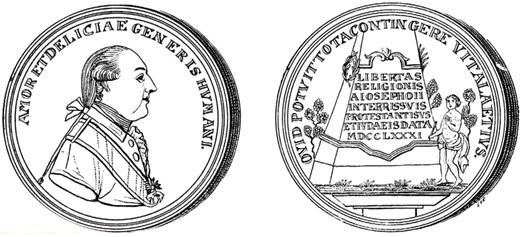 A medal minted during the reign of Joseph II, Holy Roman Emperor, commemorating his grant of religious liberty to Jews and Protestants in Hungary—another important reform of Joseph II was the abolition of serfdom. In contrast to the intellectual historiographical approach of the Enlightenment, which examines the various currents or discourses of intellectual thought within the European context during the 17th and 18th centuries, the cultural (or social) approach examines the changes that occurred in European society and culture. This approach studies the process of changing sociabilities and cultural practices during the Enlightenment. One of the primary elements of the culture of the Enlightenment was the rise of the public sphere, a "realm of communication marked by new arenas of debate, more open and accessible forms of urban public space and sociability, and an explosion of print culture," in the late 17th century and 18th century.[191] Elements of the public sphere included that it was egalitarian, that it discussed the domain of "common concern," and that argument was founded on reason.[192] Habermas uses the term "common concern" to describe those areas of political/social knowledge and discussion that were previously the exclusive territory of the state and religious authorities, now open to critical examination by the public sphere. The values of this bourgeois public sphere included holding reason to be supreme, considering everything to be open to criticism (the public sphere is critical), and the opposition of secrecy of all sorts.[193] 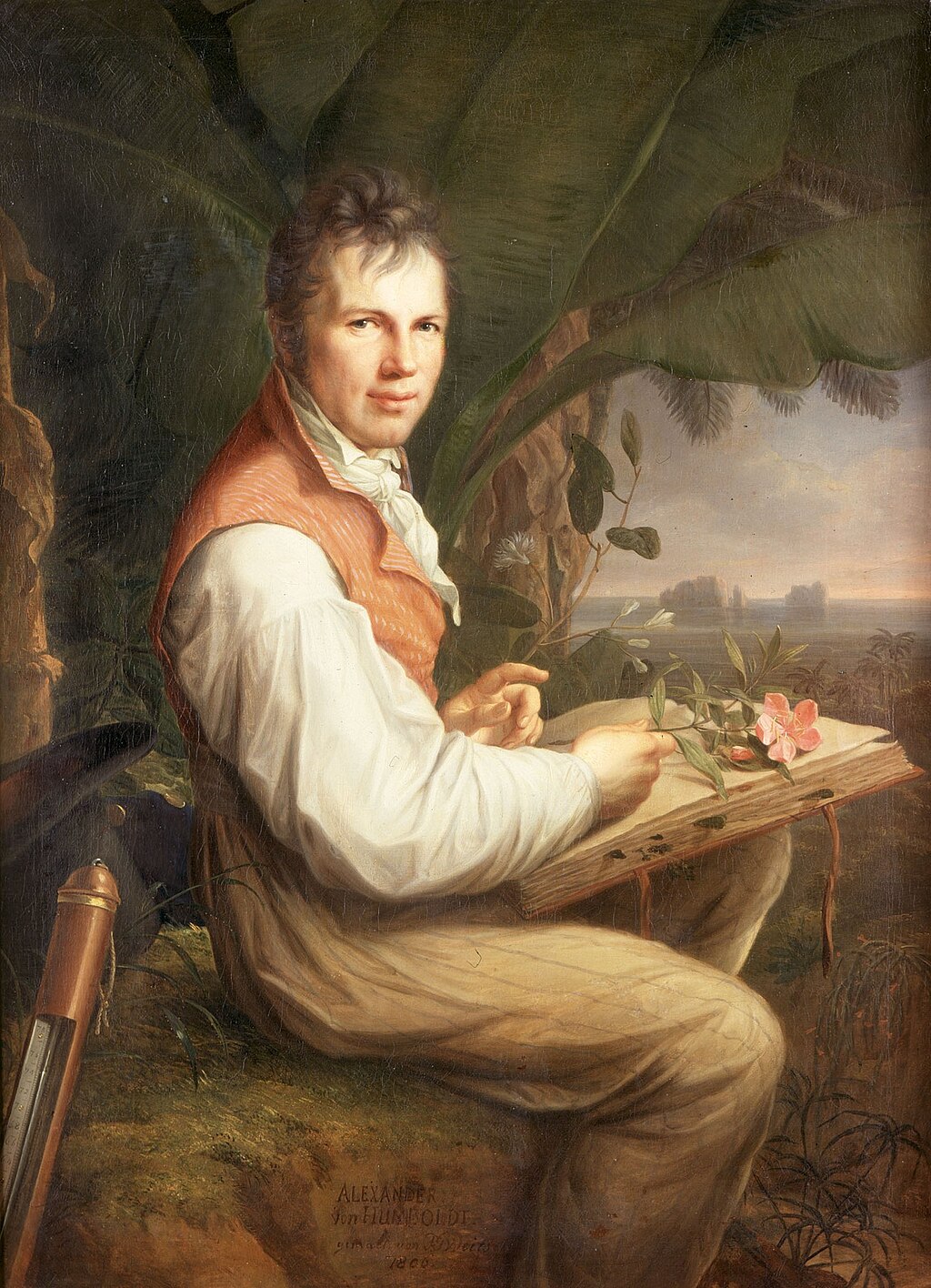 German explorer Alexander von Humboldt showed his disgust for slavery and often criticized the colonial policies—he always acted out of a deeply humanistic conviction, borne by the ideas of the Enlightenment.[194] The creation of the public sphere has been associated with two long-term historical trends: the rise of the modern nation state and the rise of capitalism. The modern nation state in its consolidation of public power created by counterpoint a private realm of society independent of the state, which allowed for the public sphere. Capitalism also increased society's autonomy and self-awareness, as well as an increasing need for the exchange of information. As the nascent public sphere expanded, it embraced a large variety of institutions, and the most commonly cited were coffee houses and cafés, salons and the literary public sphere, figuratively localized in the Republic of Letters.[195] In France, the creation of the public sphere was helped by the aristocracy's move from the king's palace at Versailles to Paris in about 1720, since their rich spending stimulated the trade in luxuries and artistic creations, especially fine paintings.[196] The context for the rise of the public sphere was the economic and social change commonly associated with the Industrial Revolution: "Economic expansion, increasing urbanization, rising population and improving communications in comparison to the stagnation of the previous century."[197] Rising efficiency in production techniques and communication lowered the prices of consumer goods and increased the amount and variety of goods available to consumers (including the literature essential to the public sphere). Meanwhile, the colonial experience (most European states had colonial empires in the 18th century) began to expose European society to extremely heterogeneous cultures, leading to the breaking down of "barriers between cultural systems, religious divides, gender differences and geographical areas."[198] The word "public" implies the highest level of inclusivity—the public sphere by definition should be open to all. However, this sphere was only public to relative degrees. Enlightenment thinkers frequently contrasted their conception of the "public" with that of the people: Condorcet contrasted "opinion" with populace, Marmontel "the opinion of men of letters" with "the opinion of the multitude" and d'Alembert the "truly enlightened public" with "the blind and noisy multitude."[199] Additionally, most institutions of the public sphere excluded both women and the lower classes.[200] Cross-class influences occurred through noble and lower class participation in areas such as the coffeehouses and the Masonic lodges. |
社会と文化 神聖ローマ皇帝ヨーゼフ2世の治世中に鋳造されたメダル。ハンガリーにおけるユダヤ教徒とプロテスタントへの宗教的自由の付与を記念するものである。ヨーゼフ2世のもう一つの重要な改革は農奴制の廃止であった。 17世紀から18世紀のヨーロッパにおける知的思潮の諸潮流や言説を検証する啓蒙主義の歴史学的な知的アプローチとは対照的に、文化的(あるいは社会的) アプローチはヨーロッパ社会と文化に生じた変化を検証する。このアプローチは啓蒙主義期における社交性や文化的慣行の変化過程を研究する。 啓蒙主義文化の主要な要素の一つは、公共圏の台頭であった。これは17世紀後半から18世紀にかけて、「新たな議論の場、より開放的でアクセスしやすい都 市公共空間と社交性、そして印刷文化の爆発的拡大によって特徴づけられるコミュニケーションの領域」であった。[191] 公共圏の要素としては、平等主義的であること、「共通の関心事」の領域について議論すること、議論は理性に基づくことなどが挙げられる。[192] ハーバーマスは「共通の関心事」という用語を用いて、以前は国家や宗教当局の独占的な領域であった政治・社会に関する知識や議論の分野を、現在では公共圏 による批判的な検証の対象となっていると表現している。このブルジョワ的公共圏の価値観には、理性を至高のものとすること、あらゆるものを批判の対象とす ること(公共圏は批判的である)、あらゆる種類の秘密主義への反対などが含まれていた。[193]  ドイツの探検家アレクサンダー・フォン・フンボルトは、奴隷制度に嫌悪感を示し、植民地政策をしばしば批判した。彼は常に、啓蒙思想に支えられた深い人道主義的信念に基づいて行動した。[194] 公共圏の創出は、2つの長期的な歴史的傾向、すなわち近代国民国家の台頭と資本主義の台頭と関連している。近代国民国家は、公共の権力を強化する一方で、 国家から独立した社会の私的領域を対比的に創出し、それによって公共圏を可能にした。資本主義もまた社会の自律性と自己認識を高め、情報交換の必要性を増 大させた。萌芽期の公共圏が拡大するにつれ、多様な機関を取り込み、最もよく例示されるのは喫茶店やカフェ、サロン、そして文芸公共圏であり、比喩的に 「文芸共和国」に象徴される。[195] フランスでは、彼らがヴェルサイユの王宮から1720年頃にパリへ移ったことが公共圏の形成を助けた。彼らの贅沢な消費が、特に高級絵画を中心とした、高 級品や芸術作品の取引を刺激したからだ。[196] 公共圏が台頭した背景には、産業革命と一般的に結びつけられる経済的・社会的変化があった。「前世紀の停滞と対照的に、経済拡大、都市化の進展、人口増 加、通信手段の改善」である。[197] 生産技術と通信の効率化が進んだことで、消費財の価格は低下し、消費者が入手できる商品(公共圏に不可欠な文学を含む)の量と種類は増加した。一方、植民 地経験(18世紀には大半の欧州諸国が植民地帝国を有していた)は、欧州社会を極めて多様な文化に晒し始め、「文化体系間の障壁、宗教的分断、性差、地理 的領域の隔たり」を崩壊させた。[198] 「公共」という言葉は最高度の包括性を意味する——公共圏は定義上、全ての人に開かれているべきだ。しかしこの領域は相対的な公共性に過ぎなかった。啓蒙 思想家たちはしばしば自らの「公共」概念を人民観と対比させた。コンドルセは「世論」と「マルチチュード」を、マルモンテルは「文人の意見」と「マルチ チュードの意見」を、ダルランベールは「真に啓蒙された公衆」と「盲目で騒がしいマルチチュード」を対比させた。[199] さらに、公共圏のほとんどの機関は女性と下層階級を排除していた。[200] 階級を超えた影響は、貴族や下層階級が喫茶店やフリーメイソン・ロッジなどの場に参加することで生じていた。 |
| Implications in the arts Because of the focus on reason over superstition, the Enlightenment cultivated the arts.[201] Emphasis on learning, art, and music became more widespread, especially with the growing middle class. Areas of study such as literature, philosophy, science, and the fine arts increasingly explored subject matter to which the general public, in addition to the previously more segregated professionals and patrons, could relate.[202] 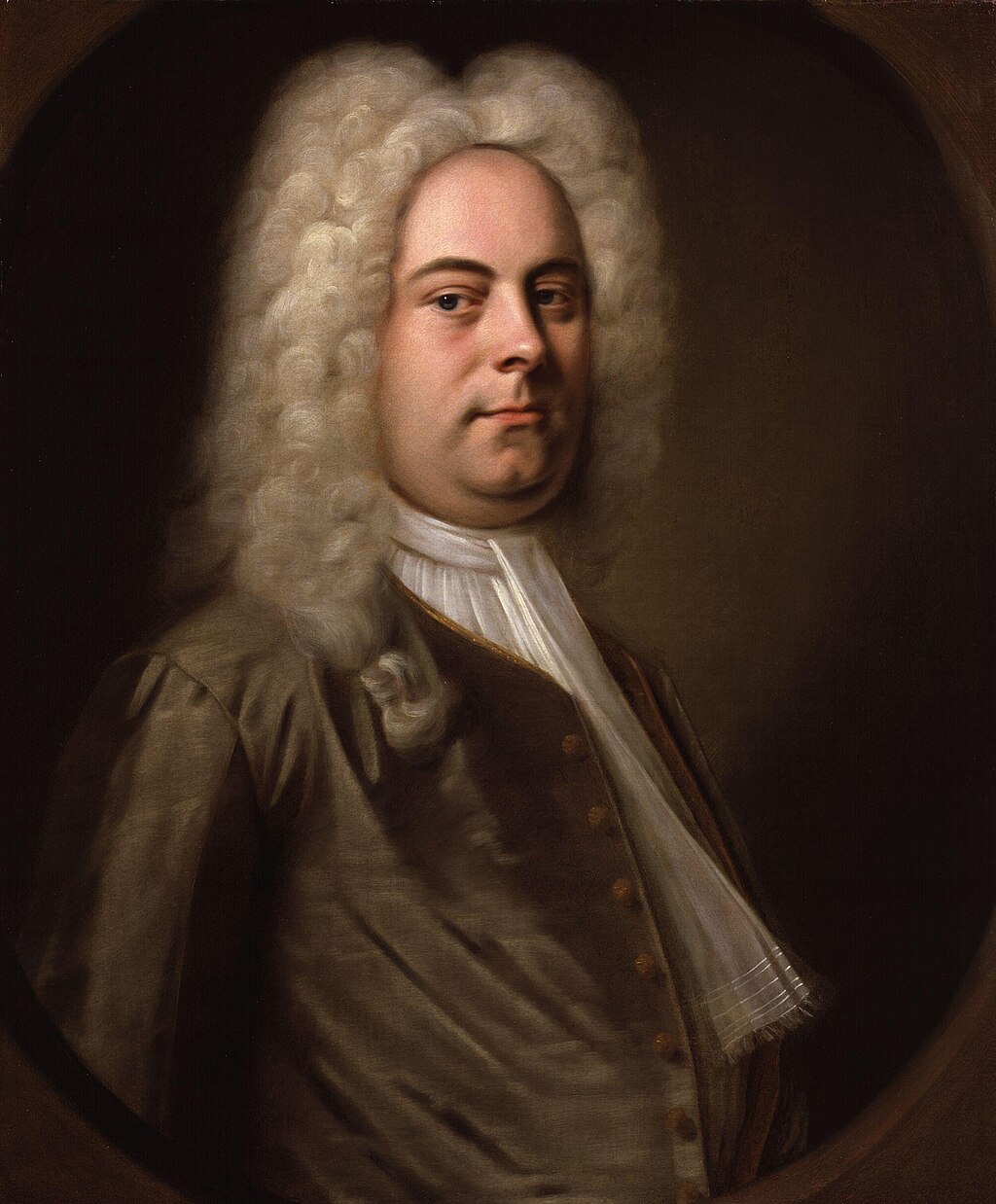 George Frideric Handel As musicians depended more on public support, public concerts became increasingly popular and helped supplement performers' and composers' incomes. The concerts also helped them to reach a wider audience. Handel, for example, epitomized this with his highly public musical activities in London. He gained considerable fame there with performances of his operas and oratorios. The music of Haydn and Mozart, with their Viennese Classical styles, are usually regarded as being the most in line with the Enlightenment ideals.[203] The desire to explore, record, and systematize knowledge had a meaningful impact on music publications. Rousseau's Dictionnaire de musique (published 1767 in Geneva and 1768 in Paris) was a leading text in the late 18th century.[203] This widely available dictionary gave short definitions of words like genius and taste and was clearly influenced by the Enlightenment movement. Another text influenced by Enlightenment values was Charles Burney's A General History of Music: From the Earliest Ages to the Present Period (1776), which was a historical survey and an attempt to rationalize elements in music systematically over time.[204] Recently, musicologists have shown renewed interest in the ideas and consequences of the Enlightenment. For example, Rose Rosengard Subotnik's Deconstructive Variations (subtitled Music and Reason in Western Society) compares Mozart's Die Zauberflöte (1791) using the Enlightenment and Romantic perspectives and concludes that the work is "an ideal musical representation of the Enlightenment."[204] As the economy and the middle class expanded, there was an increasing number of amateur musicians. One manifestation of this involved women, who became more involved with music on a social level. Women were already engaged in professional roles as singers and increased their presence in the amateur performers' scene, especially with keyboard music.[205] Music publishers began to print music that amateurs could understand and play. The majority of the works that were published were for keyboard, voice and keyboard, and chamber ensemble.[205] After these initial genres were popularized, from the mid-century on, amateur groups sang choral music, which then became a new trend for publishers to capitalize on. The increasing study of the fine arts, as well as access to amateur-friendly published works, led to more people becoming interested in reading and discussing music. Music magazines, reviews, and critical works which suited amateurs as well as connoisseurs began to surface.[205] |
芸術への影響 啓蒙主義は迷信よりも理性を重視したため、芸術を育んだ。[201] 学問、芸術、音楽への関心は、特に成長する中産階級を中心に広まった。文学、哲学、科学、美術などの研究分野は、従来より隔離されていた専門家やパトロン だけでなく、一般大衆も共感できる主題をますます探求するようになった。[202]  ゲオルク・フリードリヒ・ヘンデル 音楽家が公衆の支援に依存するようになるにつれ、公のコンサートはますます人気を博し、演奏家や作曲家の収入を補う助けとなった。コンサートはまた、彼ら がより広い聴衆に届くことを可能にした。例えばヘンデルは、ロンドンでの大規模な音楽活動によってこの傾向を象徴した。彼はオペラやオラトリオの公演で当 地でかなりの名声を得た。ハイドンとモーツァルトの音楽は、そのウィーン古典派様式から、啓蒙主義の理想に最も沿ったものと通常見なされている。 [203] 知識を探求し、記録し、体系化しようとする欲求は、音楽出版物に重要な影響を与えた。ルソーの『音楽辞典』(1767年ジュネーブ、1768年パリで出 版)は18世紀後半を代表するテキストであった[203]。この広く流通した辞典は「天才」や「趣味」といった言葉の簡潔な定義を提供し、啓蒙主義運動の 影響を明らかに受けていた。啓蒙主義的価値観の影響を受けた別の著作として、チャールズ・バーニーの『音楽通史:最古の時代から現代まで』(1776年) がある。これは音楽史の概観であると同時に、時代を超えた音楽要素を体系的に合理化しようとする試みであった。[204]近年、音楽学者たちは啓蒙主義の 思想とその帰結に対して新たな関心を示している。例えばローズ・ローゼンガード・サブトニックの『脱構築的変奏曲』(副題:西洋社会における音楽と理性) は、啓蒙主義とロマン主義の視点からモーツァルトの『魔笛』(1791年)を比較し、この作品が「啓蒙主義の理想的な音楽的表現である」と結論づけてい る。 経済と中産階級が拡大するにつれ、アマチュア音楽家の数も増加した。その一例として、女性が社会的レベルで音楽に関与する機会が増えたことが挙げられる。 女性は既に歌手として専門的な役割を担っており、アマチュア演奏者シーン、特に鍵盤楽器の分野での存在感を高めた[205]。音楽出版社はアマチュアが理 解し演奏できる楽譜の印刷を開始した。出版された作品の大半は、鍵盤楽器用、声楽と鍵盤楽器用、室内アンサンブル用であった。[205] こうした初期ジャンルが普及した後、世紀半ばからはアマチュア団体が合唱音楽を歌うようになり、これが出版社にとって新たな収益源となった。美術研究の増 加とアマチュア向け出版物の普及により、音楽の鑑賞や議論に関心を持つ人々が増えた。アマチュアにも通にも適した音楽雑誌、評論、批評書が登場し始めたの である。[205] |
| Dissemination of ideas The philosophes spent a great deal of energy disseminating their ideas among educated men and women in cosmopolitan cities. They used many venues, some of them quite new. 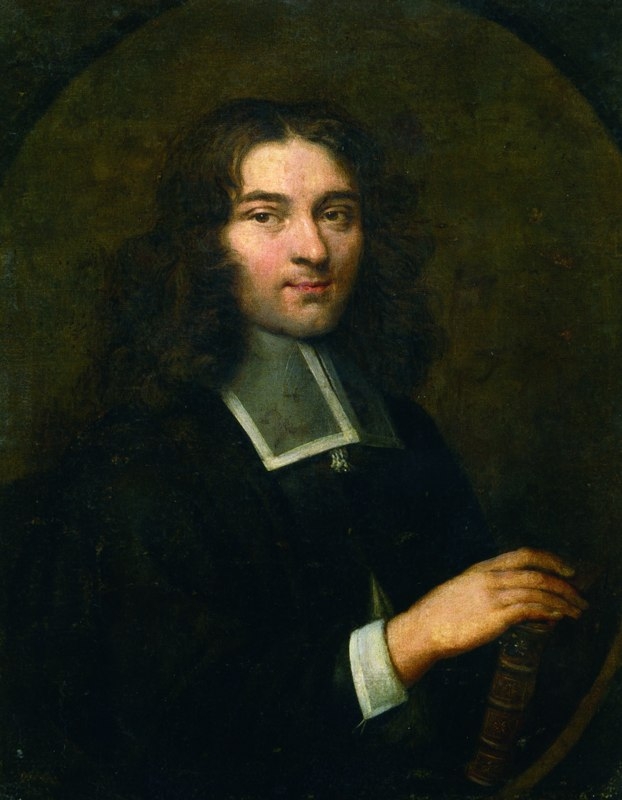 French philosopher Pierre Bayle Republic of Letters The term "Republic of Letters" was coined in 1664 by Pierre Bayle in his journal Nouvelles de la Republique des Lettres. Towards the end of the 18th century, the editor of Histoire de la République des Lettres en France, a literary survey, described the Republic of Letters as being: In the midst of all the governments that decide the fate of men; in the bosom of so many states, the majority of them despotic ... there exists a certain realm which holds sway only over the mind ... that we honor with the name Republic, because it preserves a measure of independence, and because it is almost its essence to be free. It is the realm of talent and of thought.[206] The Republic of Letters was the sum of a number of Enlightenment ideals: an egalitarian realm governed by knowledge that could act across political boundaries and rival state power.[206] It was a forum that supported "free public examination of questions regarding religion or legislation."[207] Kant considered written communication essential to his conception of the public sphere; once everyone was a part of the "reading public," then society could be said to be enlightened.[208] The people who participated in the Republic of Letters, such as Diderot and Voltaire, are frequently known today as important Enlightenment figures. Indeed, the men who wrote Diderot's Encyclopédie arguably formed a microcosm of the larger "republic."[209] 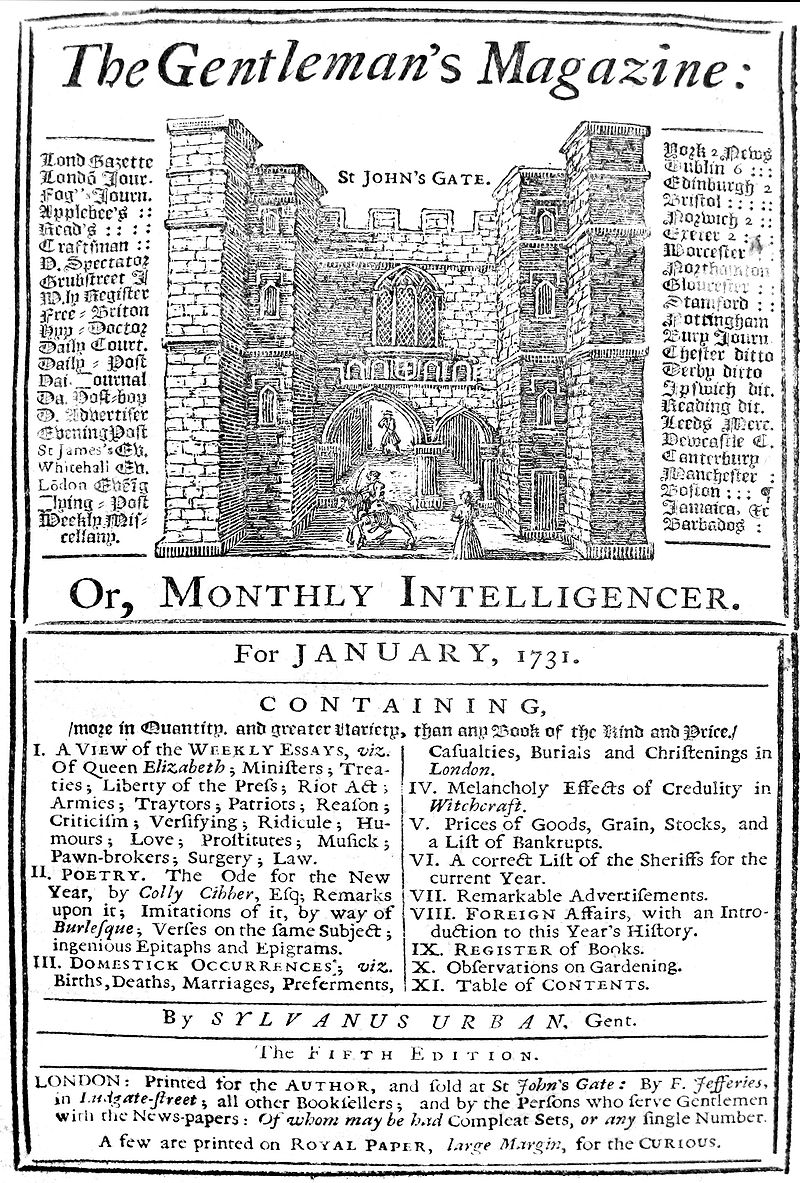 Front page of The Gentleman's Magazine, January 1731 Many women played an essential part in the French Enlightenment because of the role they played as salonnières in Parisian salons, as the contrast to the male philosophes. The salon was the principal social institution of the republic[210] and "became the civil working spaces of the project of Enlightenment." Women, as salonnières, were "the legitimate governors of [the] potentially unruly discourse" that took place within.[211] While women were marginalized in the public culture of the Old Regime, the French Revolution destroyed the old cultural and economic restraints of patronage and corporatism (guilds), opening French society to female participation, particularly in the literary sphere.[212] In France, the established men of letters (gens de lettres) had fused with the elites (les grands) of French society by the mid-18th century. This led to the creation of an oppositional literary sphere, Grub Street, the domain of a "multitude of versifiers and would-be authors."[213] These men came to London to become authors only to discover that the literary market could not support large numbers of writers, who in any case were very poorly remunerated by the publishing-bookselling guilds.[214] The writers of Grub Street, the Grub Street Hacks, were left feeling bitter about the relative success of the men of letters[215] and found an outlet for their literature which was typified by the libelle. Written mostly in the form of pamphlets, the libelles "slandered the court, the Church, the aristocracy, the academies, the salons, everything elevated and respectable, including the monarchy itself."[216] Le Gazetier cuirassé by Charles Théveneau de Morande was a prototype of the genre. It was Grub Street literature that was most read by the public during the Enlightenment.[217] According to Darnton, more importantly the Grub Street hacks inherited the "revolutionary spirit" once displayed by the philosophes and paved the way for the French Revolution by desacralizing figures of political, moral, and religious authority in France.[218] |
思想の普及 哲学者たちは、国際都市に住む教養ある男女の間で自らの思想を広めることに多大なエネルギーを費やした。彼らは多くの場を利用した。その中にはまったく新しいものもあった。  フランスの哲学者ピエール・ベイル 文芸共和国 「文芸共和国」という用語は、1664年にピエール・ベイルが自身の雑誌『文芸共和国の新報』で初めて用いた。18世紀末、文学概説書『フランス文芸共和国の歴史』の編集者は、文芸共和国を次のように説明している: 人間の運命を決するあらゆる政府の只中に、数多の国家の懐に、その大半が専制的な国家の懐に……ある領域が存在する。それは精神のみを支配する領域であ る……我々はこれを共和国と呼んで敬意を表する。なぜならそこには一定の独立性が保たれ、自由であることがその本質に近いからである。それは才能と思想の 領域である。[206] 文芸共和国の理念は啓蒙思想の数々の理想を統合したものであった。すなわち、知識によって統治される平等主義的領域であり、政治的境界を越えて活動し、国 家権力に対抗し得るものだった[206]。それは「宗教や立法に関する問題を公に自由に検討する」場として機能した[207]。カントは書面によるコミュ ニケーションを公共圏の概念に不可欠と見なした。誰もが「読書公衆」の一員となった時、初めて社会は啓蒙されたと言えるのだ。[208] ディドロやヴォルテールなど、文芸共和国に参加した人民は、今日では重要な啓蒙思想家として広く知られている。実際、ディドロの『百科全書』を執筆した男 たちは、より大きな「共和国」の縮図を形成していたと言えるだろう。[209]  『紳士雑誌』1731年1月号表紙 多くの女性がフランス啓蒙主義において重要な役割を果たしたのは、パリのサロンにおけるサロンニエールとしての立場が、男性の哲学者たちとの対照をなした ためである。サロンは共和国の主要な社会制度[210]であり、「啓蒙主義プロジェクトの市民的作業空間となった」。サロン主宰者としての女性は、その場 で行われる「潜在的に制御不能な言説の正当な統治者」であった[211]。旧体制下の公的文化では女性が境界化されていたが、フランス革命はパトロネージ やギルド制といった旧来の文化的・経済的制約を破壊し、特に文学分野においてフランス社会を女性の参加に開放した[212]。 フランスでは、18世紀半ばまでに、確立された文人(gens de lettres)はフランス社会のエリート層(les grands)と融合していた。これが対抗的な文学圏、グラブ・ストリートの創出につながった。そこは「マルチチュードの詩人志望者と自称作家」の領域で あった[213]。彼らは作家を目指してロンドンにやって来たが、文学市場が多数の作家を支えられないこと、そして出版・書籍販売ギルドによる報酬が極め て低額であることに気づいたのだ。[214] グラブ・ストリートの作家たち、いわゆるグラブ・ストリート・ハックスは、文人たちの相対的な成功に苦々しい思いを抱き[215]、その文学表現の出口を 誹謗文書(リベル)に見出した。主に小冊子の形で書かれた誹謗文書は「宮廷、教会、貴族、アカデミー、サロン、高貴で尊敬されるあらゆるもの、君主制その ものまでを中傷した」[216]。シャルル・テヴノー・ド・モランの『鎧をまとった新聞記者』はこのジャンルの原型である。啓蒙時代において大衆が最も読 んだのは、こうしたグラブ・ストリートの文学であった[217]。ダートンによれば、より重要なのは、グラブ・ストリートの文筆屋たちがかつて哲学者たち が示した「革命的精神」を継承し、フランスの政治的・道徳的・宗教的権威者たちを神聖視から解き放つことでフランス革命への道を開いた点である [218]。 |
Book industry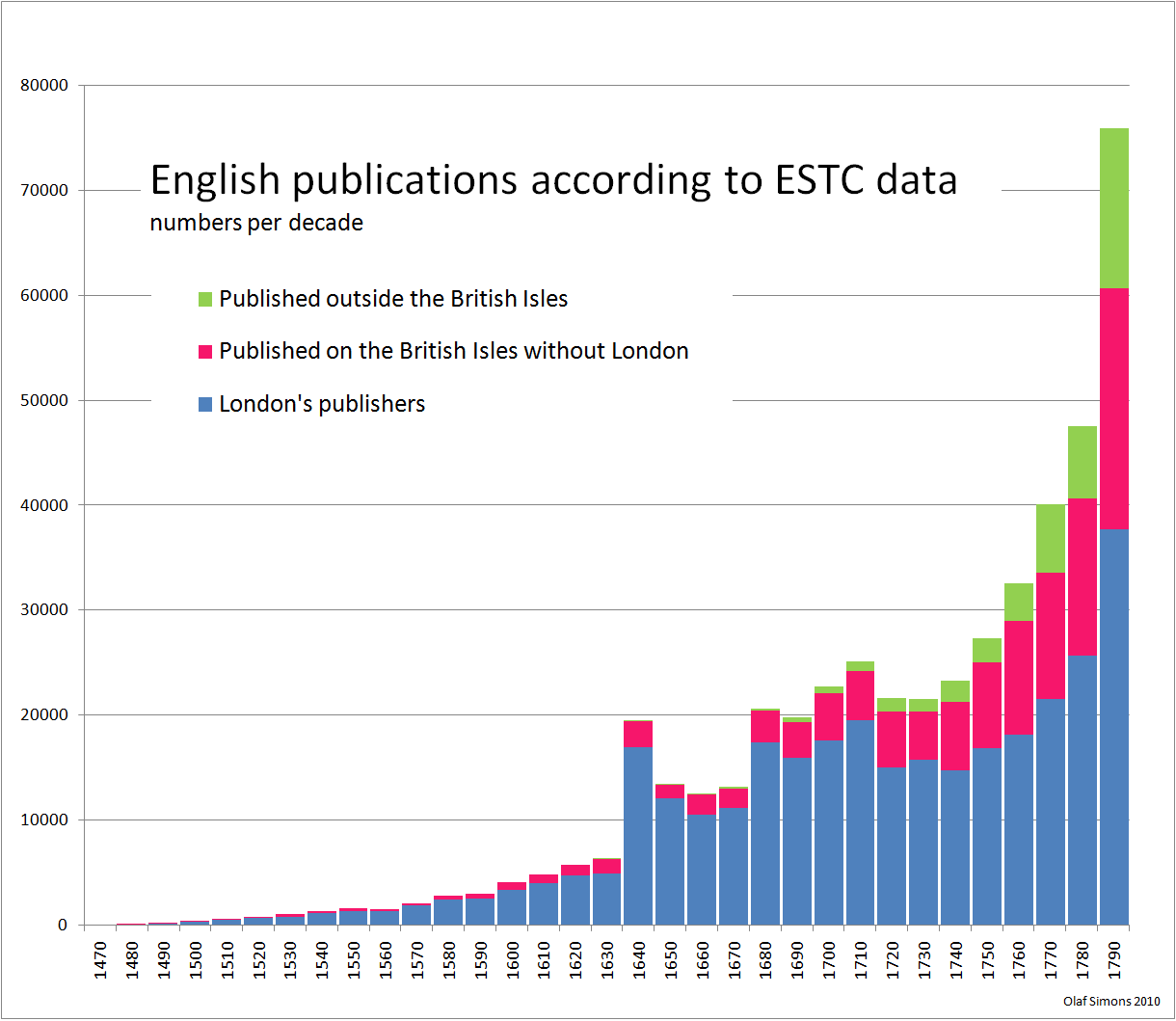 ESTC data 1477–1799 by decade given with a regional differentiation The increased consumption of reading materials of all sorts was one of the key features of the "social" Enlightenment. Developments in the Industrial Revolution allowed consumer goods to be produced in greater quantities at lower prices, encouraging the spread of books, pamphlets, newspapers, and journals – "media of the transmission of ideas and attitudes." Commercial development likewise increased the demand for information, along with rising populations and increased urbanisation.[219] However, demand for reading material extended outside of the realm of the commercial and outside the realm of the upper and middle classes, as evidenced by the bibliothèque bleue. Literacy rates are difficult to gauge, but in France the rates doubled over the course of the 18th century.[220] Reflecting the decreasing influence of religion, the number of books about science and art published in Paris doubled from 1720 to 1780, while the number of books about religion dropped to just one-tenth of the total.[34] Reading underwent serious changes in the 18th century. In particular, Rolf Engelsing has argued for the existence of a reading revolution. Until 1750, reading was done intensively: people tended to own a small number of books and read them repeatedly, often to small audience. After 1750, people began to read "extensively," finding as many books as they could, increasingly reading them alone.[221] This is supported by increasing literacy rates, particularly among women.[222] The vast majority of the reading public could not afford to own a private library, and while most of the state-run "universal libraries" set up in the 17th and 18th centuries were open to the public, they were not the only sources of reading material. On one end of the spectrum was the bibliothèque bleue, a collection of cheaply produced books published in Troyes, France. Intended for a largely rural and semi-literate audience these books included almanacs, retellings of medieval romances and condensed versions of popular novels, among other things. While some historians have argued against the Enlightenment's penetration into the lower classes, the bibliothèque bleue represents at least a desire to participate in Enlightenment sociability.[223] Moving up the classes, a variety of institutions offered readers access to material without needing to buy anything. Libraries that lent out their material for a small price started to appear, and occasionally bookstores would offer a small lending library to their patrons. Coffee houses commonly offered books, journals, and sometimes even popular novels to their customers. Tatler and The Spectator, two influential periodicals sold from 1709 to 1714, were closely associated with coffee house culture in London, being both read and produced in various establishments in the city.[224] This is an example of the triple or even quadruple function of the coffee house: reading material was often obtained, read, discussed, and even produced on the premises.[225] 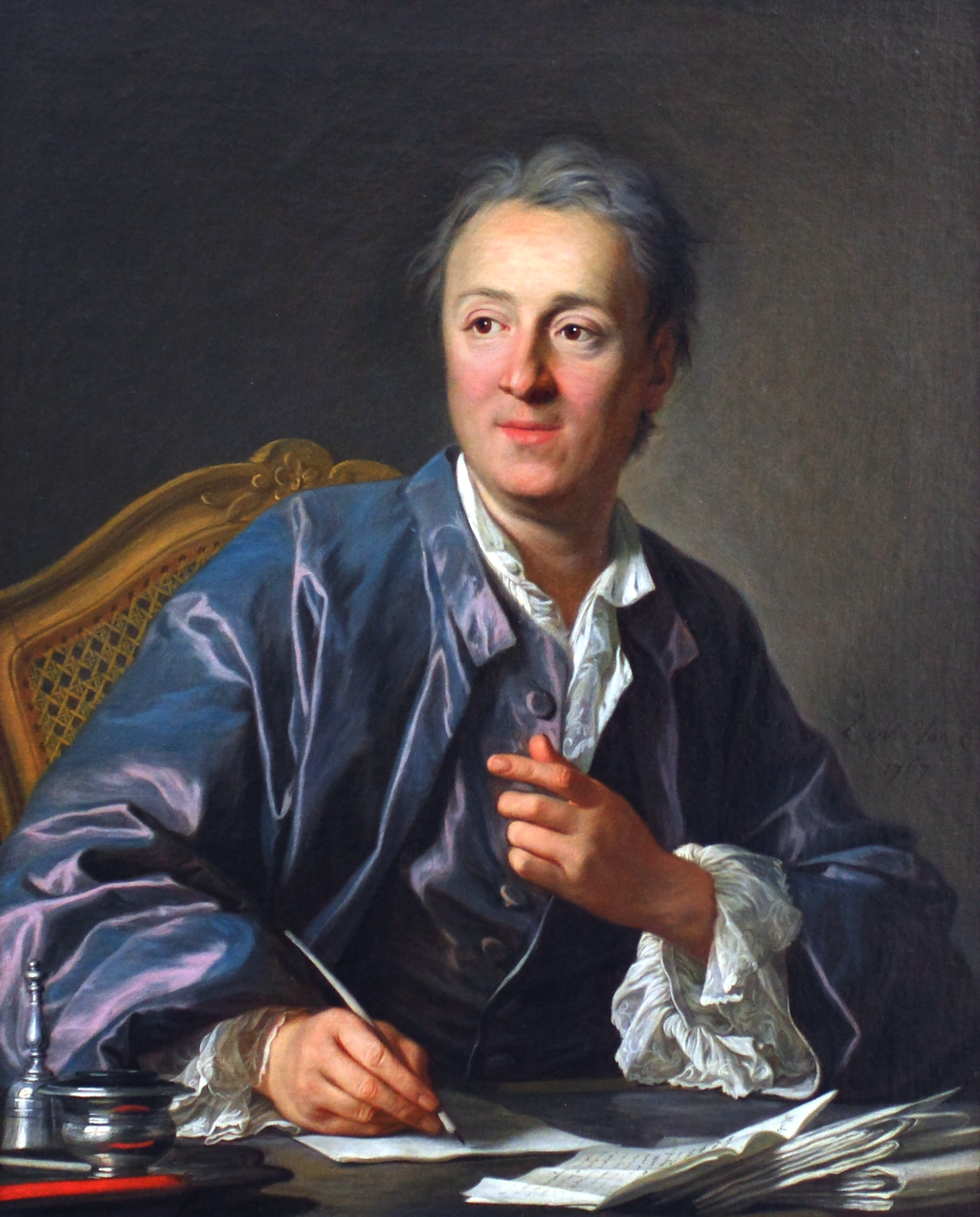 Denis Diderot is best known as the editor of the Encyclopédie. It is difficult to determine what people actually read during the Enlightenment. For example, examining the catalogs of private libraries gives an image skewed in favor of the classes wealthy enough to afford libraries and also ignores censored works unlikely to be publicly acknowledged. For this reason, a study of publishing would be much more fruitful for discerning reading habits.[226] Across continental Europe, but in France especially, booksellers and publishers had to negotiate censorship laws of varying strictness. For example, the Encyclopédie narrowly escaped seizure and had to be saved by Malesherbes, the man in charge of the French censor. Indeed, many publishing companies were conveniently located outside France so as to avoid overzealous French censors. They would smuggle their merchandise across the border, where it would then be transported to clandestine booksellers or small-time peddlers.[227] The records of clandestine booksellers may give a better representation of what literate Frenchmen might have truly read, since their clandestine nature provided a less restrictive product choice.[228] In one case, political books were the most popular category, primarily libels and pamphlets. Readers were more interested in sensationalist stories about criminals and political corruption than they were in political theory itself. The second most popular category, "general works" (those books "that did not have a dominant motif and that contained something to offend almost everyone in authority"), demonstrated a high demand for generally low-brow subversive literature. However, these works never became part of literary canon and are largely forgotten today as a result.[228] A healthy, legal publishing industry existed throughout Europe, although established publishers and book sellers occasionally ran afoul of the law. For example, the Encyclopédie, condemned by both the King and Clement XII, nevertheless found its way into print with the help of the aforementioned Malesherbes and creative use of French censorship law.[229] However, many works were sold without running into any legal trouble at all. Borrowing records from libraries in England, Germany, and North America indicate that more than 70% of books borrowed were novels. Less than 1% of the books were of a religious nature, indicating the general trend of declining religiosity.[206] |
出版業界 ESTCデータ 1477–1799(10年単位)地域別分類付き あらゆる種類の読書資料の消費増加は、「社会的」啓蒙主義の主要な特徴の一つであった。産業革命の発展により、消費財はより低価格で大量生産されるように なり、書籍、パンフレット、新聞、雑誌といった「思想や態度の伝達媒体」の普及を促進した。商業の発展もまた、人口増加や都市化の進展と相まって情報需要 を高めた[219]。しかし、読書資料への需要は商業領域や上流・中流階級を超えて広がった。その証拠が「青い本」と呼ばれる大衆向け書籍である。識字率 の測定は困難だが、フランスでは18世紀を通じて識字率が倍増した[220]。宗教の影響力低下を反映し、パリで出版された科学・芸術関連書籍は1720 年から1780年にかけて倍増した一方、宗教関連書籍は全体のわずか10分の1にまで減少した[34]。 読書は18世紀に重大な変容を遂げた。特にロルフ・エンゲルシングは「読書革命」の存在を主張している。1750年までは読書は集中的に行われていた。人 民は少数の本を所有し、繰り返し読み、しばしば少人数の聴衆の前で朗読した。1750年以降、人民は「広範に」読むようになり、可能な限り多くの本を探し 求め、ますます一人で読むようになった[221]。これは識字率の上昇、特に女性の間での上昇によって裏付けられている。[222] 読書層の大多数は私設図書館を所有する余裕がなく、17~18世紀に設立された国営の「公共図書館」の大半は一般公開されていたものの、それだけが読書資 料の供給源ではなかった。その両極端に位置するのが、フランス・トロワで出版された廉価本シリーズ「ビブリオテーク・ブルー」である。主に農村部の半識字 層を対象としたこれらの書籍には、暦書、中世ロマンスの再話、人気小説の要約版などが含まれていた。啓蒙思想が下層階級に浸透したかについては歴史家の間 で議論があるが、少なくとも『青い本』は啓蒙的な社交性への参加意欲を表していると言える。[223] 階級が上がるにつれ、様々な機関が読者に購入不要で資料を提供するようになった。わずかな料金で資料を貸し出す図書館が現れ始め、書店が顧客向けに小規模 な貸出図書館を設けることもあった。喫茶店では顧客に書籍や雑誌、時には大衆小説さえ提供するのが一般的だった。1709年から1714年にかけて販売さ れた有力な定期刊行物『タトラー』と『スペクテイター』は、ロンドンの喫茶店文化と密接に関連しており、市内の様々な店で読まれ、制作されていた。 [224] これは喫茶店の三重、あるいは四重の機能の一例だ。読書材料は店内で入手され、読まれ、議論され、さらには制作されることもあった。[225]  デニス・ディドロは『百科全書』の編集者として最もよく知られている。 啓蒙時代の人々が実際に何を読んでいたかを特定するのは難しい。例えば個人図書館の目録を調べても、図書館を維持できる富裕層に偏った像しか得られず、公 に認められにくい検閲作品も無視される。このため出版史の研究こそが、読書習慣を解明する上でより有益である。[226] ヨーロッパ大陸全域、特にフランスでは、書籍販売業者や出版社が厳しさが異なる検閲法と折り合いをつける必要があった。例えば『百科全書』は差し押さえを 間一髪で免れ、フランス検閲責任者マレゼルブスの救出を必要とした。実際、多くの出版会社は熱心すぎるフランス検閲官を避けるため、都合よく国外に拠点を 置いていた。彼らは商品を国境を越えて密輸し、そこから密売人や小規模な行商人へと運ばれた[227]。密売人の記録は、識字能力のあるフランス人が実際 に何を読んでいたかをよりよく示す可能性がある。なぜなら、その非合法性がより制限の少ない商品選択を可能にしたからだ[228]。ある事例では、政治書 が最も人気のあるカテゴリーであり、主に誹謗中傷やパンフレットであった。読者は政治理論そのものよりも、犯罪者や政治腐敗に関するセンセーショナルな物 語に強く惹かれていた。第二に人気があった「一般書」(「支配的な主題を持たず、権力者ほぼ全員を怒らせる要素を含む書籍」)は、低俗な反体制文学への高 い需要を示していた。しかしこれらの作品は文学の正典には決して加わらず、結果として今日ではほとんど忘れ去られている。[228] ヨーロッパ全域で健全な合法出版産業が存在する一方、既存の出版社や書店が時折法律に抵触することもあった。例えば『百科全書』は国王とクレメンス12世 双方から非難されたが、前述のマレゼルブスの助力とフランス検閲法の巧妙な利用により出版に至った[229]。しかし多くの著作は全く法的問題を起こさず 販売されていた。イングランド、ドイツ、北米の図書館の貸出記録によれば、貸出図書の70%以上が小説であった。宗教関連書は1%未満であり、宗教心が衰 退する一般的な傾向を示している。[206] |
Natural history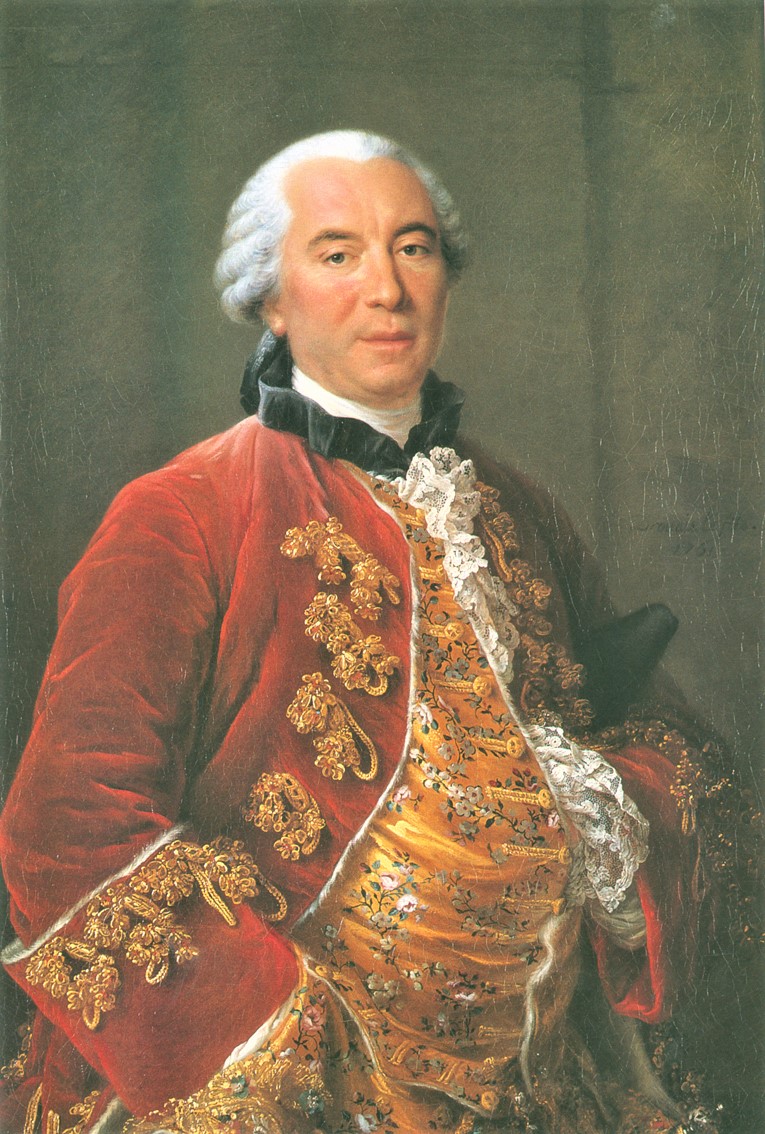 Georges Buffon is best remembered for his Histoire naturelle, a 44 volume encyclopedia describing everything known about the natural world. A genre that greatly rose in importance was that of scientific literature. Natural history in particular became increasingly popular among the upper classes. Works of natural history include René-Antoine Ferchault de Réaumur's Histoire naturelle des insectes and Jacques Gautier d'Agoty's La Myologie complète, ou description de tous les muscles du corps humain (1746). Outside Ancien Régime France, natural history was an important part of medicine and industry, encompassing the fields of botany, zoology, meteorology, hydrology, and mineralogy. Students in Enlightenment universities and academies were taught these subjects to prepare them for careers as diverse as medicine and theology. As shown by Matthew Daniel Eddy, natural history in this context was a very middle class pursuit and operated as a fertile trading zone for the interdisciplinary exchange of diverse scientific ideas.[230] The target audience of natural history was French upper class, evidenced more by the specific discourse of the genre than by the generally high prices of its works. Naturalists catered to upper class desire for erudition: many texts had an explicit instructive purpose. However, natural history was often a political affair. As Emma Spary writes, the classifications used by naturalists "slipped between the natural world and the social ... to establish not only the expertise of the naturalists over the natural, but also the dominance of the natural over the social."[231] The idea of taste (le goût) was a social indicator: to truly be able to categorize nature, one had to have the proper taste, an ability of discretion shared by all members of the upper class. In this way, natural history spread many of the scientific developments of the time but also provided a new source of legitimacy for the dominant class.[232] From this basis, naturalists could then develop their own social ideals based on their scientific works.[233] |
自然史 ジョルジュ・ビュフォンは、自然界に関するあらゆる知識を網羅した44巻の百科事典『自然史』で最もよく知られている。 科学文献というジャンルは、その重要性を大きく高めた。特に自然史は上流階級の間でますます人気を博した。自然史の著作には、ルネ=アントワーヌ・フェル ショー・ド・レオミュールの『昆虫の自然史』、ジャック・ゴティエ・ダゴティの『完全筋学、あるいは人体全筋肉の記述』(1746年)などがある。旧体制 下のフランス以外では、自然史は医学や産業の重要な一部であり、植物学、動物学、気象学、水文学、鉱物学などの分野を包含していた。啓蒙時代の大学やアカ デミーの学生たちは、医学から神学まで多様な職業に備えるため、これらの科目を学んだ。マシュー・ダニエル・エディが示すように、この文脈における自然史 は非常に中産階級的な追求であり、多様な科学的アイデアの学際的交流が活発に行われる場として機能していた。[230] 自然史の主な対象読者はフランス上流階級であった。これは、作品が一般的に高価であったことよりも、むしろこのジャンルの特有の言説内容によって裏付けら れる。自然学者たちは上流階級の博識への欲求に応えた。多くの著作には明示的な教育目的があった。しかし自然史はしばしば政治的な事象でもあった。エマ・ スパリーが指摘するように、自然学者たちが用いた分類法は「自然界と社会の間をすり抜け…自然学者たちの自然に対する専門性を確立するだけでなく、自然が 社会に対して持つ優位性も確立した」のである[231]。「趣味(ル・グー)」という概念は社会的指標であった。自然を真に分類するには、上流階級全員が 共有する選別の能力、すなわち適切な趣味が必要だった。こうして自然史は当時の科学的発展の多くを広めると同時に、支配階級に新たな正当性の源泉を提供し た[232]。この基盤から、自然主義者たちは自らの科学的業績に基づいて独自の社会的理想を発展させることができた。[233] |
Scientific and literary journals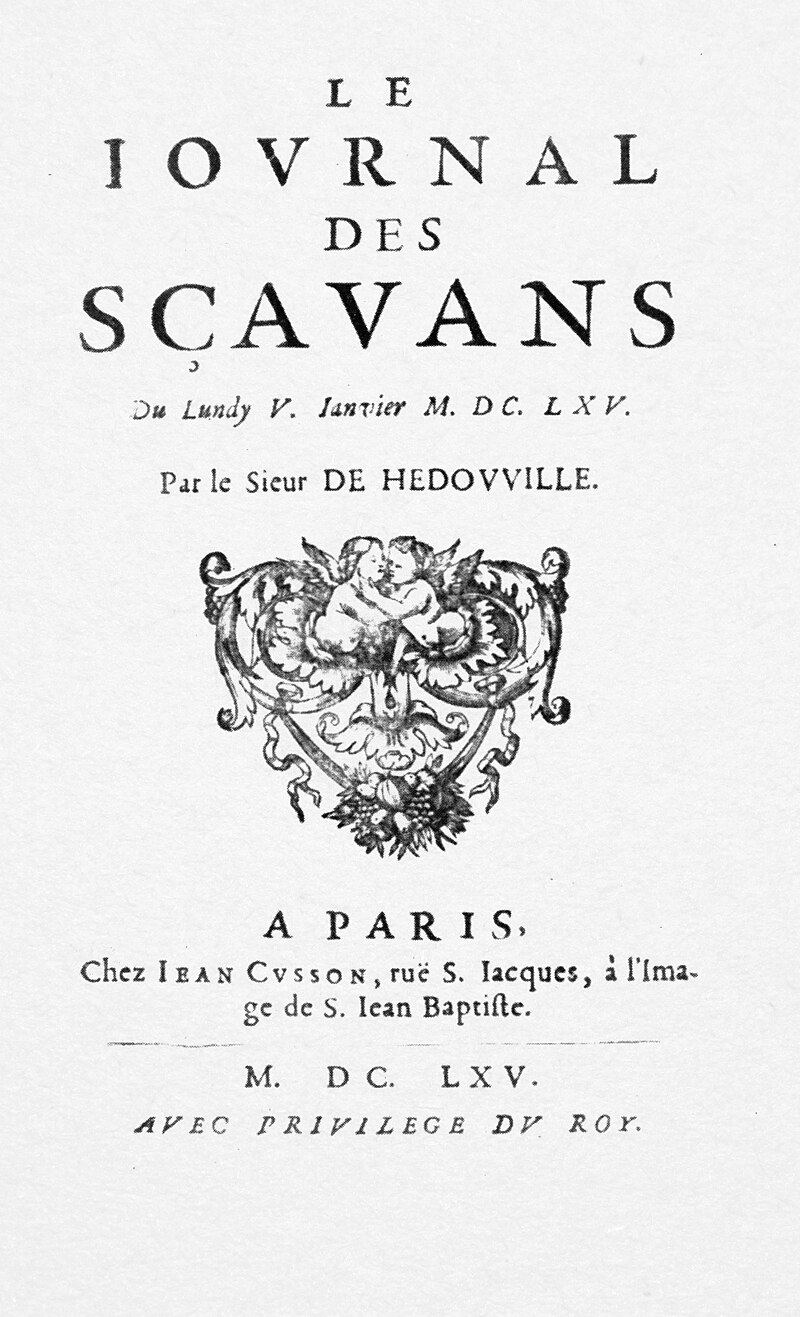 Journal des sçavans was the earliest academic journal published in Europe. The first scientific and literary journals were established during the Enlightenment. The first journal, the Parisian Journal des sçavans, appeared in 1665. However, it was not until 1682 that periodicals began to be more widely produced. French and Latin were the dominant languages of publication, but there was also a steady demand for material in German and Dutch. There was generally low demand for English publications on the continent, which was echoed by England's similar lack of desire for French works. Languages commanding less of an international market—such as Danish, Spanish, and Portuguese—found journal success more difficult, and a more international language was used instead. French slowly took over Latin's status as the lingua franca of learned circles. This in turn gave precedence to the publishing industry in Holland, where the vast majority of these French language periodicals were produced.[234] Jonathan Israel called the journals the most influential cultural innovation of European intellectual culture.[235] They shifted the attention of the "cultivated public" away from established authorities to novelty and innovation, and instead promoted the Enlightened ideals of toleration and intellectual objectivity. Being a source of knowledge derived from science and reason, they were an implicit critique of existing notions of universal truth monopolized by monarchies, parliaments, and religious authorities. They also advanced Christian Enlightenment that upheld "the legitimacy of God-ordained authority"—the Bible—in which there had to be agreement between the biblical and natural theories.[236] |
学術誌と文芸誌 『ジャーナル・デ・サヴァン』はヨーロッパで最初に出版された学術誌である。 最初の学術誌と文芸誌は啓蒙時代に創刊された。最初の雑誌であるパリの『ジャーナル・デ・サヴァン』は1665年に登場した。しかし定期刊行物がより広く 生産され始めたのは1682年になってからである。出版の主流言語はフランス語とラテン語だったが、ドイツ語やオランダ語の資料に対する需要も安定してい た。大陸では英語出版物の需要が一般的に低く、これはイングランドがフランス語作品に同様の関心を示さなかったことと相まって現れていた。デンマーク語、 スペイン語、ポルトガル語など国際市場での地位が低い言語では、雑誌の成功はより困難であり、代わりに国際的な言語が用いられた。フランス語は学識界の共 通語としてラテン語の地位を徐々に奪った。これがオランダの出版産業を優位に立たせ、フランス語定期刊行物の大半が同地で生産されるようになった [234]。 ジョナサン・イスラエルは、これらの雑誌をヨーロッパ知性文化における最も影響力のある文化的革新と呼んだ[235]。それらは「教養ある大衆」の関心 を、既存の権威から新奇性と革新へと移し、代わりに寛容と知的客観性という啓蒙主義の理想を推進した。科学と理性に基づく知識の源泉として、それらは君主 制、議会、宗教的権威が独占する普遍的真理の既存概念に対する暗黙の批判であった。また「神が定めた権威」―すなわち聖書―の正当性を擁護するキリスト教 啓蒙主義を推進し、聖書的理論と自然理論の間に一致がなければならないと主張したのである。[236] |
Encyclopedias and dictionaries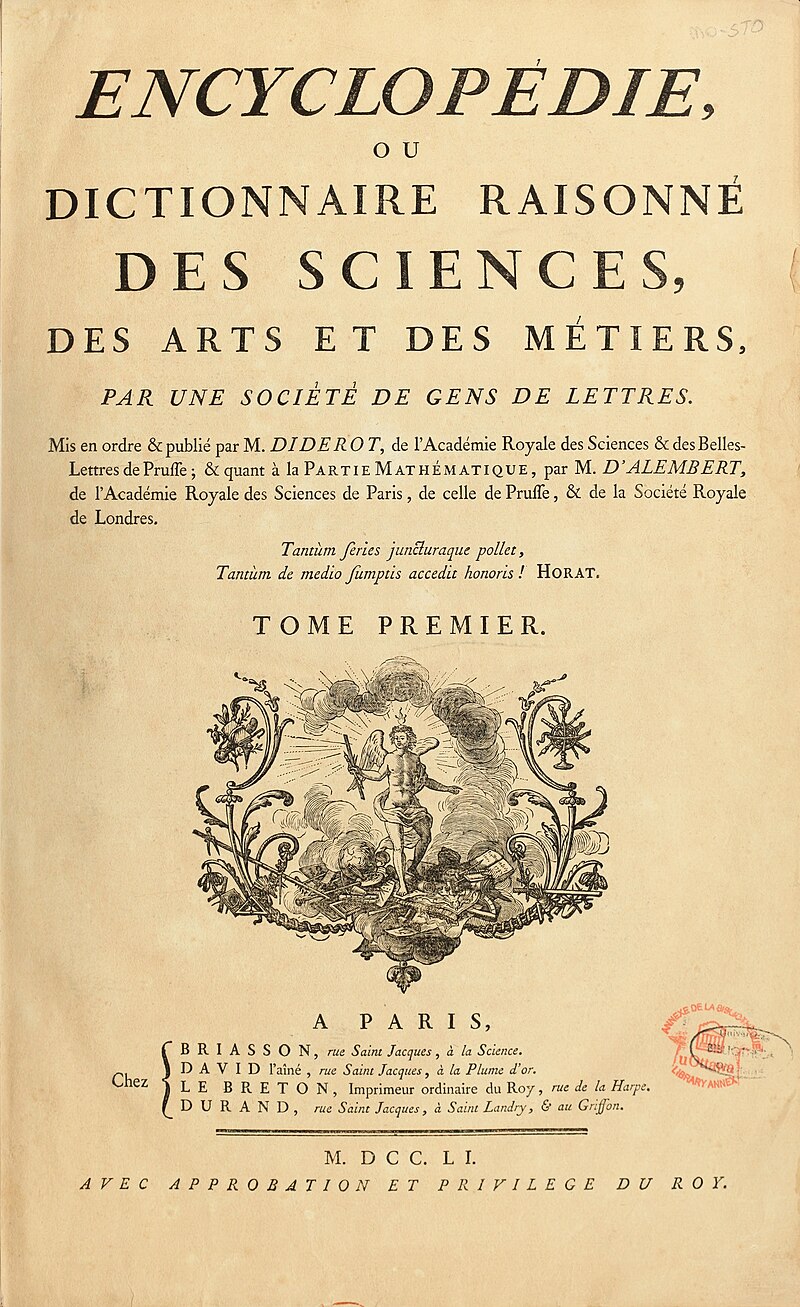 First page of the Encyclopédie, published between 1751 and 1766 Although the existence of dictionaries and encyclopedias spanned into ancient times, the texts changed from defining words in a long running list to far more detailed discussions of those words in 18th-century encyclopedic dictionaries.[237] The works were part of an Enlightenment movement to systematize knowledge and provide education to a wider audience than the elite. As the 18th century progressed, the content of encyclopedias also changed according to readers' tastes. Volumes tended to focus more strongly on secular affairs, particularly science and technology, rather than matters of theology. Along with secular matters, readers also favoured an alphabetical ordering scheme over cumbersome works arranged along thematic lines.[238] Commenting on alphabetization, the historian Charles Porset has said that "as the zero degree of taxonomy, alphabetical order authorizes all reading strategies; in this respect it could be considered an emblem of the Enlightenment." For Porset, the avoidance of thematic and hierarchical systems thus allows free interpretation of the works and becomes an example of egalitarianism.[239] Encyclopedias and dictionaries also became more popular during the Age of Enlightenment as the number of educated consumers who could afford such texts began to multiply.[237] In the latter half of the 18th century, the number of dictionaries and encyclopedias published by decade increased from 63 between 1760 and 1769 to approximately 148 in the decade proceeding the French Revolution.[240] Along with growth in numbers, dictionaries and encyclopedias also grew in length, often having multiple print runs that sometimes included in supplemented editions.[238] The first technical dictionary was drafted by John Harris and entitled Lexicon Technicum: Or, An Universal English Dictionary of Arts and Sciences. Harris' book avoids theological and biographical entries and instead concentrates on science and technology. Published in 1704, the Lexicon Technicum was the first book to be written in English that took a methodical approach to describing mathematics and commercial arithmetic along with the physical sciences and navigation. Other technical dictionaries followed Harris' model, including Ephraim Chambers' Cyclopaedia (1728), which included five editions and is a substantially larger work than Harris'. The folio edition of the work even included foldout engravings. The Cyclopaedia emphasized Newtonian theories, Lockean philosophy and contained thorough examinations of technologies, such as engraving, brewing, and dyeing. 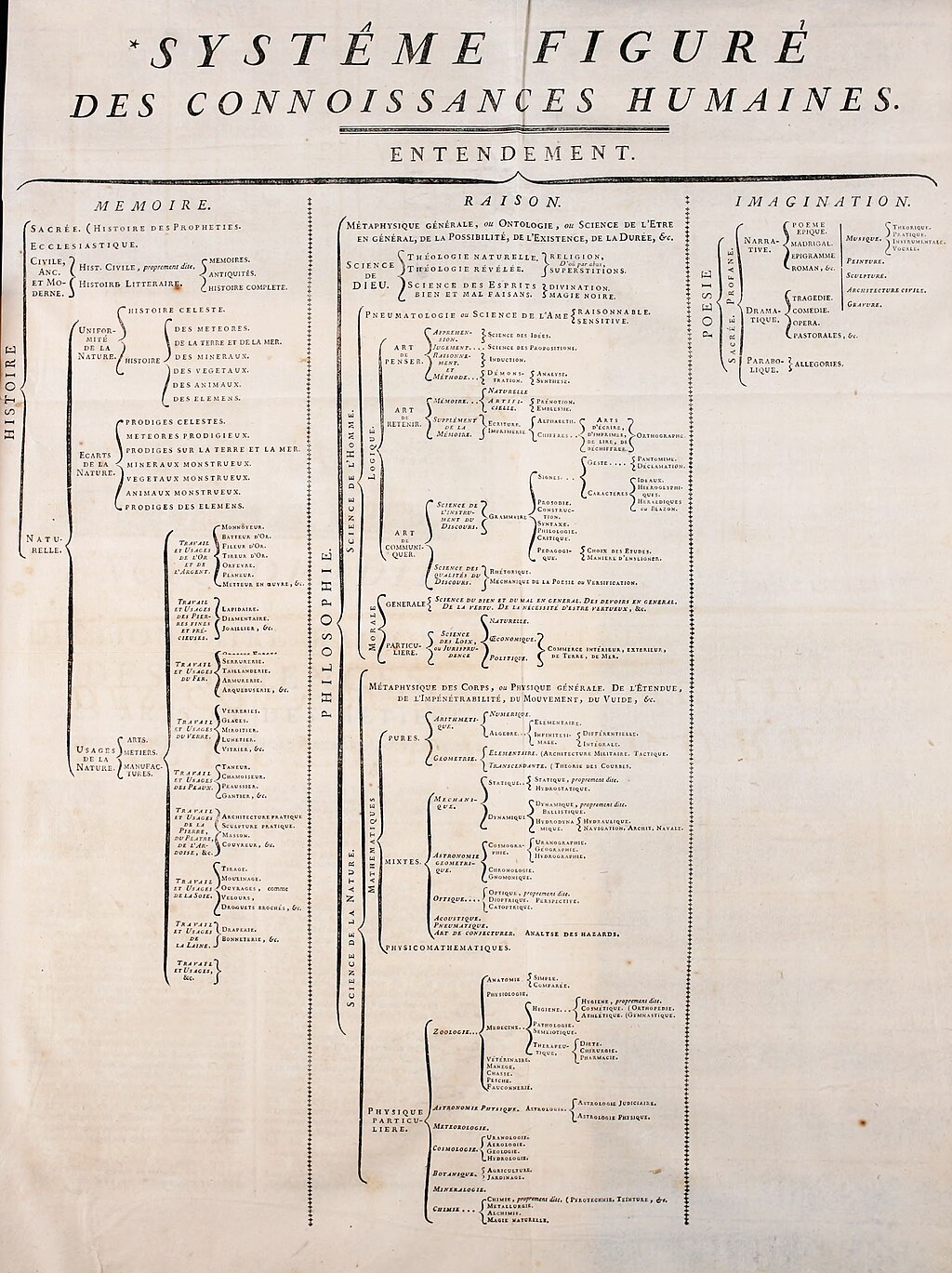 "Figurative system of human knowledge," the structure that the Encyclopédie organised knowledge into – it had three main branches: memory, reason, and imagination. In Germany, practical reference works intended for the uneducated majority became popular in the 18th century. The Marperger Curieuses Natur-, Kunst-, Berg-, Gewerk- und Handlungs-Lexicon (1712) explained terms that usefully described the trades and scientific and commercial education. Jablonksi Allgemeines Lexicon (1721) was better known than the Handlungs-Lexicon and underscored technical subjects rather than scientific theory. For example, over five columns of text were dedicated to wine while geometry and logic were allocated only twenty-two and seventeen lines, respectively. The first edition of the Encyclopædia Britannica (1771) was modelled along the same lines as the German lexicons.[241] However, the prime example of reference works that systematized scientific knowledge in the Age of Enlightenment were universal encyclopedias rather than technical dictionaries. It was the goal of universal encyclopedias to record all human knowledge in a comprehensive reference work.[242] The most well-known of these works is Diderot and d'Alembert's Encyclopédie, ou dictionnaire raisonné des sciences, des arts et des métiers. The work, which began publication in 1751, was composed of 35 volumes and over 71,000 separate entries. A great number of the entries were dedicated to describing the sciences and crafts in detail and provided intellectuals across Europe with a high-quality survey of human knowledge. In d'Alembert's Preliminary Discourse to the Encyclopedia of Diderot, the work's goal to record the extent of human knowledge in the arts and sciences is outlined: As an Encyclopédie, it is to set forth as well as possible the order and connection of the parts of human knowledge. As a Reasoned Dictionary of the Sciences, Arts, and Trades, it is to contain the general principles that form the basis of each science and each art, liberal or mechanical, and the most essential facts that make up the body and substance of each.[243] The massive work was arranged according to a "tree of knowledge." The tree reflected the marked division between the arts and sciences, which was largely a result of the rise of empiricism. Both areas of knowledge were united by philosophy, or the trunk of the tree of knowledge. The Enlightenment's desacrilization of religion was pronounced in the tree's design, particularly where theology accounted for a peripheral branch, with black magic as a close neighbour.[244] As the Encyclopédie gained popularity, it was published in quarto and octavo editions after 1777. The quarto and octavo editions were much less expensive than previous editions, making the Encyclopédie more accessible to the non-elite. Robert Darnton estimates that there were approximately 25,000 copies of the Encyclopédie in circulation throughout France and Europe before the French Revolution.[245] The extensive yet affordable encyclopedia came to represent the transmission of Enlightenment and scientific education to an expanding audience.[246] |
百科事典と辞書 『百科全書』の表紙(1751年から1766年に刊行) 辞書や百科事典の存在は古代にまで遡るが、18世紀の百科事典では、単に単語を列挙して定義する形式から、はるかに詳細な解説へと内容が変わった。 [237] これらの著作は、知識を体系化し、エリート層以外の幅広い読者層に教育を提供しようとする啓蒙運動の一環であった。18世紀が進むにつれ、百科事典の内容 も読者の嗜好に応じて変化した。各巻は、神学的な事柄よりも、世俗的な事柄、特に科学技術に重点を置く傾向が強まった。 世俗的な事柄に加え、読者はまた、煩雑な主題別構成よりも、アルファベット順の体系を好んだ。[238] 歴史家シャルル・ポルセはアルファベット順について「分類法のゼロ度として、あらゆる読解戦略を許容する。この点で啓蒙主義の象徴と見なせる」と評した。 ポルセによれば、主題別・階層的体系を回避することで作品の自由な解釈が可能となり、平等主義の具体例となるのである。[239] 啓蒙時代には、こうした書籍を購入できる教養ある消費者が増加したため、百科事典や辞書もより普及した。[237] 18世紀後半、10年ごとの辞書・百科事典の刊行数は、1760年から1769年の63点から、フランス革命前の10年には約148点に増加した。 [240] 数が増えるとともに、辞書や百科事典は分厚くなり、しばしば複数回の刷りが行われ、時には増補版も含まれた。[238] 最初の技術用語辞典はジョン・ハリスによって起草され、『技術用語辞典:あるいは、芸術と科学の普遍的英語辞典』と題された。ハリス著書は神学や伝記的な 項目を避け、代わりに科学と技術に焦点を当てている。1704年に出版された『技術用語辞典』は、数学や商業算術、物理科学、航海術を体系的に記述した初 の英語書籍であった。エフライム・チェンバーズの『百科事典』(1728年)など、ハリスの方式を踏襲した技術辞典が続いた。同書は五版を重ね、ハリス版 より大幅に膨大な内容となった。大判版には折り込み版画さえ収録されていた。『サイクロペディア』はニュートン理論やロック哲学を重視し、彫刻・醸造・染 色などの技術を詳細に論じた。  「人間の知識の図式的体系」とは、『百科全書』が知識を体系化した構造を指す。記憶・理性・想像力の三本柱で構成されていた。 ドイツでは18世紀、無学な大衆向けの実用参考書が普及した。マルペルガーの『自然・芸術・鉱業・工芸・商業奇趣事典』(1712年)は、職業や科学・商 業教育を実用的に説明する用語を解説した。ヤブロンスキーの『一般事典』(1721年)は『商業事典』より広く知られ、科学的理論よりも技術的分野を強調 した。例えば、ワインには5段落以上の紙面が割かれた一方、幾何学と論理学にはそれぞれわずか22行と17行しか割り当てられなかった。初版『ブリタニカ 百科事典』(1771年)は、こうしたドイツ語辞典の手法を踏襲した。[241] しかし啓蒙時代において科学的知識を体系化した参考書の代表例は、専門用語辞典ではなく普遍的百科事典であった。普遍的百科事典の目的は、あらゆる人類の 知識を包括的な参考書に記録することにあった[242]。最も著名な作品はディドロとダルランベールの『百科全書、あるいは科学・芸術・職業の合理的な辞 典』である。1751年に刊行が始まったこの著作は、35巻にわたり71,000以上の独立項目で構成されていた。その多くは科学と工芸を詳細に記述する ものであり、ヨーロッパ中の知識人に人類の知見を高水準で概観する機会を提供した。ダランベールの『ディドロの百科事典序言説』には、芸術と科学における 人類の知識の全容を記録するというこの著作の目的が記されている: 百科事典として、それは可能な限り、人類の知識の各部分の秩序と関連性を明らかにするものである。科学・芸術・技術の体系的辞典として、それは各科学・各 芸術(自由芸術であれ機械的芸術であれ)の基礎を成す一般原理と、各分野の本体・実体を構成する最も本質的な事実を含むものである。[243] この膨大な著作は「知識の樹」に基づいて構成された。この樹形図は、経験主義の台頭によって顕著になった芸術と科学の明確な区分を反映していた。両分野は 哲学、すなわち知識の樹の幹によって統合されていた。啓蒙主義による宗教の神聖性剥奪は樹の設計に顕著に表れており、特に神学が末梢の枝に位置づけられ、 黒呪術が隣接する配置となっていた。[244] 『百科全書』の人気が高まるにつれ、1777年以降は四つ折版と八つ折版が刊行された。四つ折版と八つ折版は以前の版よりはるかに安価で、非エリート層に も『百科全書』を手にしやすくした。ロバート・ダントンはフランス革命前、フランスとヨーロッパ全体で約25,000冊の『百科全書』が流通していたと推 定している[245]。広範でありながら手頃な価格の百科事典は、拡大する読者層への啓蒙思想と科学教育の伝達を象徴する存在となった[246]。 |
| Popularization of science One of the most important developments that the Enlightenment era brought to the discipline of science was its popularization. An increasingly literate population seeking knowledge and education in both the arts and the sciences drove the expansion of print culture and the dissemination of scientific learning. The new literate population was precipitated by a high rise in the availability of food; this enabled many people to rise out of poverty, and instead of paying more for food, they had money for education.[247] Popularization was generally part of an overarching Enlightenment ideal that endeavoured "to make information available to the greatest number of people."[248] As public interest in natural philosophy grew during the 18th century, public lecture courses and the publication of popular texts opened up new roads to money and fame for amateurs and scientists who remained on the periphery of universities and academies.[249] More formal works included explanations of scientific theories for individuals lacking the educational background to comprehend the original scientific text. Newton's celebrated Philosophiae Naturalis Principia Mathematica was published in Latin and remained inaccessible to readers without education in the classics until Enlightenment writers began to translate and analyze the text in the vernacular. 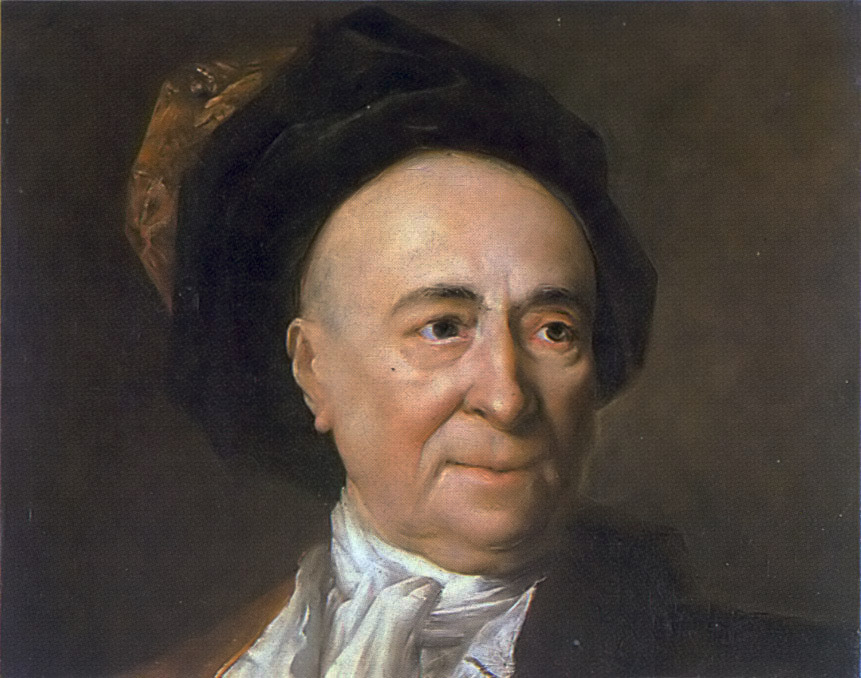 A portrait of Bernard de Fontenelle The first significant work that expressed scientific theory and knowledge expressly for the laity, in the vernacular and with the entertainment of readers in mind, was Bernard de Fontenelle's Conversations on the Plurality of Worlds (1686). The book was produced specifically for women with an interest in scientific writing and inspired a variety of similar works.[250] These popular works were written in a discursive style, which was laid out much more clearly for the reader than the complicated articles, treatises, and books published by the academies and scientists. Charles Leadbetter's Astronomy (1727) was advertised as "a Work entirely New" that would include "short and easie [sic] Rules and Astronomical Tables."[251] The first French introduction to Newtonianism and the Principia was Eléments de la philosophie de Newton, published by Voltaire in 1738.[252] Émilie du Châtelet's translation of the Principia, published after her death in 1756, also helped to spread Newton's theories beyond scientific academies and the university.[253] Writing for a growing female audience, Francesco Algarotti published Il Newtonianism per le dame, which was a tremendously popular work and was translated from Italian into English by Elizabeth Carter. A similar introduction to Newtonianism for women was produced by Henry Pemberton. His A View of Sir Isaac Newton's Philosophy was published by subscription. Extant records of subscribers show that women from a wide range of social standings purchased the book, indicating the growing number of scientifically inclined female readers among the middling class.[254] During the Enlightenment, women also began producing popular scientific works. Sarah Trimmer wrote a successful natural history textbook for children titled The Easy Introduction to the Knowledge of Nature (1782), which was published for many years in eleven editions.[255] |
科学の大衆化 啓蒙時代が科学分野にもたらした最も重要な進展の一つは、その普及であった。芸術と科学の両分野で知識と教育を求める識字率の向上した人口が増加し、印刷 文化の拡大と科学的知見の普及を促進した。この新たな識字層の出現は、食料の入手可能性が急激に高まったことに起因する。これにより多くの人々が貧困から 脱却し、食料費に充てる代わりに教育費を捻出できるようになったのである。[247] この普及は、概して「情報を可能な限り多くの人々に提供すること」を志向した啓蒙主義の包括的理念の一部であった。[248] 18世紀に自然哲学への社会的関心が深まる中、公開講座や大衆向け著作の出版は、大学や学会の周辺に留まっていたアマチュアや科学者にとって、金銭と名声 への新たな道を開いた。より正式な著作には、学術的背景を持たない個人向けに科学理論を解説したものも含まれた。ニュートンの著名な『自然哲学の数学的原 理』はラテン語で出版され、啓蒙思想家たちが通俗語で翻訳・分析を始めるまで、古典教育を受けていない読者には理解不能だった。  ベルナール・ド・フォンテネルの肖像 一般読者を明確に意識し、平易な言葉で科学的理論と知識を表現した最初の重要な著作は、ベルナール・ド・フォンテネルの『諸世界の多さに関する対話』 (1686年)である。この本は特に科学的な文章に関心を持つ女性向けに制作され、様々な類似作品の誕生を促した。[250] こうした大衆向け著作は、学界や科学者が出版した複雑な論文・論考・書籍よりも、読者にとってはるかに明快な論述様式で書かれた。チャールズ・リードベ ターの『天文学』(1727年)は「全く新しい著作」として宣伝され、「簡潔で分かりやすい規則と天文表」を含むと謳われた。[251] フランスにおけるニュートン主義と『プリンキピア』の最初の紹介は、ヴォルテールが1738年に刊行した『ニュートン哲学の基礎』であった[252]。エ ミリー・デュ・シャトレによる『プリンキピア』の翻訳(1756年、彼女の死後刊行)もまた、ニュートンの理論を科学アカデミーや大学の枠を超えて広める 一助となった。[253] 拡大する女性読者を対象に、フランチェスコ・アルガロッティは『女性のためのニュートン主義』を出版した。この作品は絶大な人気を博し、エリザベス・カー ターによってイタリア語から英語へ翻訳された。ヘンリー・ペンバートンも同様に女性向けのニュートン主義入門書『アイザック・ニュートン卿の哲学概観』を 刊行し、これは定期購読方式で出版された。購読者名簿の現存記録によれば、様々な社会的地位の女性がこの本を購入しており、中産階級に科学に関心を持つ女 性読者が増加していたことを示している。[254] 啓蒙時代には、女性自身も大衆向け科学著作を執筆し始めた。サラ・トリマーは子供向け自然史教科書『自然知識の易しい入門』(1782年)を執筆し、この 本は11版を重ねるほど成功を収めた。[255] |
| Schools and universities Main article: Education in the Age of Enlightenment Most work on the Enlightenment emphasizes the ideals discussed by intellectuals, rather than the actual state of education at the time. Leading educational theorists like England's John Locke and Switzerland's Jean Jacques Rousseau both emphasized the importance of shaping young minds early. By the late Enlightenment, there was a rising demand for a more universal approach to education, particularly after the American Revolution and the French Revolution. The predominant educational psychology from the 1750s onward, especially in northern European countries, was associationism: the notion that the mind associates or dissociates ideas through repeated routines. In addition to being conducive to Enlightenment ideologies of liberty, self-determination, and personal responsibility, it offered a practical theory of the mind that allowed teachers to transform longstanding forms of print and manuscript culture into effective graphic tools of learning for the lower and middle orders of society.[256] Children were taught to memorize facts through oral and graphic methods that originated during the Renaissance.[257] Many of the leading universities associated with Enlightenment progressive principles were located in northern Europe, with the most renowned being the universities of Leiden, Göttingen, Halle, Montpellier, Uppsala, and Edinburgh. These universities, especially Edinburgh, produced professors whose ideas had a significant impact on Britain's North American colonies and later the American Republic. Within the natural sciences, Edinburgh's medical school also led the way in chemistry, anatomy, and pharmacology.[230] In other parts of Europe, the universities and schools of France and most of Europe were bastions of traditionalism and were not hospitable to the Enlightenment. In France, the major exception was the medical university at Montpellier.[258] |
学校と大学 主な記事: 啓蒙時代の教育 啓蒙時代に関する研究の多くは、当時の教育の実態よりも、知識人たちが議論した理想を強調している。イギリスのジョン・ロックやスイスのジャン=ジャッ ク・ルソーといった主要な教育理論家たちは、若いうちから若者の心を形作る重要性を共に強調した。啓蒙主義後期には、特にアメリカ独立戦争とフランス革命 の後、より普遍的な教育アプローチへの需要が高まった。 1750年代以降、特に北欧諸国で主流となった教育心理学は観念連合主義だった。これは心が反復的な習慣を通じて概念を結びつけたり切り離したりするとい う考え方である。この理論は啓蒙思想の自由・自己決定・個人的責任のイデオロギーに合致するだけでなく、教師が印刷文化や手書き文化という伝統的な形態 を、社会の下層・中層階級向けの効果的な視覚的学習ツールへ転換することを可能にする実践的な心理論を提供した[256]。子供たちはルネサンス期に起源 を持つ口頭および視覚的手法を通じて事実を暗記するよう教えられた。[257] 啓蒙主義の進歩的理念と結びついた主要大学は北欧に多く、特にライデン、ゲッティンゲン、ハレ、モンペリエ、ウプサラ、エディンバラの各大学が著名であっ た。これらの大学、とりわけエディンバラ大学は、その教授陣の思想が英国の北米植民地、そして後のアメリカ合衆国に重大な影響を与えた。自然科学の分野で は、エディンバラの医学部は化学、解剖学、薬理学においても先駆的な役割を果たした。[230] ヨーロッパの他の地域では、フランスをはじめとする大半の大学の校舎は伝統主義の砦であり、啓蒙思想を受け入れる姿勢はなかった。フランスにおける主要な 例外はモンペリエの医学大学であった。[258] |
Learned academies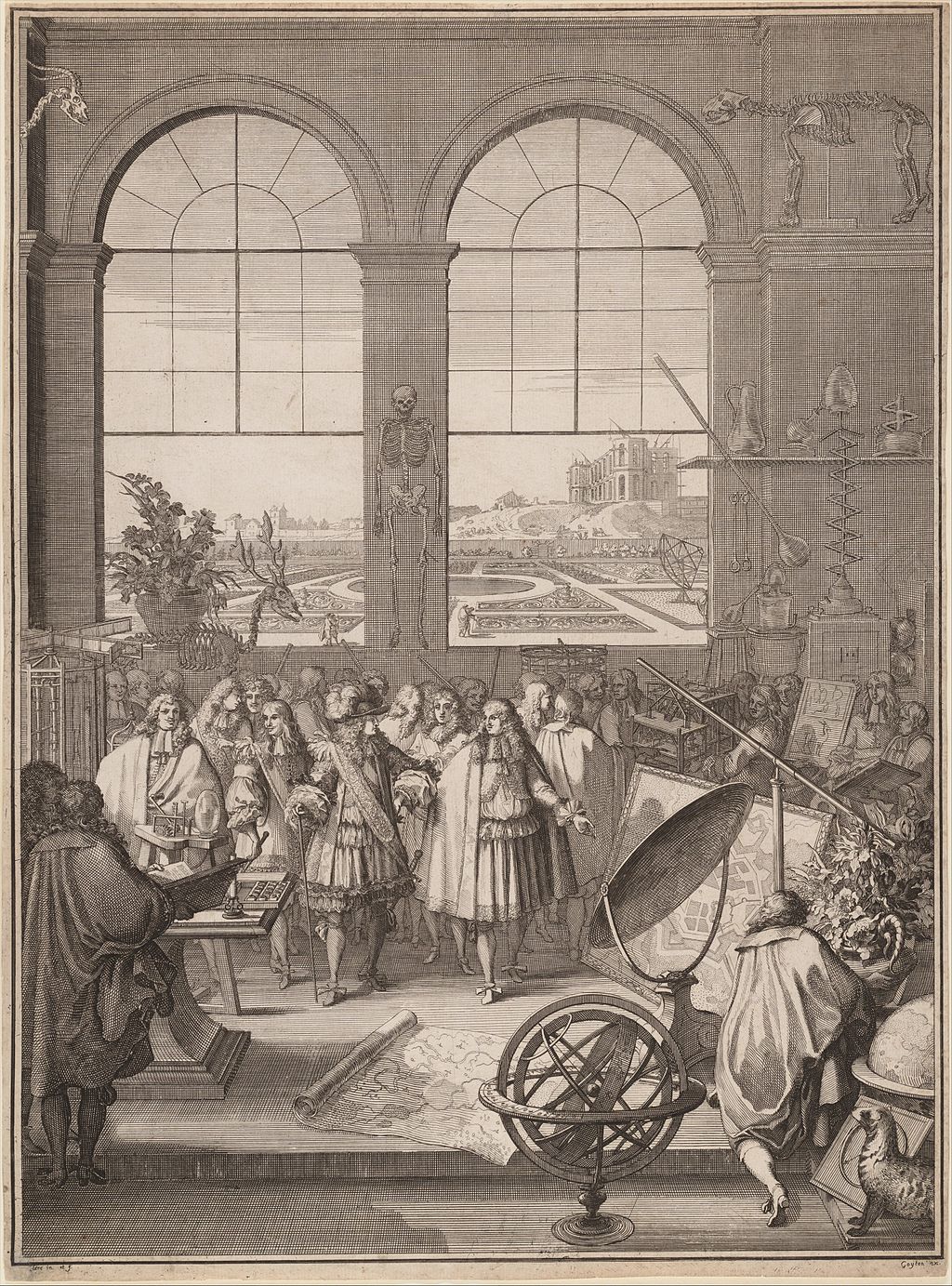 Louis XIV visiting the Académie des sciences in 1671: "It is widely accepted that 'modern science' arose in the Europe of the 17th century, introducing a new understanding of the natural world"—Peter Barrett[259] 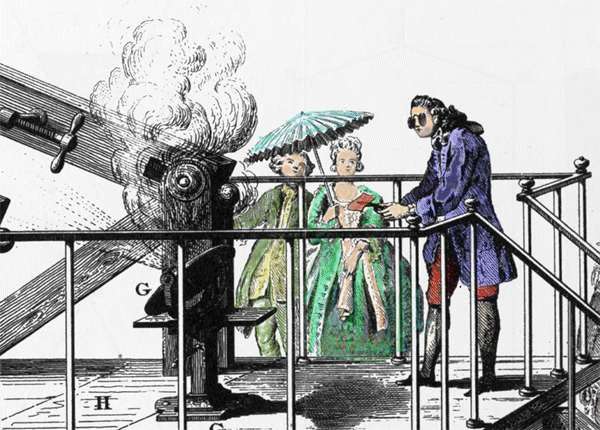 Antoine Lavoisier conducting an experiment related to combustion generated by amplified sun light The history of Academies in France during the Enlightenment begins with the Academy of Science, founded in 1666 in Paris. It was closely tied to the French state, acting as an extension of a government seriously lacking in scientists. It helped promote and organize new disciplines and it trained new scientists. It also contributed to the enhancement of scientists' social status, considering them to be the "most useful of all citizens." Academies demonstrate the rising interest in science along with its increasing secularization, as evidenced by the small number of clerics who were members (13%).[260] The presence of the French academies in the public sphere cannot be attributed to their membership, as although the majority of their members were bourgeois, the exclusive institution was only open to elite Parisian scholars. They perceived themselves as "interpreters of the sciences for the people." For example, it was with this in mind that academicians took it upon themselves to disprove the popular pseudo-science of mesmerism.[261] The strongest contribution of the French Academies to the public sphere comes from the concours académiques (roughly translated as "academic contests") they sponsored throughout France. These academic contests were perhaps the most public of any institution during the Enlightenment.[262] The practice of contests dated back to the Middle Ages and was revived in the mid-17th century. The subject matter had previously been generally religious and/or monarchical, featuring essays, poetry, and painting. However, by roughly 1725 this subject matter had radically expanded and diversified, including "royal propaganda, philosophical battles, and critical ruminations on the social and political institutions of the Old Regime." Topics of public controversy were also discussed such as the theories of Newton and Descartes, the slave trade, women's education, and justice in France.[263] More importantly, the contests were open to all, and the enforced anonymity of each submission guaranteed that neither gender nor social rank would determine the judging. Indeed, although the "vast majority" of participants belonged to the wealthier strata of society ("the liberal arts, the clergy, the judiciary and the medical profession"), there were some cases of the popular classes submitting essays and even winning.[264] Similarly, a significant number of women participated—and won—the competitions. Of a total of 2,300 prize competitions offered in France, women won 49—perhaps a small number by modern standards but very significant in an age in which very few women had any academic training. Indeed, the majority of the winning entries were for poetry competitions, a genre commonly stressed in women's education.[265] In England, the Royal Society of London played a significant role in the public sphere and the spread of Enlightenment ideas. It was founded by a group of independent scientists and given a royal charter in 1662.[266] The society played a large role in spreading Robert Boyle's experimental philosophy around Europe and acted as a clearinghouse for intellectual correspondence and exchange.[267] Boyle was "a founder of the experimental world in which scientists now live and operate" and his method based knowledge on experimentation, which had to be witnessed to provide proper empirical legitimacy. This is where the Royal Society came into play: witnessing had to be a "collective act" and the Royal Society's assembly rooms were ideal locations for relatively public demonstrations.[268] However, not just any witness was considered to be credible: "Oxford professors were accounted more reliable witnesses than Oxfordshire peasants." Two factors were taken into account: a witness's knowledge in the area and a witness's "moral constitution." In other words, only civil society were considered for Boyle's public.[269] |
学術アカデミー 1671年にアカデミー・デ・サイエンスを訪問したルイ14世:「『近代科学』は17世紀のヨーロッパで生まれ、自然界に対する新しい理解をもたらしたというのが、広く受け入れられている見解だ」―ピーター・バレット[259]  アンチュアン・ラヴォアジエが、増幅された太陽光による燃焼に関する実験を行っている。 啓蒙主義時代のフランスにおけるアカデミーの歴史は、1666年にパリで設立された科学アカデミーから始まる。このアカデミーはフランス国家と密接に結び つき、科学者が著しく不足していた政府の延長としての役割を果たした。新しい学問分野の促進と組織化に貢献し、新しい科学者を育成した。また、科学者を 「最も有用な市民」と位置づけ、科学者の社会的地位の向上にも貢献した。アカデミーは、科学への関心の高まりと、その世俗化の進展を如実に示している。そ の証拠に、聖職者が会員に占める割合はわずか13%であった。[260] フランス学士院の公共圏における存在感は、その会員構成に起因するものではない。会員の大半はブルジョワ階級であったが、この排他的な機関はパリのエリー ト学者だけに門戸を開いていたからだ。彼らは自らを「人民のための科学の解釈者」と見なしていた。例えば、この意識のもとで学士院員たちは、当時流行した 疑似科学であるメスマー主義を否定する役割を自ら引き受けたのである。[261] フランス学士院が公共圏に最も強く貢献したのは、フランス全土で主催した「学士院競技会」(concours académiques)によるものである。これらの学問的競技会は、啓蒙時代においておそらく最も公的な機関だったと言える。[262] 競技会の慣行は中世にまで遡り、17世紀半ばに復活した。従来、主題は概して宗教的・君主制的なもので、論文、詩、絵画が中心であった。しかし1725年 頃までに主題は急激に拡大・多様化し、「王室のプロパガンダ、哲学論争、旧体制の社会・政治制度への批判的考察」を含むようになった。ニュートンやデカル トの理論、奴隷貿易、女性の教育、フランスの司法制度といった公的な論争テーマも議論された。[263] さらに重要なのは、これらのコンテストが全ての人に開放されていたことだ。提出作品の匿名性が強制されたため、性別や社会的地位が審査に影響することはな かった。実際、参加者の「圧倒的多数」は富裕層(「自由職業、聖職者、司法関係者、医療従事者」)に属していたが、庶民階級が論文を提出し、優勝する事例 もいくつかあった。[264] 同様に、かなりの数の女性がコンテストに参加し、受賞した。フランスで実施された総計2,300件の賞金付きコンテストにおいて、女性が49件を勝ち取っ たのである。現代の基準では少ない数かもしれないが、学術的訓練を受けた女性が極めて少なかった時代においては非常に重要な数字だ。実際、受賞作品の大半 は詩のコンテスト向けであり、このジャンルは女性の教育において特に重視されていた。[265] イングランドでは、ロンドン王立協会が公共圏と啓蒙思想の普及において重要な役割を果たした。独立した科学者グループによって設立され、1662年に王室 認可を得た[266]。同協会はロバート・ボイルの実験哲学を欧州に広める上で大きな役割を担い、知的通信と交流の仲介機関として機能した。[267] ボイルは「現代科学者が活動する実験世界の創始者」であり、その方法は実験に基づく知識を重視した。実験は適切な経験的正当性を得るために立会人が必要 だった。ここで王立協会が機能した:立会いは「集団的行為」でなければならず、王立協会の集会室は比較的公開された実演に理想的な場所だった。[268] ただし、どんな目撃者でも信頼されるとは限らなかった。「オックスフォードの教授たちは、オックスフォードシャーの農民よりも信頼できる目撃者と見なされ ていた」。考慮された要素は二つあった。その分野における目撃者の知識と、目撃者の「道徳的資質」である。つまり、ボイルの公開実験の対象となるのは、市 民社会に属する者だけだったのだ。[269] |
| Salons Main article: Historiography of the salon Salons were places where philosophes were reunited and discussed old, actual, or new ideas. This led to salons being the birthplace of intellectual and enlightened ideas. Coffeehouses Main article: English coffeehouses in the 17th and 18th centuries Coffeehouses were especially important to the spread of knowledge during the Enlightenment because they created a unique environment in which people from many different walks of life gathered and shared ideas. They were frequently criticized by nobles who feared the possibility of an environment in which class and its accompanying titles and privileges were disregarded. Such an environment was especially intimidating to monarchs who derived much of their power from the disparity between classes of people. If the different classes joined together under the influence of Enlightenment thinking, they might recognize the all-encompassing oppression and abuses of their monarchs and because of the numbers of their members might be able to successfully revolt. Monarchs also resented the idea of their subjects convening as one to discuss political matters, especially matters of foreign affairs. Rulers thought political affairs were their business only, a result of their divine right to rule.[270] Coffeeshops became homes away from home for many who sought to engage in discourse with their neighbors and discuss intriguing and thought-provoking matters, from philosophy to politics. Coffeehouses were essential to the Enlightenment, for they were centers of free-thinking and self-discovery. Although many coffeehouse patrons were scholars, many were not. Coffeehouses attracted a diverse set of people, including the educated wealthy and bourgeois as well as the lower classes. Patrons, being doctors, lawyers, merchants, represented almost all classes, so the coffeeshop environment sparked fear in those who wanted to preserve class distinction. One of the most popular critiques of the coffeehouse said that it "allowed promiscuous association among people from different rungs of the social ladder, from the artisan to the aristocrat" and was therefore compared to Noah's Ark, receiving all types of animals, clean and unclean.[271] This unique culture served as a catalyst for journalism, when Joseph Addison and Richard Steele recognized its potential as an audience. Together, Steele and Addison published The Spectator (1711), a daily publication which aimed, through fictional narrator Mr. Spectator, to both entertain and provoke discussion on serious philosophical matters. The first English coffeehouse opened in Oxford in 1650. Brian Cowan said that Oxford coffeehouses developed into "penny universities," offering a locus of learning that was less formal than at structured institutions. These penny universities occupied a significant position in Oxford academic life, as they were frequented by those consequently referred to as the virtuosi, who conducted their research on some of the premises. According to Cowan, "the coffeehouse was a place for like-minded scholars to congregate, to read, as well as learn from and to debate with each other, but was emphatically not a university institution, and the discourse there was of a far different order than any university tutorial."[272] The Café Procope was established in Paris in 1686, and by the 1720s there were around 400 cafés in the city. The Café Procope in particular became a center of Enlightenment, welcoming such celebrities as Voltaire and Rousseau. The Café Procope was where Diderot and D'Alembert decided to create the Encyclopédie.[273] The cafés were one of the various "nerve centers" for bruits publics, public noise or rumour. These bruits were allegedly a much better source of information than were the actual newspapers available at the time.[274] |
サロン 主な記事: サロンの歴史学 サロンは哲学者たちが集い、古い思想、現実の課題、新たな概念について議論する場であった。これによりサロンは知的で啓蒙的な思想の誕生地となった。 喫茶店 主な記事: 17~18世紀の英国の喫茶店 啓蒙時代における知識の普及において、喫茶店は特に重要であった。様々な階層の人民が集い、思想を共有する独特の環境を生み出したからだ。貴族階級からは 頻繁に批判された。階級やそれに伴う称号・特権が無視される環境を恐れたためである。このような環境は、権力の多くを階級格差に依存する君主にとって特に 脅威であった。もし啓蒙思想の影響で異なる階級が結束すれば、君主による包括的な抑圧と権力乱用に気づき、その数ゆえに反乱に成功する可能性があった。君 主たちはまた、臣民が一体となって政治問題、特に外交問題について議論する構想を快く思わなかった。統治者たちは政治は自分たちだけの専権事項であり、そ れは統治の神聖な権利に由来すると考えていたのだ。 コーヒーショップは、隣人と言説を交わし、哲学から政治まで興味深く思考を刺激する事柄を話し合う場を求めた多くの人々にとって、第二の居場所となった。 コーヒーハウスは啓蒙主義にとって不可欠だった。自由な思考と自己発見の中心地だったからだ。コーヒーハウス利用者の多くは学者だったが、そうでない者も 多かった。コーヒーハウスは、教養ある富裕層やブルジョワジーから下層階級まで、多様な人々を引きつけた。医師、弁護士、商人など、ほぼ全ての階級を代表 する客層がコーヒーショップに集う環境は、階級区別を維持したい者たちに恐怖を抱かせた。コーヒーハウスに対する最も代表的な批判の一つは、「職人から貴 族まで、社会の異なる階層の人民が無秩序に交流することを許容した」というもので、清浄な動物も不浄な動物も受け入れるノアの箱舟に例えられた。 [271] この独特の文化は、ジャーナリズムの触媒となった。ジョセフ・アディソンとリチャード・スティールがその潜在的な読者層としての価値を認識したのだ。二人 は共同で『スペクテイター』(1711年創刊)を発行した。この日刊誌は、架空の語り手「スペクテイター氏」を通じて、娯楽を提供すると同時に深刻な哲学 的問題についての議論を喚起することを目的としていた。 最初の英国式喫茶店は1650年にオックスフォードに開店した。ブライアン・コーワンによれば、オックスフォードの喫茶店は「ペニー大学」へと発展し、組 織化された教育機関よりも非公式な学びの場を提供した。これらのペニー大学はオックスフォードの学問生活において重要な位置を占め、後に「ヴィルトゥオー シ」と呼ばれる人々が頻繁に利用し、その施設内で研究を行った。コーワンによれば、「喫茶店は志を同じくする学者たちが集い、読書し、互いに学び合い議論 する場であったが、決して大学機関ではなく、そこで交わされる言説は大学のチュートリアルとは全く異なる次元のものだった」[272]。 カフェ・プロコップは1686年にパリで開業し、1720年代には市内におよそ400軒のカフェが存在した。特にカフェ・プロコップは啓蒙思想の中心地と なり、ヴォルテールやルソーといった著名人を迎えた。ディドロとダルランベールが『百科全書』の編纂を決意したのもプロコップ・カフェであった [273]。カフェは「ブルイ・プブリック(公共の騒音、噂)」の様々な「神経中枢」の一つであった。当時の新聞よりも、これらの噂の方がはるかに優れた 情報源であったと言われる[274]。 |
| Debating societies Main article: London Debating Societies The debating societies are an example of the public sphere during the Enlightenment.[275] Their origins include: Clubs of fifty or more men who, at the beginning of the 18th century, met in pubs to discuss religious issues and affairs of state. Mooting clubs, set up by law students to practice rhetoric. Spouting clubs, established to help actors train for theatrical roles. John Henley's Oratory, which mixed outrageous sermons with even more absurd questions, like "Whether Scotland be anywhere in the world?"[276] In the late 1770s, popular debating societies began to move into more "genteel" rooms, a change which helped establish a new standard of sociability.[277] The backdrop to these developments was "an explosion of interest in the theory and practice of public elocution." The debating societies were commercial enterprises that responded to this demand, sometimes very successfully. Some societies welcomed from 800 to 1,200 spectators per night.[278] The debating societies discussed an extremely wide range of topics. Before the Enlightenment, most intellectual debates revolved around "confessional"—that is, Catholic, Lutheran, Reformed (Calvinist) or Anglican issues, debated primarily to establish which bloc of faith ought to have the "monopoly of truth and a God-given title to authority."[279] After Enlightenment, everything that previously had been rooted in tradition was questioned, and often replaced by new concepts. After the second half of the 17th century and during the 18th century, a "general process of rationalization and secularization set in" and confessional disputes were reduced to a secondary status in favor of the "escalating contest between faith and incredulity."[279] In addition to debates on religion, societies discussed issues such as politics and the role of women. However, the critical subject matter of these debates did not necessarily translate into opposition to the government; the results of the debate quite frequently upheld the status quo.[280] From a historical standpoint, one of the most important features of the debating society was their openness to the public, as women attended and even participated in almost every debating society, which were likewise open to all classes providing they could pay the entrance fee. Once inside, spectators were able to participate in a largely egalitarian form of sociability that helped spread Enlightenment ideas.[281] |
討論会 主な記事: ロンドンの討論会 討論会は啓蒙時代の公共圏の一例である[275]。その起源には以下が含まれる: 18世紀初頭、50人以上の男性がパブに集まり宗教問題や国政を議論したクラブ。 法学生が修辞学を練習するために設立した模擬裁判クラブ。 俳優が演劇の役作りをするための訓練を目的として設立されたスポウティング・クラブ。 ジョン・ヘンリーの雄弁会。ここでは過激な説教とさらに荒唐無稽な質疑応答が混在していた。[276] 1770年代後半、大衆的な討論会はより「上品な」会場へと移行し始めた。この変化は社交性の新たな基準を確立するのに寄与した。[277] こうした発展の背景には「公の演説術の理論と実践への関心の爆発的増加」があった。討論会はこうした需要に応える商業事業であり、時に非常に成功した。一 部の討論会では一晩で800人から1200人の観客を集めた。[278] 討論会では極めて幅広い主題が議論された。啓蒙時代以前、知的討論の大半は「宗教的」―すなわちカトリック、ルター派、改革派(カルヴァン派)、英国国教 会の問題―を中心に展開し、主に「真実の独占権と神から与えられた権威の称号」をどの信仰ブロックが持つべきかを争うものだった。[279] 啓蒙時代以降、従来伝統に根ざしていたあらゆるものが疑問視され、しばしば新たな概念に置き換えられた。17世紀後半以降、18世紀を通じて「合理化と世 俗化の一般的な過程が始まり」、宗教的論争は「信仰と不信の激化する対立」に押され、二次的な地位に後退した。[279] 宗教論争に加え、これらの団体では政治や女性の役割といった問題も議論された。しかし、こうした批判的な議論の内容が必ずしも政府への反対につながったわ けではなく、議論の結果は現状維持を支持するケースが非常に多かった。[280] 歴史的観点から見ると、討論会の最も重要な特徴の一つは、その公開性であった。女性もほぼ全ての討論会に出席し、参加さえした。また、入場料を支払える限 り、あらゆる階級に門戸が開かれていた。会場に入れば、観客はほぼ平等な社交の場に参加でき、啓蒙思想の普及に寄与したのである。[281] |
| Masonic lodges Masonic initiation ceremony Historians have debated the extent to which the secret network of Freemasonry was a main factor in the Enlightenment.[282] Leaders of the Enlightenment included Freemasons such as Diderot, Montesquieu, Voltaire, Lessing, Pope,[283] Horace Walpole, Sir Robert Walpole, Mozart, Goethe, Frederick the Great, Benjamin Franklin[284] and George Washington.[285] Norman Davies said Freemasonry was a powerful force on behalf of liberalism in Europe from about 1700 to the twentieth century. It expanded during the Enlightenment, reaching practically every country in Europe. It was especially attractive to powerful aristocrats and politicians as well as intellectuals, artists, and political activists.[286] During the Enlightenment, Freemasons comprised an international network of like-minded men, often meeting in secret in ritualistic programs at their lodges. They promoted the ideals of the Enlightenment and helped diffuse these values across Britain, France, and other places. Freemasonry as a systematic creed with its own myths, values, and rituals originated in Scotland c. 1600 and spread to England and then across the Continent in the 18th century. They fostered new codes of conduct—including a communal understanding of liberty and equality inherited from guild sociability—"liberty, fraternity, and equality."[287] Scottish soldiers and Jacobite Scots brought to the Continent ideals of fraternity, which reflected not the local system of Scottish customs, but the institutions and ideals originating in the English Revolution against royal absolutism.[288] Freemasonry was particularly prevalent in France—by 1789, there were perhaps as many as 100,000 French Masons, making Freemasonry the most popular of all Enlightenment associations.[289] The Freemasons displayed a passion for secrecy and created new degrees and ceremonies. Similar societies, partially imitating Freemasonry, emerged in France, Germany, Sweden, and Russia. One example was the Illuminati, founded in Bavaria in 1776, which was copied after the Freemasons, but was never part of the movement. The name itself translates to "enlightened," chosen to reflect their original intent to promote the values of the movement. The Illuminati was an overtly political group, which most Masonic lodges decidedly were not.[290] Masonic lodges created a private model for public affairs. They "reconstituted the polity and established a constitutional form of self-government, complete with constitutions and laws, elections, and representatives." In other words, the micro-society set up within the lodges constituted a normative model for society as a whole. This was especially true on the continent: when the first lodges began to appear in the 1730s, their embodiment of British values was often seen as threatening by state authorities. For example, the Parisian lodge that met in the mid 1720s was composed of English Jacobite exiles.[291] Furthermore, freemasons across Europe explicitly linked themselves to the Enlightenment as a whole. For example, in French lodges the line "As the means to be enlightened I search for the enlightened" was a part of their initiation rites. British lodges assigned themselves the duty to "initiate the unenlightened." This did not necessarily link lodges to the irreligious, but neither did this exclude them from the occasional heresy. In fact, many lodges praised the Grand Architect, the masonic terminology for the deistic divine being who created a scientifically ordered universe.[292] German historian Reinhart Koselleck claimed: "On the Continent there were two social structures that left a decisive imprint on the Age of Enlightenment: the Republic of Letters and the Masonic lodges."[293] Scottish professor Thomas Munck argues that "although the Masons did promote international and cross-social contacts which were essentially non-religious and broadly in agreement with enlightened values, they can hardly be described as a major radical or reformist network in their own right."[294] Many of the Masons values seemed to greatly appeal to Enlightenment values and thinkers. Diderot discusses the link between Freemason ideals and the enlightenment in D'Alembert's Dream, exploring masonry as a way of spreading enlightenment beliefs.[295] Historian Margaret Jacob stresses the importance of the Masons in indirectly inspiring enlightened political thought.[296] On the negative side, Daniel Roche contests claims that Masonry promoted egalitarianism and he argues the lodges only attracted men of similar social backgrounds.[297] The presence of noble women in the French "lodges of adoption" that formed in the 1780s was largely due to the close ties shared between these lodges and aristocratic society.[298] The major opponent of Freemasonry was the Catholic Church so in countries with a large Catholic element, such as France, Italy, Spain, and Mexico, much of the ferocity of the political battles involve the confrontation between what Davies calls the reactionary Church and enlightened Freemasonry.[299][300] Even in France, Masons did not act as a group.[301] American historians, while noting that Benjamin Franklin and George Washington were indeed active Masons, have downplayed the importance of Freemasonry in causing the American Revolution because the Masonic order was non-political and included both Patriots and their enemy the Loyalists.[302] |
フリーメイソンロッジ フリーメイソンの入会式 歴史家たちは、フリーメイソンという秘密結社が啓蒙主義の主要な要因であった程度について議論してきた。[282] 啓蒙主義の指導者たちには、ディドロ、モンテスキュー、ヴォルテール、レッシング、ポープ、 [283] ホラティウス・ウォルポール、サー・ロバート・ウォルポール、モーツァルト、ゲーテ、フリードリヒ大王、ベンジャミン・フランクリン[284]、ジョー ジ・ワシントンなどがいた。[285] ノーマン・デービスは、フリーメイソンは 1700 年頃から 20 世紀にかけて、ヨーロッパの自由主義を代表する強力な勢力であったと述べている。フリーメイソンは啓蒙主義の時代に拡大し、ヨーロッパのほぼすべての国に 広がった。それは、知識人、芸術家、政治活動家だけでなく、権力を持つ貴族や政治家にも特に魅力的だった。 啓蒙主義の時代、フリーメイソンは、同じ考えを持つ者たちの国際的なネットワークを構成し、しばしばロッジで儀式的なプログラムを秘密裏に開催していた。 彼らは啓蒙主義の理想を推進し、これらの価値観をイギリス、フランス、その他の地域に広めることに貢献した。独自の神話・価値観・儀礼を備えた体系的な信 条としてのフリーメイソンリーは、1600年頃にスコットランドで始まり、18世紀にイングランドへ、そして大陸全体へ広がった。彼らは新たな行動規範を 育んだ——ギルドの社交性から受け継いだ自由と平等の共同体的な理解を含む「自由、友愛、平等」という理念である。[287] スコットランド兵士やジャコバイト派のスコットランド人は、同胞愛の理想を大陸に持ち込んだ。これはスコットランドの慣習に基づく現地の制度ではなく、王 権絶対主義に対するイングランド革命に端を発する制度と理想を反映していた[288]。フリーメイソンリーは特にフランスで盛んになり、1789年までに フランス人メイソンはおそらく10万人にも達し、啓蒙主義団体の中で最も人気を博した。[289] フリーメイソンは秘密主義を熱心に守り、新たな階級と儀式を創出した。フランス、ドイツ、スウェーデン、ロシアでは、フリーメイソンを部分的に模倣した類 似団体が出現した。一例が1776年にバイエルンで創設されたイルミナティである。これはフリーメイソンを模倣したが、同運動の一部では決してなかった。 その名称は「啓蒙された者たち」を意味し、運動の価値観を推進するという当初の意図を反映して選ばれた。イルミナティは公然と政治的な団体であったが、ほ とんどのフリーメイソン・ロッジは明らかにそうではなかった。[290] フリーメイソン・ロッジは公共事業のための私的モデルを創出した。彼らは「政治体制を再構築し、憲法と法律、選挙、代表者を備えた自治の憲法形式を確立し た」。つまり、ロッジ内に構築されたミクロ社会は、社会全体の規範的モデルを体現していた。これは特に大陸で顕著だった。1730年代に最初のロッジが出 現した際、その英国的価値観の体現は国家権力から脅威と見なされることが多かった。例えば1720年代半ばに活動したパリのロッジは、英国のジャコバイト 亡命者で構成されていた[291]。さらに欧州全域のフリーメイソンは、自らを啓蒙主義全体と明確に結びつけた。例えばフランスロッジでは「啓蒙を得る手 段として、私は啓蒙された者を探す」という一節が入会儀礼の一部となっていた。英国のロッジは自らに「啓蒙されていない者を啓蒙する」義務を課した。これ は必ずしもロッジを非宗教的と結びつけるものではないが、時折の異端を排除するものでもなかった。実際、多くのロッジは「大建築家」を称賛した。これは科 学的秩序を持つ宇宙を創造した自然神論的な神を意味するフリーメイソン用語である[292]。 ドイツの歴史家ラインハルト・コゼレックはこう主張した: 「大陸には啓蒙時代に決定的な影響を与えた二つの社会構造があった。文人共和国とフリーメイソン・ロッジである」[293]。スコットランドのトーマス・ マンク教授は「メイソンは本質的に非宗教的で啓蒙的価値観と広く一致する国際的・社会横断的交流を促進したが、それ自体が主要な急進派や改革派ネットワー クとは言い難い」と論じている。[294] 多くのフリーメイソンの価値観は啓蒙思想や思想家に強く訴えかけるものだった。ディドロは『ダルランベールの夢』でフリーメイソンの理想と啓蒙思想の関連 性を論じ、啓蒙思想を広める手段としてのフリーメイソンリーを探求している。[295] 歴史家マーガレット・ジェイコブは、啓蒙的政治思想を間接的に刺激したフリーメイソンの重要性を強調する。[296] 否定的な側面として、ダニエル・ロシュはフリーメイソンが平等主義を推進したという主張に異議を唱え、ロッジは同種の社会的背景を持つ男性のみを惹きつけ たと論じている。[297] 1780年代に形成されたフランスの「養子縁組ロッジ」における貴族階級の女性の存在は、主にこれらのロッジと貴族社会との緊密な結びつきによるものだっ た。[298] フリーメイソンリーの主な敵対者はカトリック教会であったため、フランス、イタリア、スペイン、メキシコなどカトリックの要素が強い国々では、デービスが 反動的な教会と啓蒙的なフリーメイソンリーと呼ぶものとの対立が、政治的な争いの激しさの多くを占めていた。[299][300] フランスでさえ、フリーメイソンは集団として行動しなかった。[301] アメリカの歴史家たちは、ベンジャミン・フランクリンとジョージ・ワシントンが確かにフリーメイソンとして活動していたことを指摘しつつも、フリーメイソ ンは非政治的な団体であり、愛国者とその敵であるロイヤリストの両方が参加していたため、アメリカ独立革命を引き起こしたフリーメイソンの重要性を軽視し ている。[302] |
| Art The art produced during the Enlightenment focused on a search for morality that was absent from the art in previous eras.[citation needed] At the same time, the Classical art of Greece and Rome became interesting to people again, since archaeological teams discovered Pompeii and Herculaneum.[303] People took inspiration from it and revived classical art into neo-classical art. This can especially be seen in early American art and architecture, which featured arches, goddesses, and other classical architectural designs.[clarification needed] |
芸術 啓蒙時代における芸術は、それ以前の芸術には欠けていた道徳性の探求に焦点を当てた。[出典が必要] 同時に、考古学チームがポンペイとヘルクラネウムを発見したことで、ギリシャ・ローマの古典芸術が再び人民の関心を集めた。[303] 人民はそこからインスピレーションを得て、古典芸術を新古典主義芸術として復活させた。これは特に初期のアメリカ美術や建築に見られ、アーチや女神像、そ の他の古典的な建築様式が特徴的だった。[説明が必要] |
| Atlantic Revolutions Dark Enlightenment Early modern philosophy European and American voyages of scientific exploration Haskalah, Jewish Enlightenment Illuminism Midlands Enlightenment Modern Greek Enlightenment Nahda, Arab Enlightenment Renaissance philosophy Witch trials in the early modern period Counter Enlightenment |
大西洋革命 暗黒啓蒙 近世哲学 欧米の科学探検航海 ハスカラー、ユダヤ啓蒙 イルミネイズム ミッドランド啓蒙 近代ギリシャ啓蒙 ナフダ、アラブ啓蒙 ルネサンス哲学 近世の妖術師裁判 反啓蒙 |
| Sources Andrew, Donna T. "Popular Culture and Public Debate: London 1780." The Historical Journal, Vol. 39, No. 2. (June 1996), pp. 405–423. in JSTOR Burns, William. Science in the Enlightenment: An Encyclopædia (2003) Cowan, Brian, The Social Life of Coffee: The Emergence of the British Coffeehouse. New Haven: Yale University Press, 2005 Darnton, Robert. The Literary Underground of the Old Regime. (1982). Deijl, Lucas van der (2025). "Introduction". Translating the New Philosophy in the Dutch Early Enlightenment (1640–1720). doi:10.2307/jj.33326009.5. JSTOR jj.33326009.5. Forsyth, Murray (1987). Reason and Revolution: The Political Thought of the Abbé Sieyes. Frängsmyr, Tore (1981). "The Enlightenment in Sweden". In Porter, Roy S.; Teich, Mikuláš (eds.). The Enlightenment in National Context. Cambridge: Cambridge University Press. p. 164–175. doi:10.1017/CBO9780511561283.012. Haakonssen, Knud (2008). The Cambridge History of Eighteenth-Century Philosophy. Cambridge University Press. Israel, Jonathan I. (2001). Radical Enlightenment; Philosophy and the Making of Modernity 1650–1750. Oxford University Press. Israel, Jonathan I. (2006). Enlightenment Contested. Oxford University Press. Israel, Jonathan I. (2010). A Revolution of the Mind: Radical Enlightenment and the Intellectual Origins of Modern Democracy. Princeton. Israel, Jonathan I. (2011). Democratic Enlightenment: Philosophy, Revolution, and Human Rights 1750–1790. Oxford University Press. Israel, Jonathan (2023). Historical Dictionary of the Enlightenment. Kates, Gary (2022). The Books that Made the European Enlightenment. Kendrick, Sam; Nagel, Joane (2025). "Gender, climate change, and the production of scientific knowledge". Research Handbook on the Sociology of Knowledge. Lee, Raymond L. M.; Ackerman, Susan E. (2018). The Challenge of Religion After Modernity. Liulevicius, Vejas G. (2010). The German Myth of the East: 1800 to the Present. McGrath, John (2024). "The Enlightenment". The Modernization of the Western World. doi:10.4324/9781003467328-10. Melton, James Van Horn. The Rise of the Public in Enlightenment Europe. (2001). Mokyr, Joel (2011). The Enlightened Economy. Penguin. Padgett, Alan G. (2003). Science and the Study of God. Petitfils, Jean-Christian (2005). Louis XVI. Perrin. ISBN 978-2-7441-9130-5. Robertson, Ritchie. The Enlightenment: The Pursuit of Happiness, 1680–1790. London: Allen Lane, 2020; New York: HarperCollins, 2021 Porter, Roy (2001). The Enlightenment (2nd ed.). Macmillan Education UK. ISBN 978-0-333-94505-6. Roche, Daniel. France in the Enlightenment. (1998). Schüssler Fiorenza, Elisabeth (1989). "Commitment and Critical Inquiry". The Harvard Theological Review. 82 (1). Cambridge University Press. JSTOR 1509509. Skjönsberg, Max (2023). "A Theory of the Enlightenment in Late Eighteenth-Century Sweden: Nils von Rosenstein and Scotland's Science of Man and Politics". Scandinavian Journal of History. doi:10.1080/03468755.2023.2187879. Stanley, Sharon A. (2012). The French Enlightenment and the Emergence of Modern Cynicism. Wade, Ira O. (1977). The Structure and Form of the French Enlightenment. Vol. 1. Princeton University Press. JSTOR j.ctt13x11rw. |
出典 アンドルー、ドナ・T. 「ポピュラー・カルチャーと公の討論:1780年のロンドン」 『歴史ジャーナル』 第39巻、第2号(1996年6月)、405-423ページ。JSTOR掲載 バーンズ、ウィリアム。『啓蒙時代の科学:百科事典』 (2003) Cowan, Brian, The Social Life of Coffee: The Emergence of the British Coffeehouse. New Haven: Yale University Press, 2005 Darnton, Robert. The Literary Underground of the Old Regime. (1982). デイル、ルカーチ・ファン・デル(2025)。「序論」。『オランダ啓蒙期初期(1640–1720)における新哲学の翻訳』所収。doi:10.2307/jj.33326009.5. JSTOR jj.33326009.5. フォーサイス、マレー(1987)。『理性と革命:アベ・シエイスの政治思想』。 フレンクスミール、トーレ(1981)。「スウェーデンにおける啓蒙主義」。ロイ・S・ポーター、ミクラシュ・タイヒ編『国家の文脈における啓蒙主義』所 収。ケンブリッジ:ケンブリッジ大学出版局。164–175頁。doi:10.1017/CBO9780511561283.012. ハーコンセン、クヌート(2008)。『ケンブリッジ18世紀哲学史』。ケンブリッジ大学出版局。 イスラエル、ジョナサン・I.(2001)。『急進的啓蒙主義:哲学と近代性の形成 1650–1750』。オックスフォード大学出版局。 イスラエル、ジョナサン・I.(2006)。『争われた啓蒙主義』。オックスフォード大学出版局。 イスラエル、ジョナサン・I.(2010)。『精神の革命:急進的啓蒙主義と近代民主主義の知的起源』。プリンストン。 イスラエル、ジョナサン・I.(2011)。『民主的啓蒙:哲学、革命、人権 1750–1790』。オックスフォード大学出版局。 イスラエル、ジョナサン(2023)。『啓蒙主義の歴史辞典』。 ケイツ、ゲイリー(2022)。『ヨーロッパ啓蒙主義を形作った本』。 ケンドリック、サム;ネーゲル、ジョアン(2025)。「ジェンダー、気候変動、そして科学的知識の生産」。『知識社会学研究ハンドブック』。 リー、レイモンド・L・M;アッカーマン、スーザン・E(2018)。『近代以降の宗教の課題』。 リュレヴィチュス、ヴェヤス・G(2010)。ドイツの東方神話:1800年から現在まで。 マクグラス、ジョン(2024)。「啓蒙主義」。『西洋世界の近代化』。doi:10.4324/9781003467328-10。 メルトン、ジェームズ・ヴァン・ホーン。『啓蒙主義ヨーロッパにおける公共の台頭』(2001年)。 モキール、ジョエル(2011)。啓蒙経済。ペンギン。 パジェット、アラン G.(2003)。科学と神の研究。 プティフィル、ジャン=クリスチャン(2005)。ルイ 16 世。ペラン。ISBN 978-2-7441-9130-5。 ロバートソン、リッチー。『啓蒙主義:幸福の追求、1680-1790年』。ロンドン:アレン・レーン、2020年、ニューヨーク:ハーパーコリンズ、2021年 ポーター、ロイ(2001)。『啓蒙主義(第2版)』。マクミラン・エデュケーションUK。ISBN 978-0-333-94505-6。 ロッシュ、ダニエル。『啓蒙主義のフランス』 (1998)。 シュスラー・フィオレンツァ、エリザベス (1989)。「コミットメントと批判的探求」 『ハーバード神学レビュー』 82 (1)。ケンブリッジ大学出版局。JSTOR 1509509。 スクヨンスベリ、マックス(2023)。「18世紀後期スウェーデンにおける啓蒙主義理論:ニルス・フォン・ローゼンシュタインとスコットランドの人間・政治学」。スカンディナヴィア歴史学雑誌。doi:10.1080/03468755.2023.2187879。 スタンリー、シャロン・A.(2012)。『フランス啓蒙主義と近代的シニシズムの出現』。 ウェイド、アイラ・O.(1977)。『フランス啓蒙主義の構造と形態』。第1巻。プリンストン大学出版局。JSTOR j.ctt13x11rw。 |
| Further reading Reference and surveys Becker, Carl L. (1932). The Heavenly City of the Eighteenth-Century Philosophers. Chisick, Harvey (2005). Historical Dictionary of the Enlightenment. Delon, Michel (2001). Encyclopædia of the Enlightenment. Dupré, Louis (2004). The Enlightenment and the Intellectual Foundations of Modern Culture. Gay, Peter (1995) [1966]. The Enlightenment: The Rise of Modern Paganism (2nd ed.). Gay, Peter (1995) [1969]. The Enlightenment: The Science of Freedom (2nd ed.). Greensides, F.; Hyland, P.; Gomez, O., eds. (2002). The Enlightenment. Ferrone, Vincenzo (2017). The Enlightenment: History of an Idea. Princeton: Princeton University Press. Fitzpatrick, Martin, ed. (2004). The Enlightenment World. Hampson, Norman (1981). The Enlightenment. ISBN 978-0-14-021004-0. Hazard, Paul (1965). European Thought in the 18th Century: From Montesquieu to Lessing. Hesmyr, Atle (2018). From Enlightenment to Romanticism in 18th Century Europe. Himmelfarb, Gertrude (2004). The Roads to Modernity: The British, French, and American Enlightenments. Jacob, Margaret (2000). Enlightenment: A Brief History with Documents. Kadane, Matthew (2024). The Enlightenment and Original Sin. Chicago, IL: University of Chicago Press. ISBN 9780226832890. Kors, Alan Charles (2003) [1990]. Encyclopædia of the Enlightenment. Vol. 4 (2nd ed.). Lehner, Ulrich L. (2016). The Catholic Enlightenment. Lehner, Ulrich L. (2017). Women, Catholicism and Enlightenment. Love, Ronald S. (2008). The Enlightenment. Westport, CT: Greenwood. Munck, Thomas (1994). Enlightenment: A Comparative Social History, 1721–1794. Outram, Dorinda (1995). The Enlightenment. Outram, Dorinda (2006). Panorama of the Enlightenment. Pinker, Steven (2018). Enlightenment Now: The Case for Reason, Science, Humanism, and Progress. Penguin Books. Reill, Peter Hanns; Wilson, Ellen Judy (2004). Encyclopædia of the Enlightenment (2nd ed.). Ricuperati, Giuseppe (2015). "Enlightenment". In Wright, James D. (ed.). International Encyclopedia of the Social & Behavioral Sciences (Second Edition). Elsevier. pp. 656–663. doi:10.1016/B978-0-08-097086-8.62004-4. ISBN 978-0-08-097087-5. Robertson, Ritchie (2022). The Enlightenment: The Pursuit of Happiness 1680-1790. Penguin Books Ltd. ISBN 9780141979403. Sarmant, Thierry (2012). Histoire de Paris: Politique, urbanisme, civilisation. Editions Jean-Paul Gisserot. ISBN 978-2-7558-0330-3. Statman, Alexander (2023). A Global Enlightenment: Western Progress and Chinese Science. University of Chicago Press. ISBN 978-0-226-82576-2. Torpey, John C. (2015). "Enlightenment: Impact on the Social Sciences". In Wright, James D. (ed.). International Encyclopedia of the Social & Behavioral Sciences (Second Edition). Elsevier. pp. 664–668. doi:10.1016/B978-0-08-097086-8.03203-7. ISBN 978-0-08-097087-5. Warman, Caroline; et al. (2016). Warman, Caroline (ed.). Tolerance: The Beacon of the Enlightenment. Open Book Classics. Vol. 3. Open Book Publishers. doi:10.11647/OBP.0088. ISBN 978-1-78374-203-5. Yolton, John W., ed. (1992). The Blackwell Companion to the Enlightenment. Specialty studies Aldridge, A. Owen, ed. (1971). The Ibero-American Enlightenment. Artz, Frederick B. (1998). The Enlightenment in France. ISBN 978-0-87338-032-4. Brewer, Daniel (2008). The Enlightenment Past: Reconstructing 18th-Century French Thought. Broadie, Alexander (2007). The Scottish Enlightenment: The Historical Age of the Historical Nation. Broadie, Alexander (2003). The Cambridge Companion to the Scottish Enlightenment. Bronner, Stephen (1995). "The Great Divide: The Enlightenment and its Critics". New Politics. 5: 65–86. Brown, Stuart, ed. (2002). British Philosophy in the Age of Enlightenment. Buchan, James (2004). Crowded with Genius: The Scottish Enlightenment: Edinburgh's Moment of the Mind. Burrows, Simon (2013). "In Search of Enlightenment: From Mapping Books to Cultural History". Journal for Early Modern Cultural Studies. 13 (4): 3–28. doi:10.1353/jem.2013.0042. Campbell, R.S.; Skinner, A.S., eds. (1982). The Origins and Nature of the Scottish Enlightenment. Edinburgh. Cassirer, Ernst (1955). The Philosophy of the Enlightenment. Chartier, Roger (1991). The Cultural Origins of the French Revolution. Translated by Cochrane, Lydia G. Duke University Press. Europe in the age of enlightenment and revolution. New York: The Metropolitan Museum of Art. 1989. ISBN 978-0-87099-451-7. Edelstein, Dan (2010). The Enlightenment: A Genealogy. University of Chicago Press. Golinski, Jan (2011). "Science in the Enlightenment, Revisited". History of Science. 49 (2): 217–231. Bibcode:2011HisSc..49..217G. doi:10.1177/007327531104900204. S2CID 142886527. Goodman, Dena (1994). The Republic of Letters: A Cultural History of the French Enlightenment. Hesse, Carla (2001). The Other Enlightenment: How French Women Became Modern. Princeton: Princeton University Press. Hankins, Thomas L. (1985). Science and the Enlightenment. May, Henry F. (1976). The Enlightenment in America. Porter, Roy (2000). The Creation of the Modern World: The Untold Story of the British Enlightenment. Redkop, Benjamin (1999). The Enlightenment and Community. Reid-Maroney, Nina (2001). Philadelphia's Enlightenment, 1740–1800: Kingdom of Christ, Empire of Reason. Schmidt, James (2003). "Inventing the Enlightenment: Anti-Jacobins, British Hegelians, and the 'Oxford English Dictionary'". Journal of the History of Ideas. 64 (3): 421–443. doi:10.2307/3654234. hdl:2144/2409. JSTOR 3654234. Sorkin, David (2008). The Religious Enlightenment: Protestants, Jews, and Catholics from London to Vienna. Staloff, Darren (2005). Hamilton, Adams, Jefferson: The Politics of Enlightenment and the American Founding. Suitner, Riccarda (2022). The Dialogues of the Dead of the Early German Enlightenment. Leiden-Boston: Brill. Till, Nicholas (1993). Mozart and the Enlightenment: Truth, Virtue, and Beauty in Mozart's Operas. Tunstall, Kate E. (2011). Blindness and Enlightenment. An Essay. With a new translation of Diderot's Letter on the Blind. Continuum. Venturi, Franco (1971). Utopia and Reform in the Enlightenment. George Macaulay Trevelyan Lecture. Venturi, Franco (1972). Italy and the Enlightenment: studies in a cosmopolitan century. [New York] New York University Press. Wills, Garry (1984). Cincinnatus: George Washington and the Enlightenment. ISBN 978-0-385-17562-3. Winterer, Caroline (2016). American Enlightenments: Pursuing Happiness in the Age of Reason. New Haven: Yale University Press. Navarro i Soriano, Ferran (2019). Harca, harca, harca! Músiques per a la recreació històrica de la Guerra de Successió (1794–1715). Editorial DENES. ISBN 978-84-16473-45-8. Primary sources Broadie, Alexander, ed. (2001). The Scottish Enlightenment: An Anthology. Diderot, Denis (2008). Rameau's Nephew and other Works. Diderot, Denis (2011). "Letter on the Blind". In Tunstall, Kate E. (ed.). Blindness and Enlightenment. An Essay. With a new translation of Diderot's Letter on the Blind. Continuum. Diderot, Denis; D'Alembert, Jean le Rond (1969). The Encyclopédie of Diderot and D'Alembert: Selected Articles. Collaborative Translation Project of the University of Michigan. Gay, Peter, ed. (1973). The Enlightenment: A Comprehensive Anthology. Simon and Schuster. ISBN 978-0-671-21707-5. Gomez, Olga, ed. (2001). The Enlightenment: A Sourcebook and Reader. Kramnick, Isaac, ed. (1995). The Portable Enlightenment Reader. Manuel, Frank Edward, ed. (1965). The Enlightenment. Schmidt, James, ed. (1996). What is Enlightenment?: Eighteenth-Century Answers and Twentieth-Century Questions. |
追加文献(さらに読む) 参考文献と概説書 ベッカー、カール・L.(1932年)。『18世紀哲学者たちの天上の都』。 チシック、ハーヴェイ(2005年)。『啓蒙主義の歴史辞典』。 デロン、ミシェル(2001年)。『啓蒙主義百科事典』。 デュプレ、ルイ(2004年)。 啓蒙主義と近代文化の知的基盤。 ゲイ、ピーター(1995)[1966]。『啓蒙主義:近代異教の台頭』(第2版)。 ゲイ、ピーター(1995)[1969]。『啓蒙主義:自由の科学』(第2版)。 グリーンサイド、F.; ハイランド、P.、ゴメス、O. 編 (2002)。啓蒙主義。 フェローネ、ヴィンチェンツォ (2017)。啓蒙主義:ある思想の歴史。プリンストン:プリンストン大学出版局。 フィッツパトリック、マーティン 編 (2004)。啓蒙主義の世界。 ハムソン、ノーマン (1981)。啓蒙主義。ISBN 978-0-14-021004-0。 ハザード、ポール (1965)。18 世紀のヨーロッパ思想:モンテスキューからレッシングまで。 ヘスミール、アトル (2018)。18 世紀ヨーロッパの啓蒙主義からロマン主義へ。 ヒムメルファーブ、ガートルード (2004)。近代への道:英国、フランス、アメリカの啓蒙主義。 ジェイコブ、マーガレット(2000)。啓蒙主義:文書による簡潔な歴史。 カダネ、マシュー(2024)。啓蒙主義と原罪。イリノイ州シカゴ:シカゴ大学出版局。ISBN 9780226832890。 コース、アラン・チャールズ(2003) [1990]。啓蒙主義の百科事典。第 4 巻(第 2 版)。 レーナー、ウルリッヒ L.(2016)。カトリックの啓蒙主義。 レーナー、ウルリッヒ L.(2017)。女性、カトリック、そして啓蒙主義。 ラブ、ロナルド・S(2008)。啓蒙主義。ウェストポート、コネチカット州:グリーンウッド。 マンク、トーマス(1994)。啓蒙主義:比較社会史、1721年~1794年。 アウトラム、ドリンダ(1995)。啓蒙主義。 アウトラム、ドリンダ(2006)。啓蒙主義のパノラマ。 ピンカー、スティーブン(2018)。『啓蒙主義の今:理性、科学、ヒューマニズム、進歩の主張』。ペンギンブックス。 レイル、ピーター・ハンス;ウィルソン、エレン・ジュディ(2004)。『啓蒙主義の百科事典(第 2 版)』。 リクペラティ、ジュゼッペ(2015)。「啓蒙主義」。ライト、ジェームズ D. (編). 国際社会行動科学百科事典 (第 2 版). エルゼビア. pp. 656–663. doi:10.1016/B978-0-08-097086-8.62004-4. ISBN 978-0-08-097087-5. ロバートソン、リッチー (2022). 『啓蒙主義:幸福の追求 1680-1790』. ペンギンブックス社. ISBN 9780141979403. サルマン、ティエリー (2012). 『パリの歴史:政治、都市計画、文明』. ジャン=ポール・ジセロ社. ISBN 978-2-7558-0330-3。 スタットマン、アレクサンダー (2023)。『グローバルな啓蒙:西洋の進歩と中国の科学』。シカゴ大学出版局。ISBN 978-0-226-82576-2。 トーピー、ジョン C. (2015)。「啓蒙:社会科学への影響」。ライト、ジェームズ D. (編). 国際社会行動科学百科事典 (第 2 版). エルゼビア. pp. 664–668. doi:10.1016/B978-0-08-097086-8.03203-7. ISBN 978-0-08-097087-5. ウォーマン、キャロラインほか(2016)。ウォーマン、キャロライン(編)。『寛容:啓蒙主義の灯台』。オープンブック・クラシックス。第3巻。オープンブック出版社。doi:10.11647/OBP.0088。ISBN 978-1-78374-203-5。 ヨルトン、ジョン・W. 編(1992)。『ブラックウェル啓蒙主義コンパニオン』 専門研究 オルドリッジ、A. オーウェン 編(1971)。『イベロアメリカ啓蒙主義』 アルツ、フレデリック・B.(1998)。『フランスにおける啓蒙主義』 ISBN 978-0-87338-032-4。 ブリュワー、ダニエル (2008)。啓蒙主義の過去:18 世紀のフランス思想の再構築。 ブロディ、アレクサンダー (2007)。スコットランド啓蒙主義:歴史の国民の歴史的時代。 ブロディ、アレクサンダー (2003)。ケンブリッジ・スコティッシュ・エンライトメント・コンパニオン。 ブロナー、スティーブン (1995). 「大いなる分断:啓蒙主義とその批判者たち」. New Politics. 5: 65–86. ブラウン、スチュワート、編 (2002). 啓蒙時代の英国哲学. ブキャン、ジェームズ (2004). 天才がひしめく:スコットランド啓蒙主義:エディンバラの知の瞬間。 バローズ、サイモン(2013)。「啓蒙を求めて:地図帳から文化史へ」。近世文化研究ジャーナル。13 (4): 3–28. doi:10.1353/jem.2013.0042. キャンベル、R.S.、スキナー、A.S. 編 (1982). 『スコットランド啓蒙主義の起源と本質』 エディンバラ。 カッシラー、エルンスト (1955). 『啓蒙主義の哲学』 シャルティエ、ロジェ (1991). 『フランス革命の文化的起源』 翻訳:コクレーン、リディア G. デューク大学出版局。 啓蒙と革命の時代のヨーロッパ。ニューヨーク:メトロポリタン美術館。1989年。ISBN 978-0-87099-451-7。 エーデルシュタイン、ダン(2010)。啓蒙:系譜。シカゴ大学出版局。 ゴリンスキー、ヤン(2011)。「啓蒙主義における科学、再考」。科学史。49 (2): 217–231。Bibcode:2011HisSc..49..217G。doi:10.1177/007327531104900204。S2CID 142886527。 グッドマン、ディーナ(1994)。『文芸共和国:フランス啓蒙主義の文化史』。 ヘッセ、カーラ(2001)。『もうひとつの啓蒙主義:フランス女性たちの近代化』。プリンストン:プリンストン大学出版局。 ハンキンス、トーマス・L(1985)。『科学と啓蒙主義』。 メイ、ヘンリー・F(1976)。アメリカの啓蒙主義。 ポーター、ロイ(2000)。 現代世界の創造:英国啓蒙主義の知られざる物語。 レッドコップ、ベンジャミン(1999)。 啓蒙主義とコミュニティ。 リード・マロニー、ニーナ(2001)。 フィラデルフィアの啓蒙主義、1740-1800:キリストの王国、理性の帝国。 シュミット、ジェームズ(2003)。「啓蒙主義の発明:反ジャコバン派、英国ヘーゲル派、そして『オックスフォード英語辞典』」。思想史ジャーナル。 64 (3): 421–443. doi:10.2307/3654234. hdl:2144/2409. JSTOR 3654234。 ソーキン、デイヴィッド(2008)。『宗教的啓蒙:ロンドンからウィーンまでのプロテスタント、ユダヤ教徒、カトリック教徒』 スタロフ、ダレン(2005)。『ハミルトン、アダムズ、ジェファーソン:啓蒙主義の政治とアメリカの建国』 スーツナー、リカルダ(2022)。初期ドイツ啓蒙主義における死者の対話。ライデン・ボストン:ブリル。 ティル、ニコラス(1993)。モーツァルトと啓蒙主義:モーツァルトのオペラにおける真実、美徳、美。 タンストール、ケイト E.(2011)。盲目と啓蒙主義。エッセイ。ディドロの『盲人に関する手紙』の新訳付き。コンティニュアム。 ヴェントゥーリ、フランコ(1971)。『啓蒙時代のユートピアと改革』。ジョージ・マコーレー・トレヴェリアン記念講演。 ヴェントゥーリ、フランコ(1972)。『イタリアと啓蒙:国際主義の世紀に関する研究』。[ニューヨーク]ニューヨーク大学出版局。 ウィルズ、ギャリー(1984)。『シンシナトゥス:ジョージ・ワシントンと啓蒙』。ISBN 978-0-385-17562-3。 ウィンターラー、キャロライン(2016)。『アメリカの啓蒙:理性時代の幸福の追求』。ニューヘイブン:イェール大学出版局。 ナヴァロ・イ・ソリアーノ、フェラン(2019)。『ハルカ、ハルカ、ハルカ!Músiques per a la recreació històrica de la Guerra de Successió (1794–1715). Editorial DENES. ISBN 978-84-16473-45-8. 一次資料 ブロディ、アレクサンダー編 (2001). スコットランド啓蒙思想:アンソロジー。 ディドロ、デニス (2008). ラモーの甥とその他の作品。 ディドロ、デニス (2011). 「盲人に関する手紙」. ケイト・E・タンストール (編). 盲目と啓蒙. エッセイ. ディドロの「盲人に関する手紙」の新訳付き. Continuum. ディドロ、デニス; ダルランベール、ジャン・ル・ロン (1969). ディドロとダルランベールの百科事典:厳選記事。ミシガン大学共同翻訳プロジェクト。 ゲイ、ピーター、編(1973)。啓蒙主義:総合アンソロジー。サイモン・アンド・シュスター。ISBN 978-0-671-21707-5。 ゴメス、オルガ、編(2001)。啓蒙主義:資料集と読本。 クラムニック、アイザック、編(1995)。ポータブル啓蒙主義読本。 マニュエル、フランク・エドワード、編(1965)。啓蒙主義。 シュミット、ジェームズ、編(1996)。啓蒙主義とは何か?:18 世紀の答えと 20 世紀の疑問。 |
| https://en.wikipedia.org/wiki/Age_of_Enlightenment |
リ ンク
文 献
そ の他の情報
CC
Copyleft,
CC, Mitzub'ixi Quq Chi'j, 1996-2099